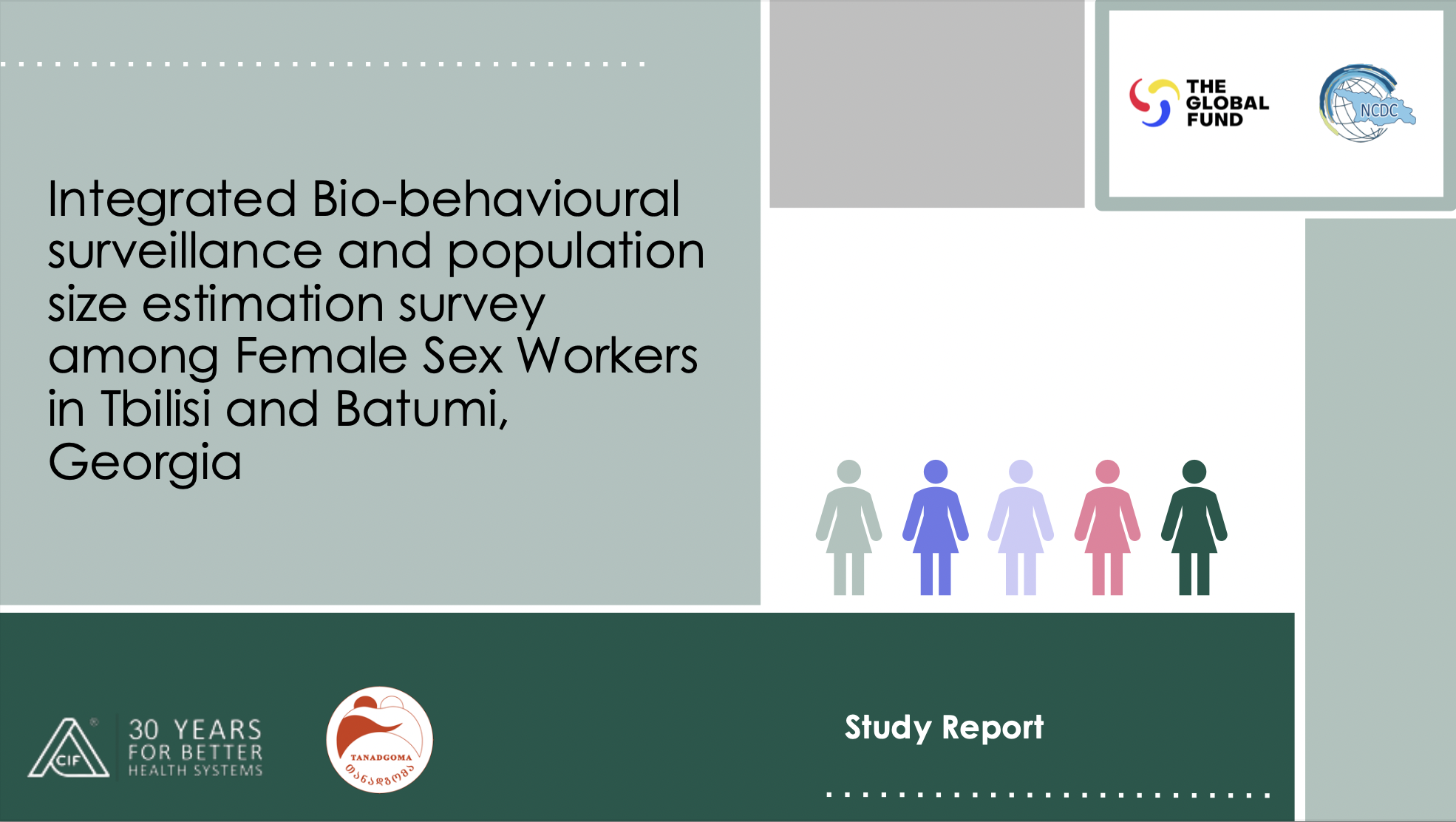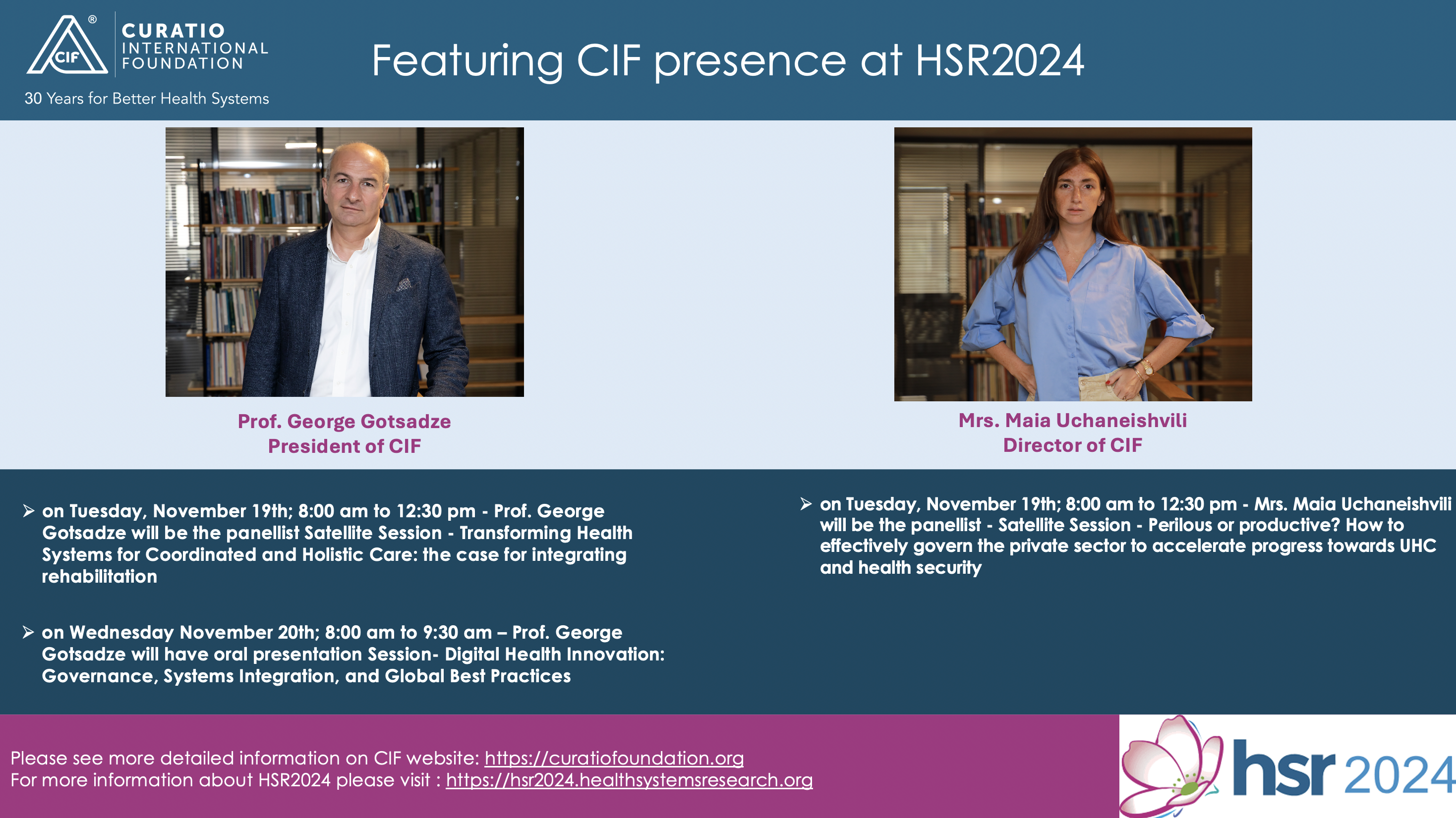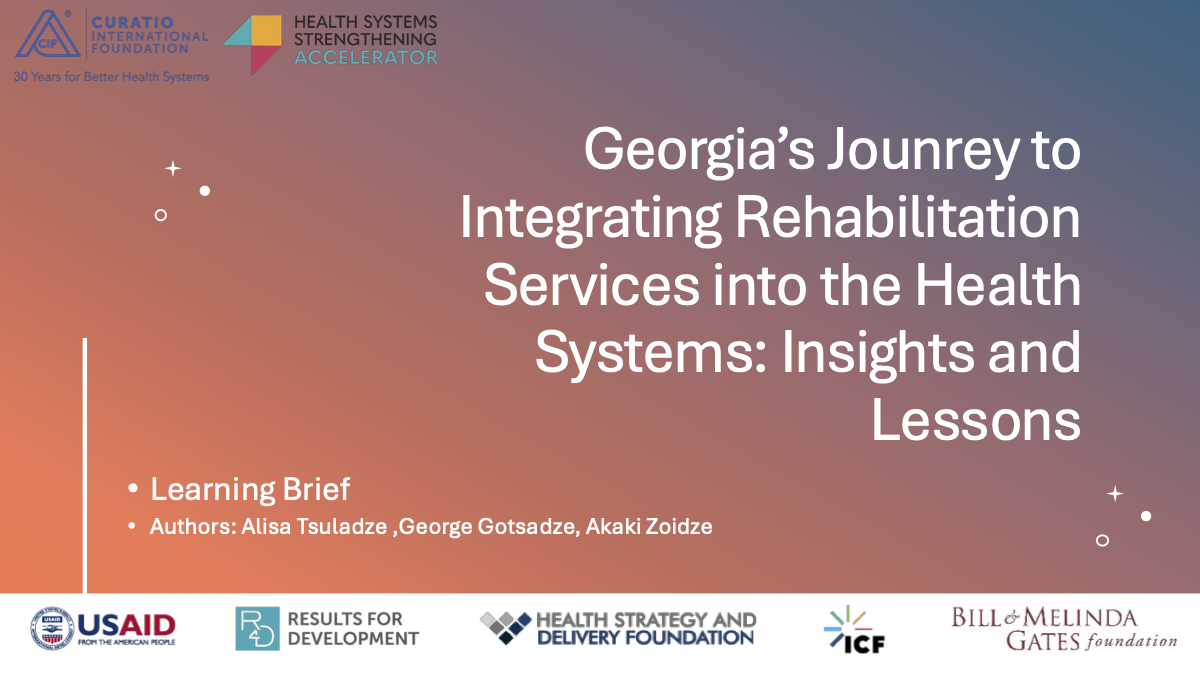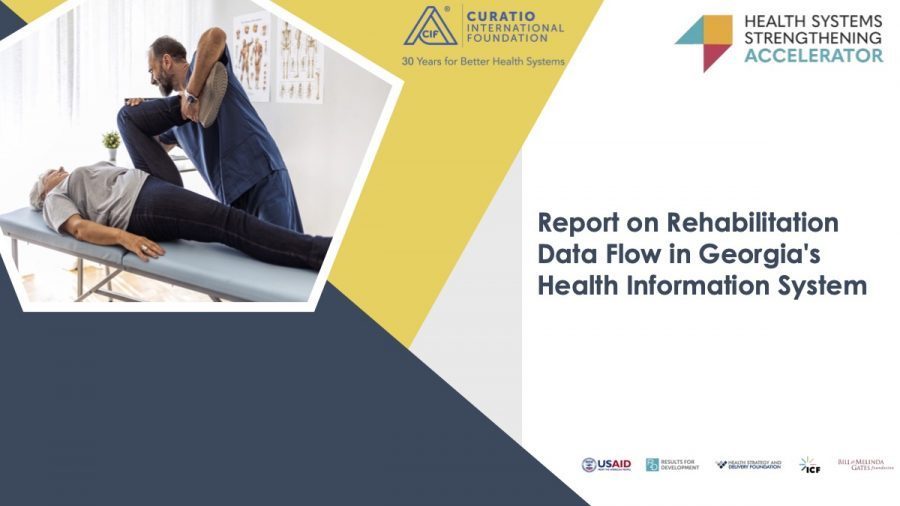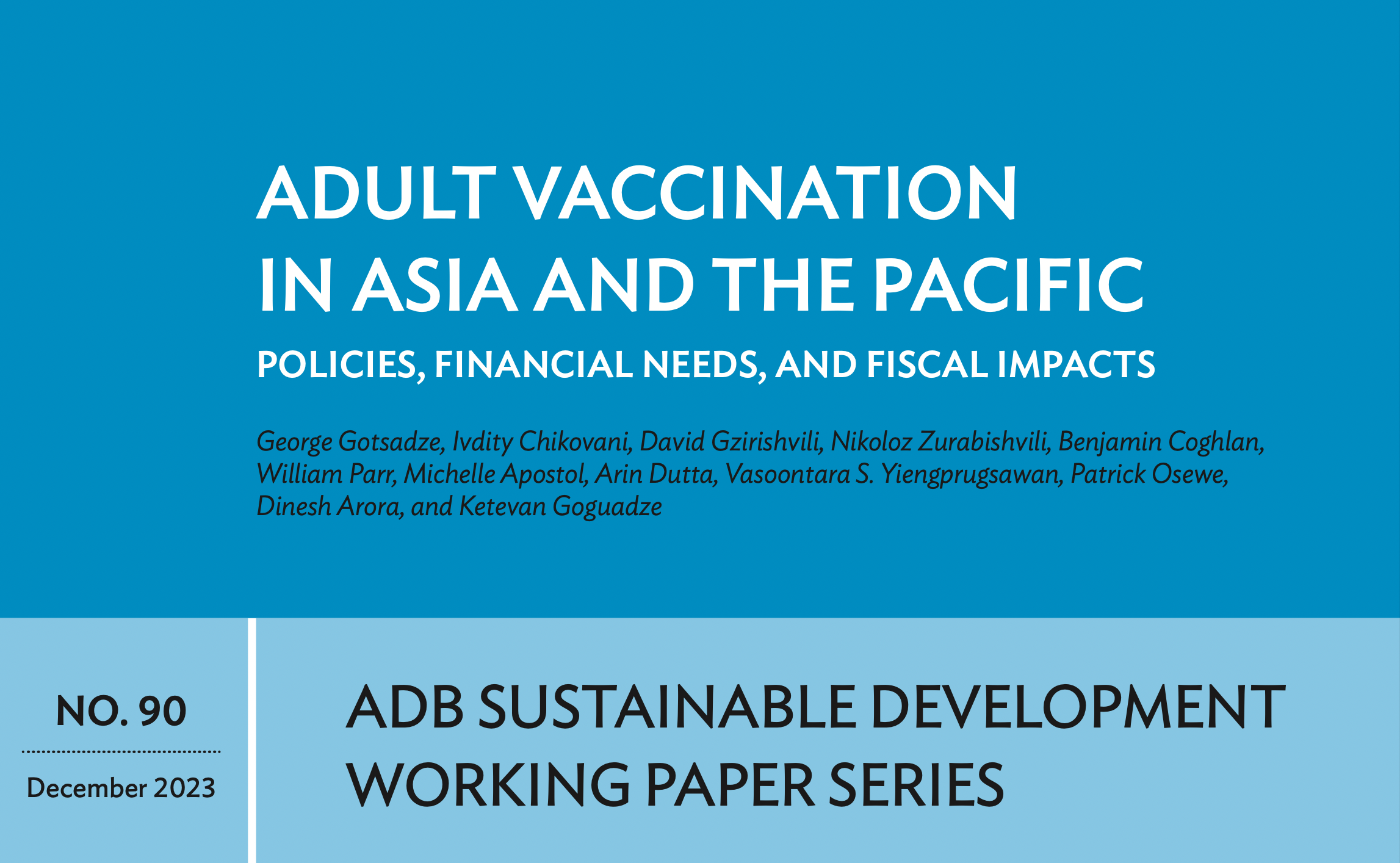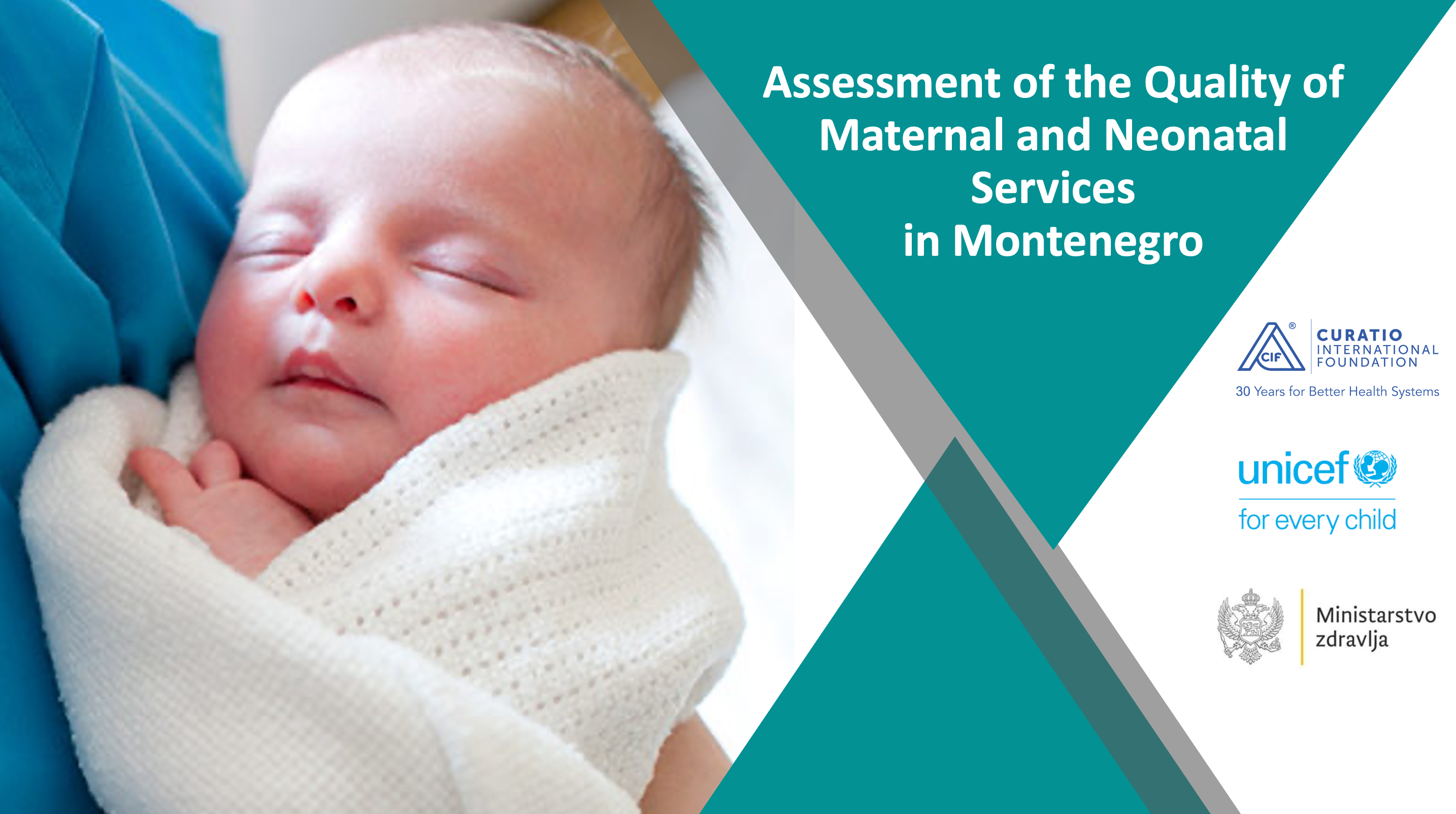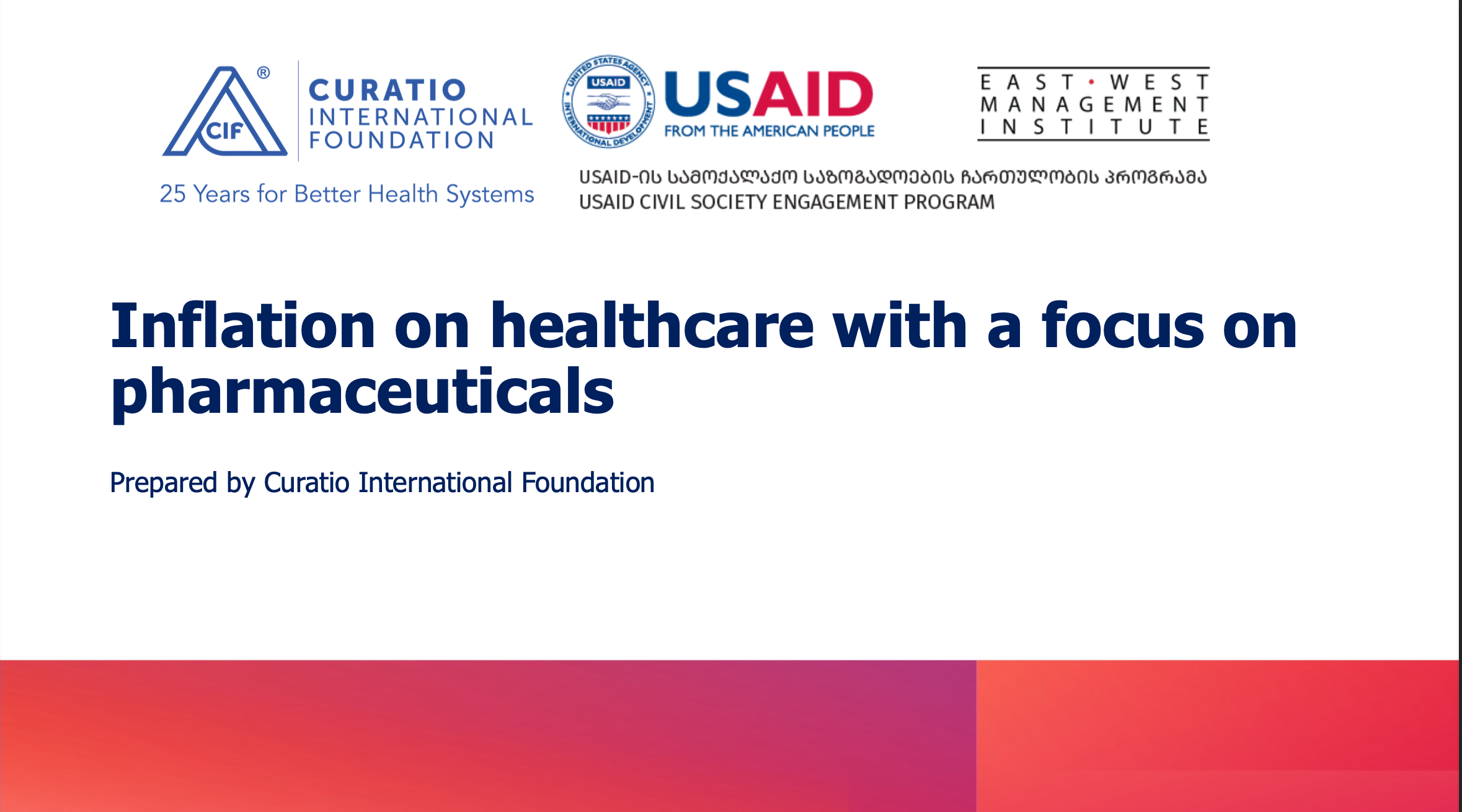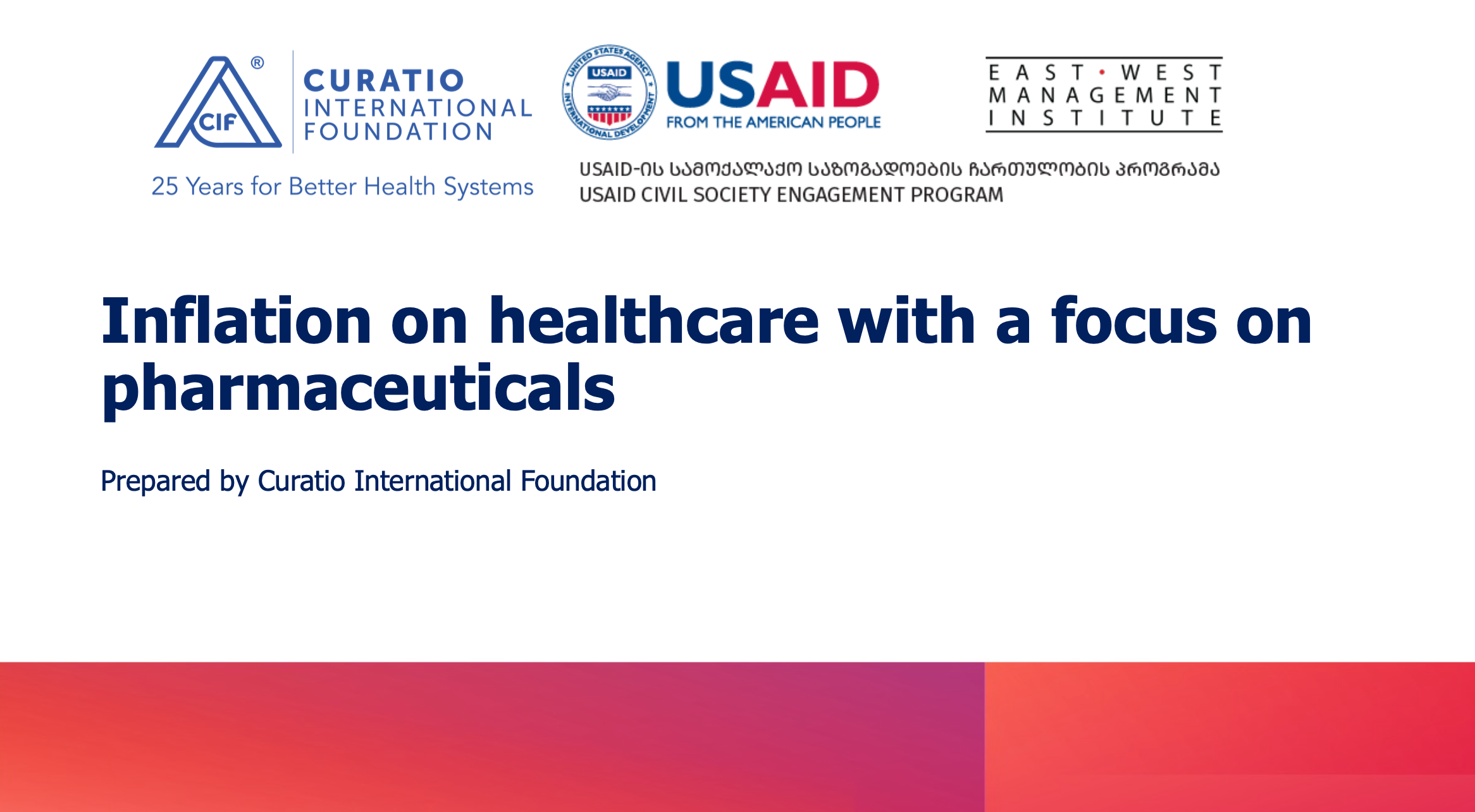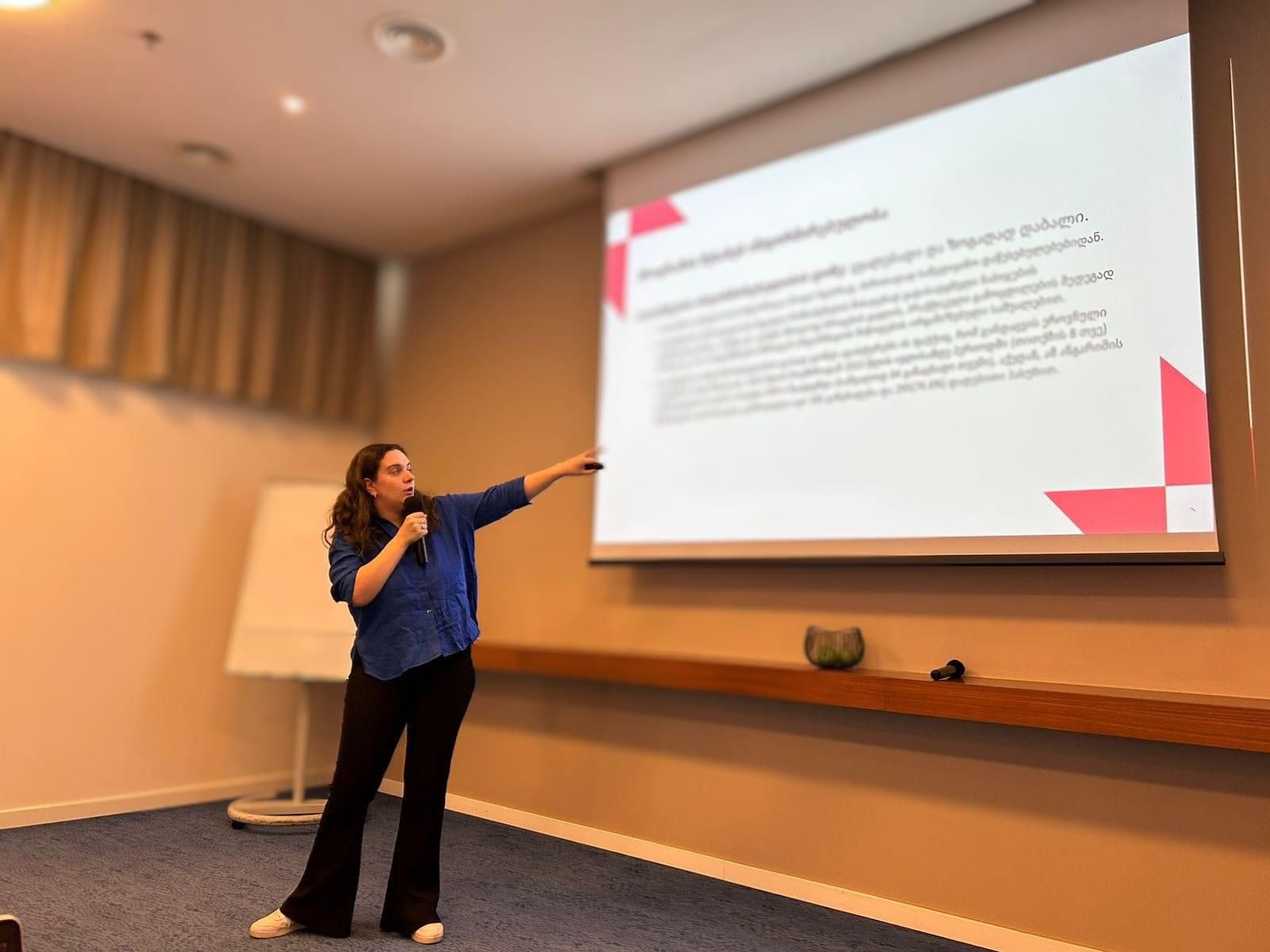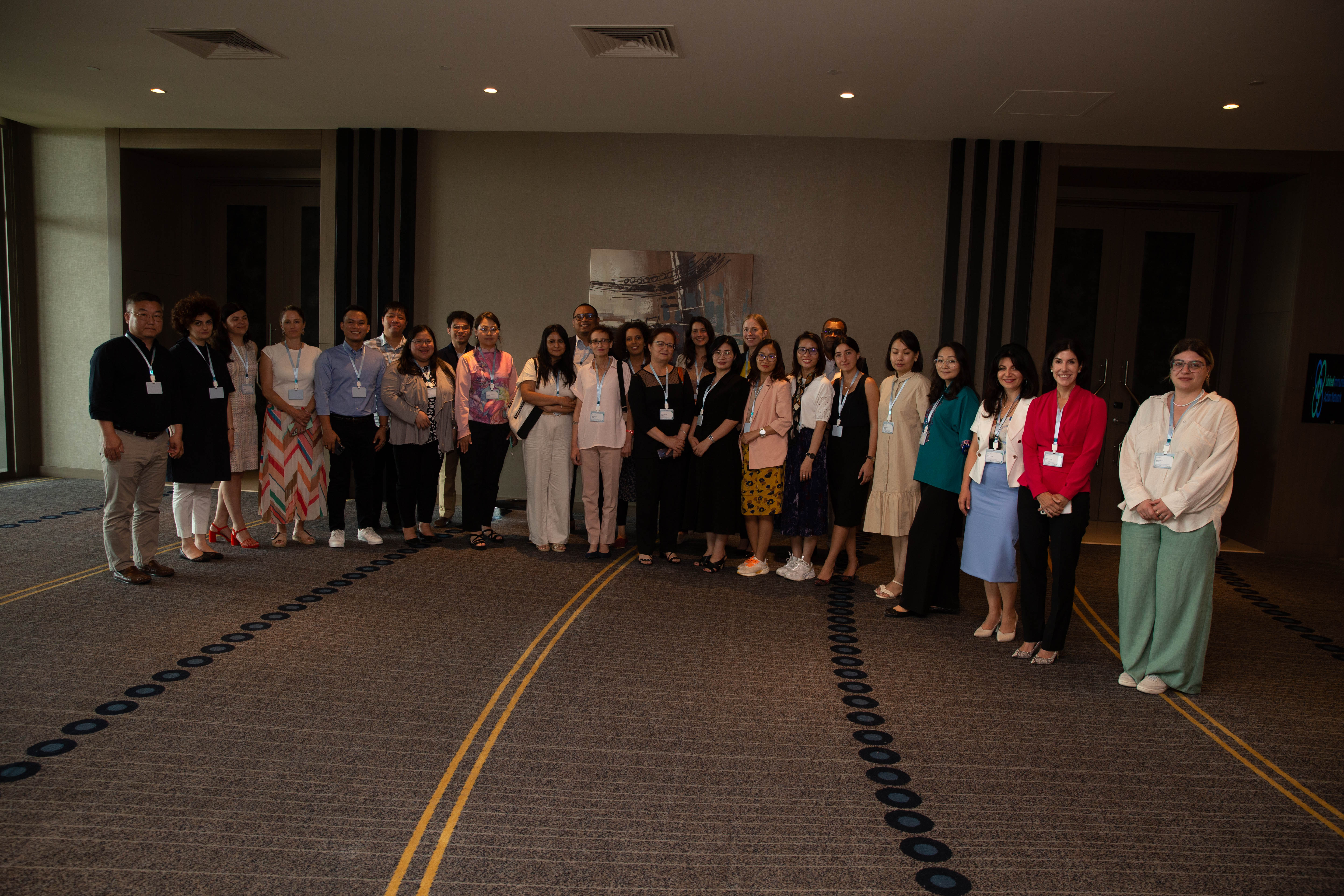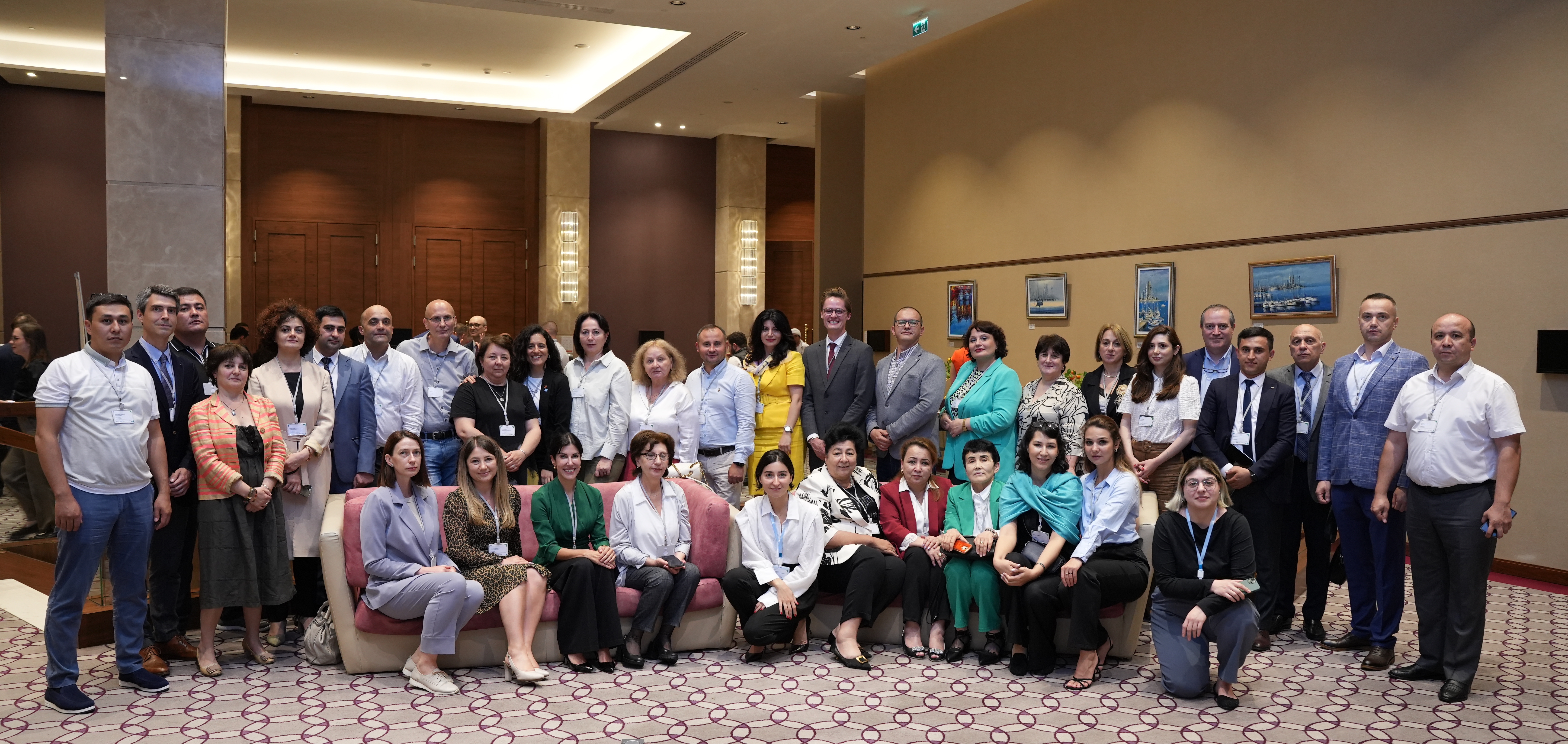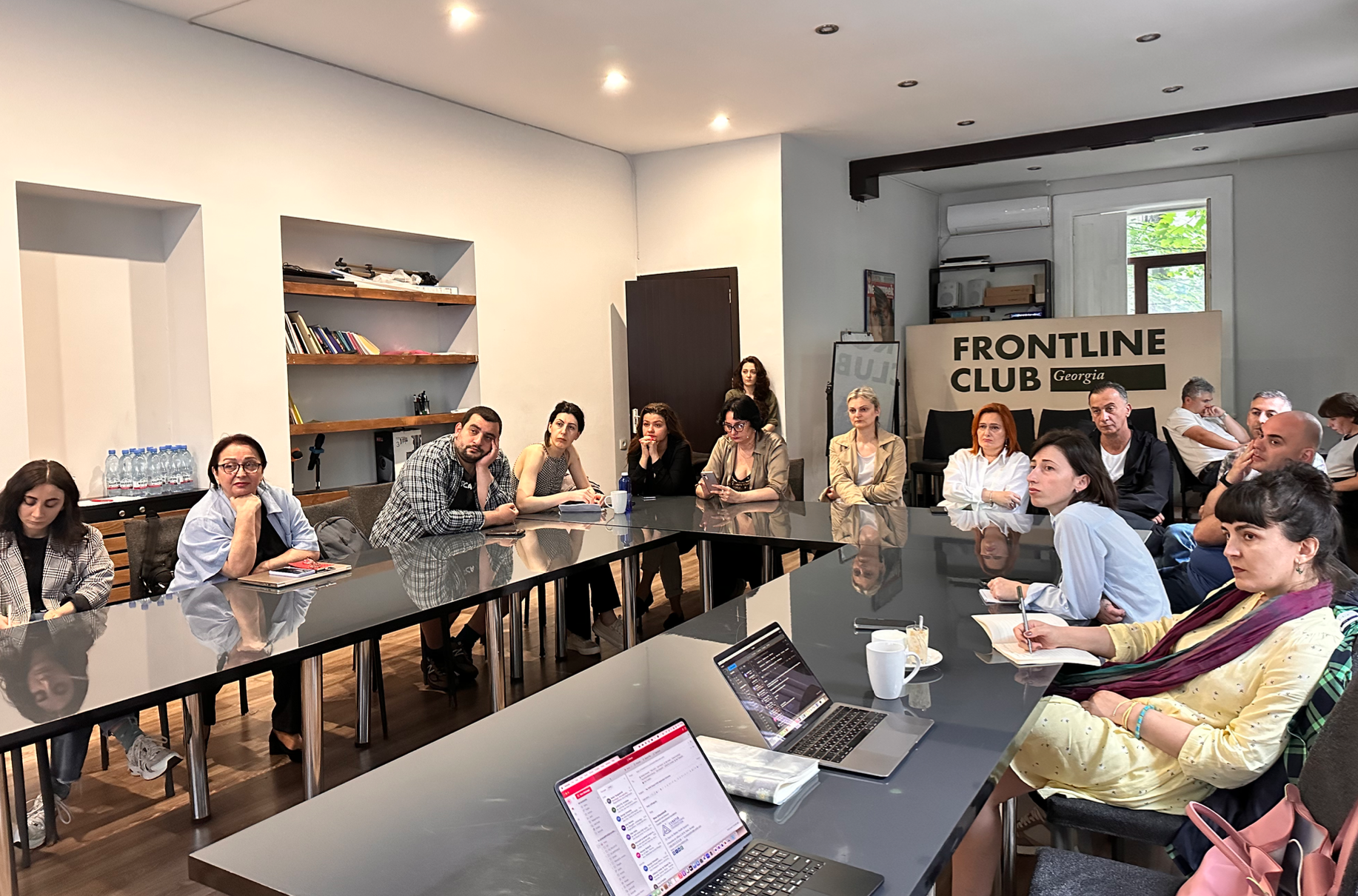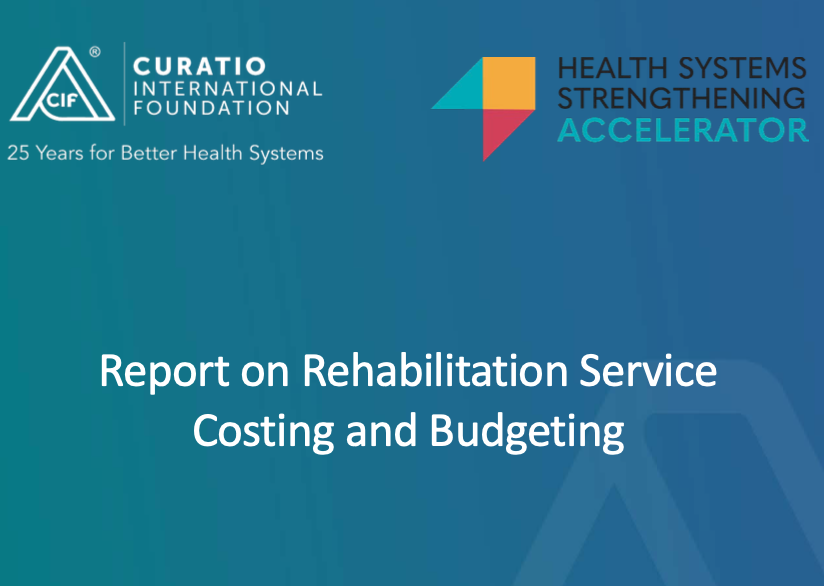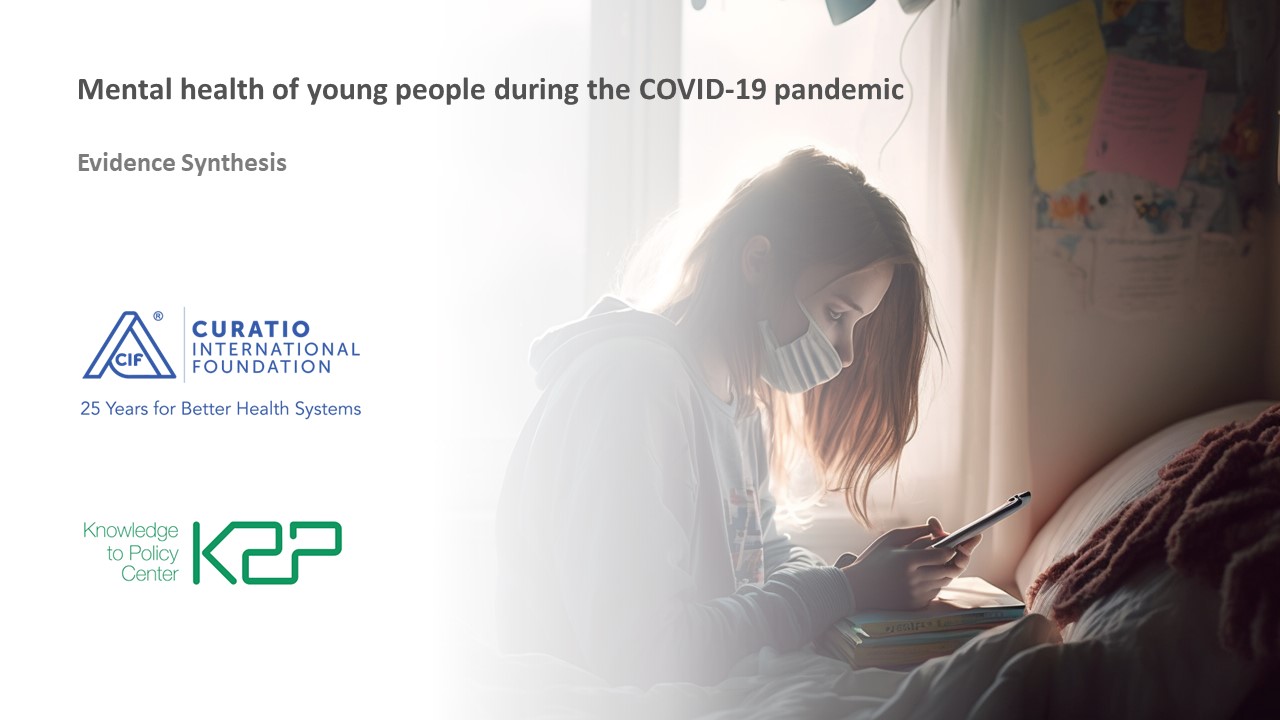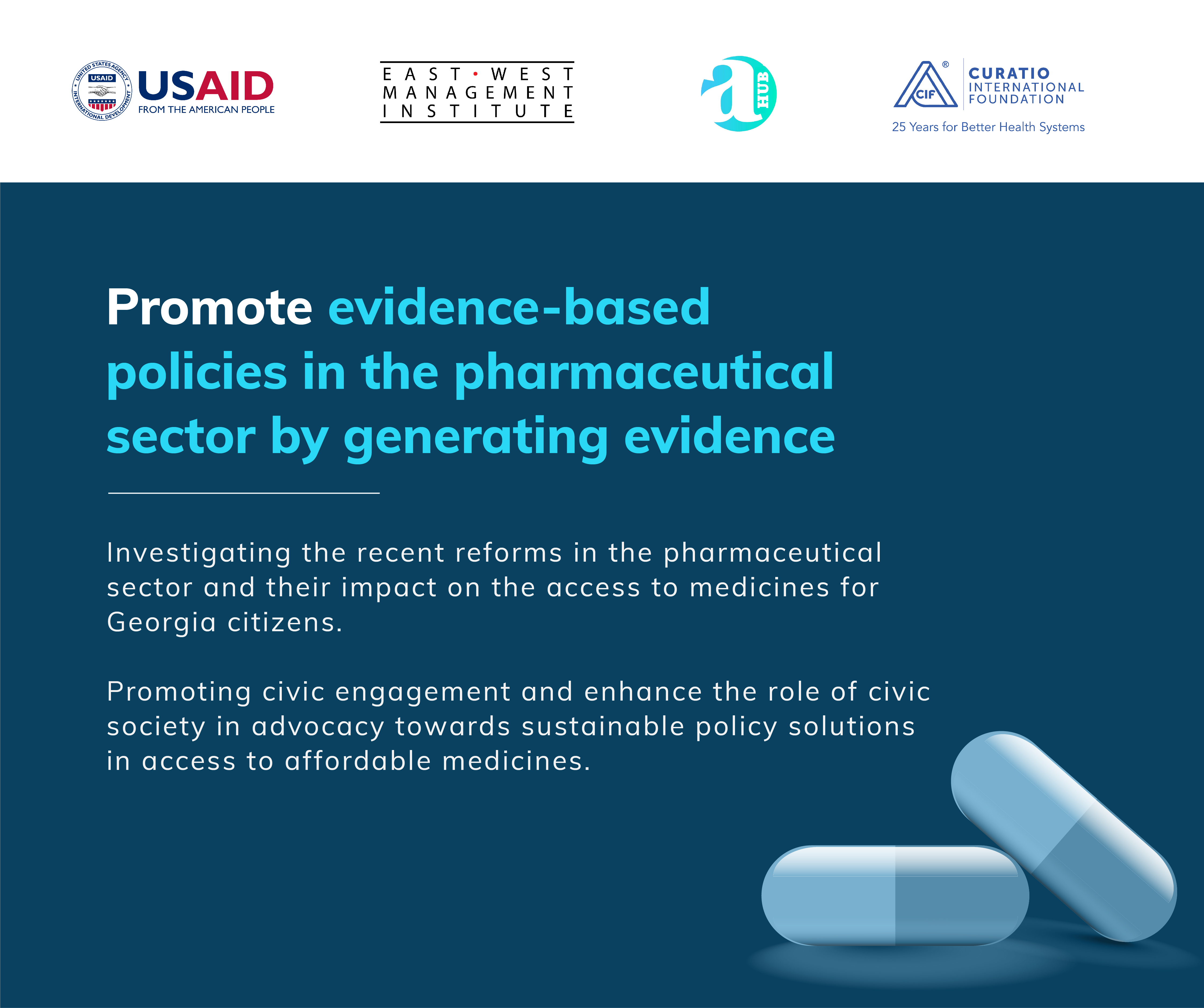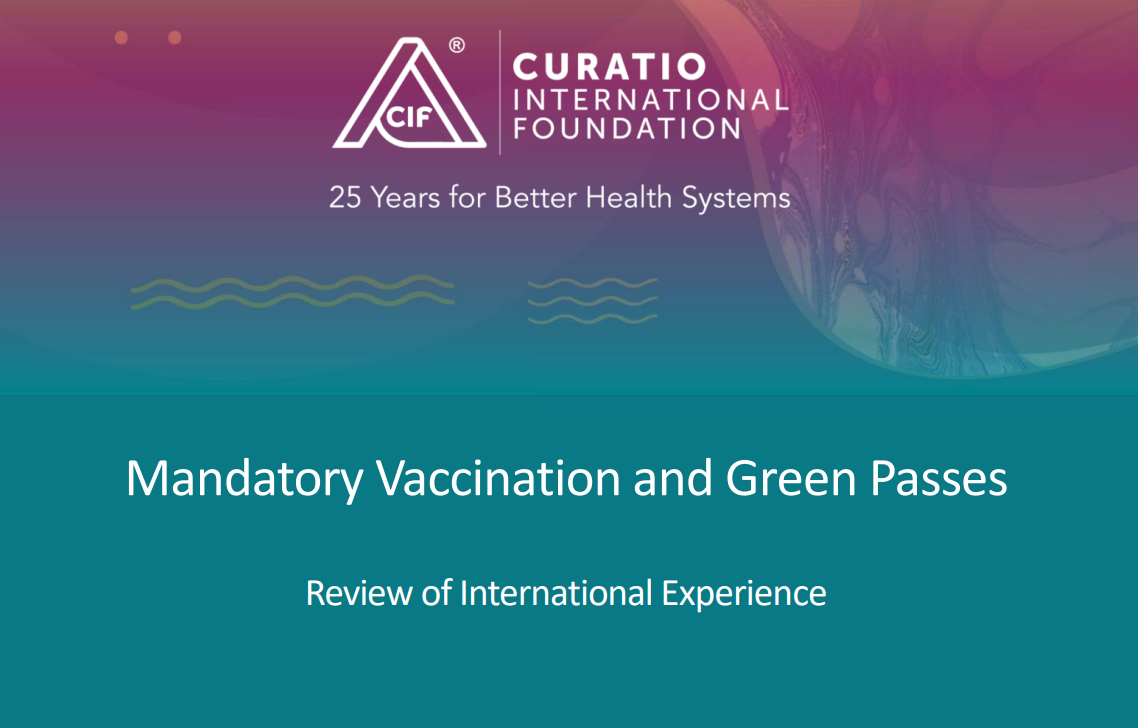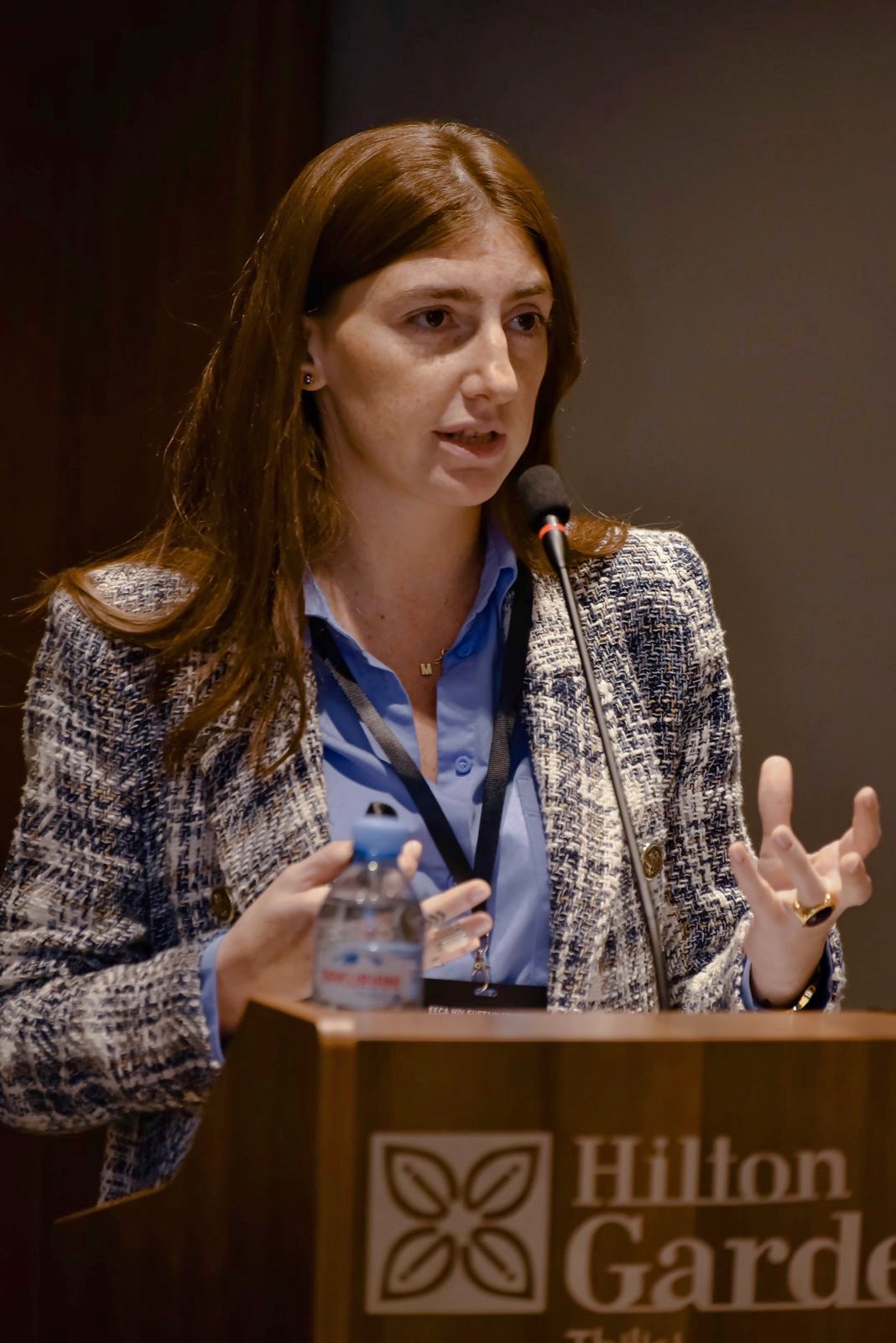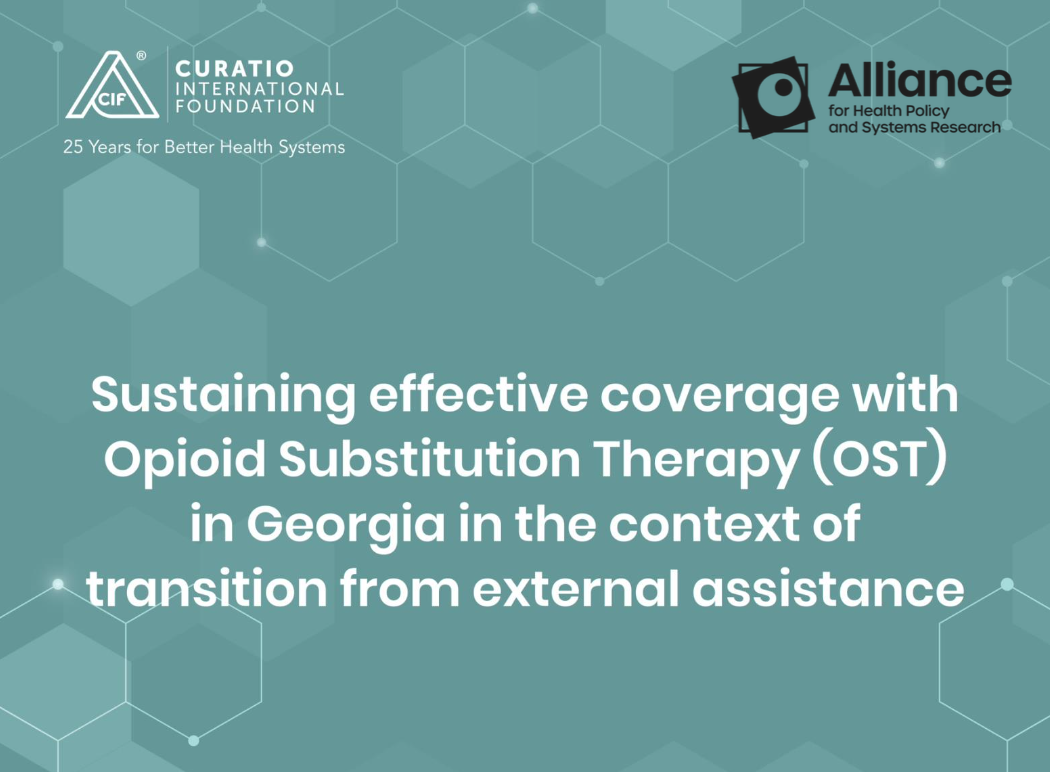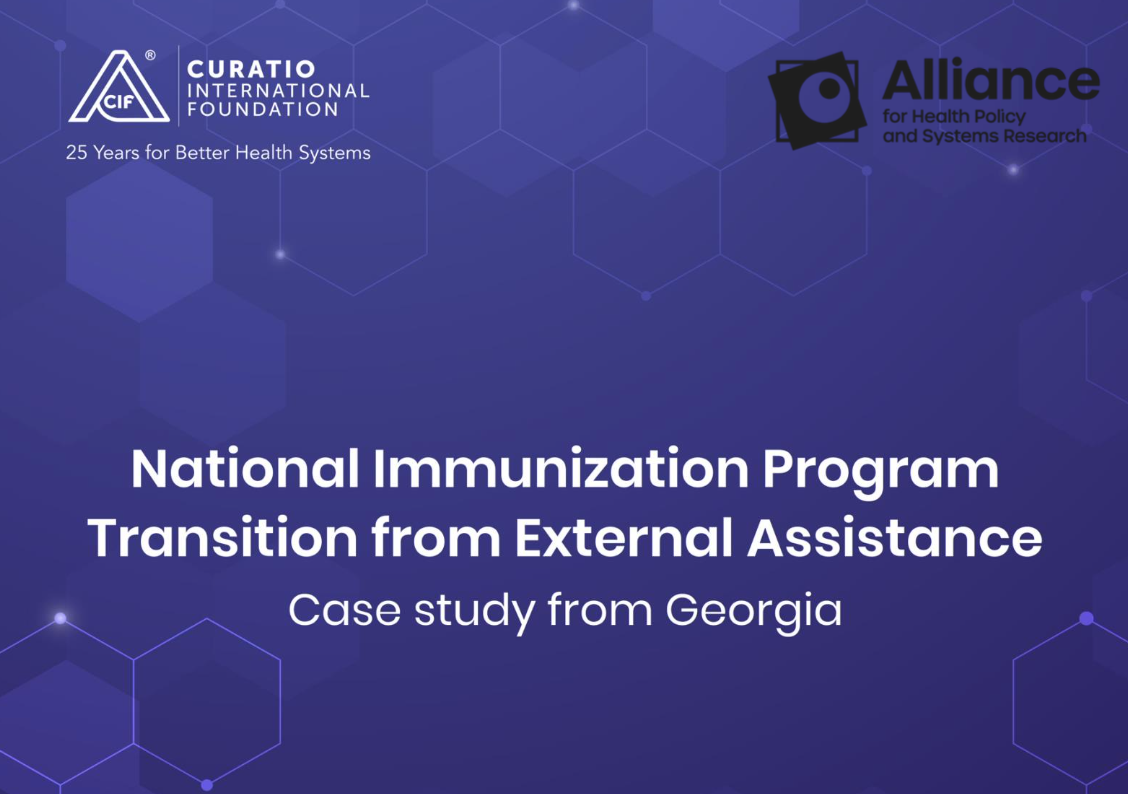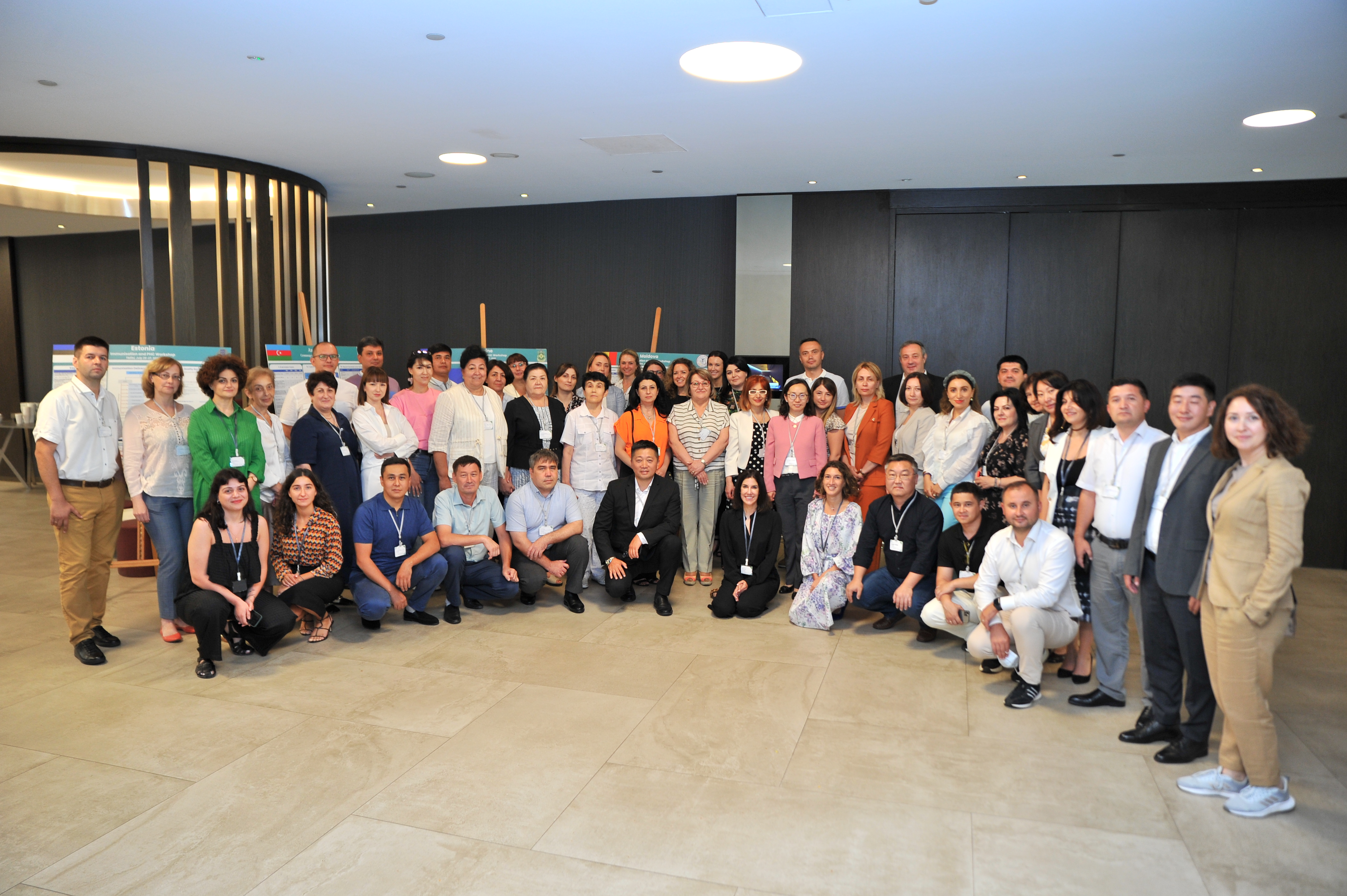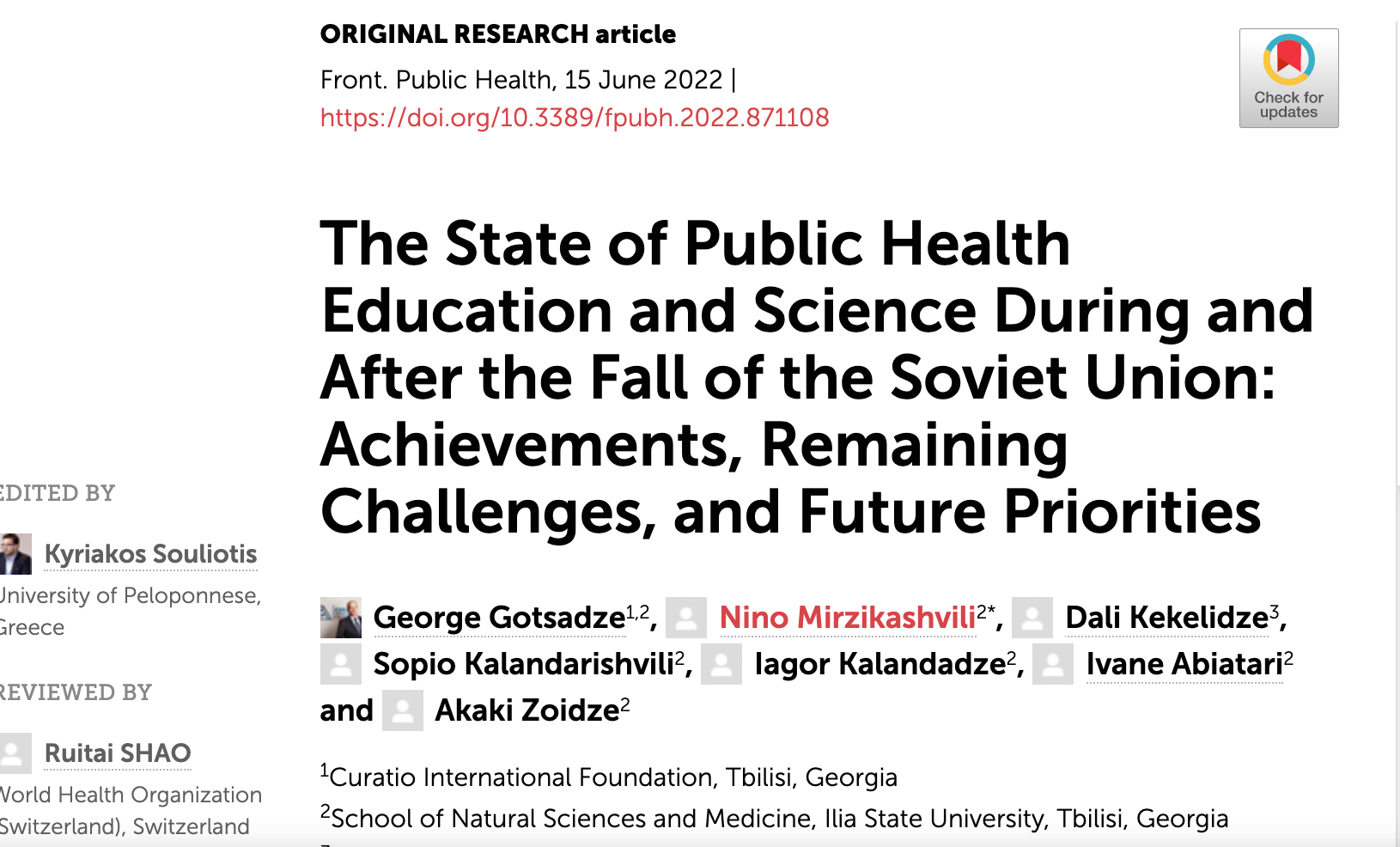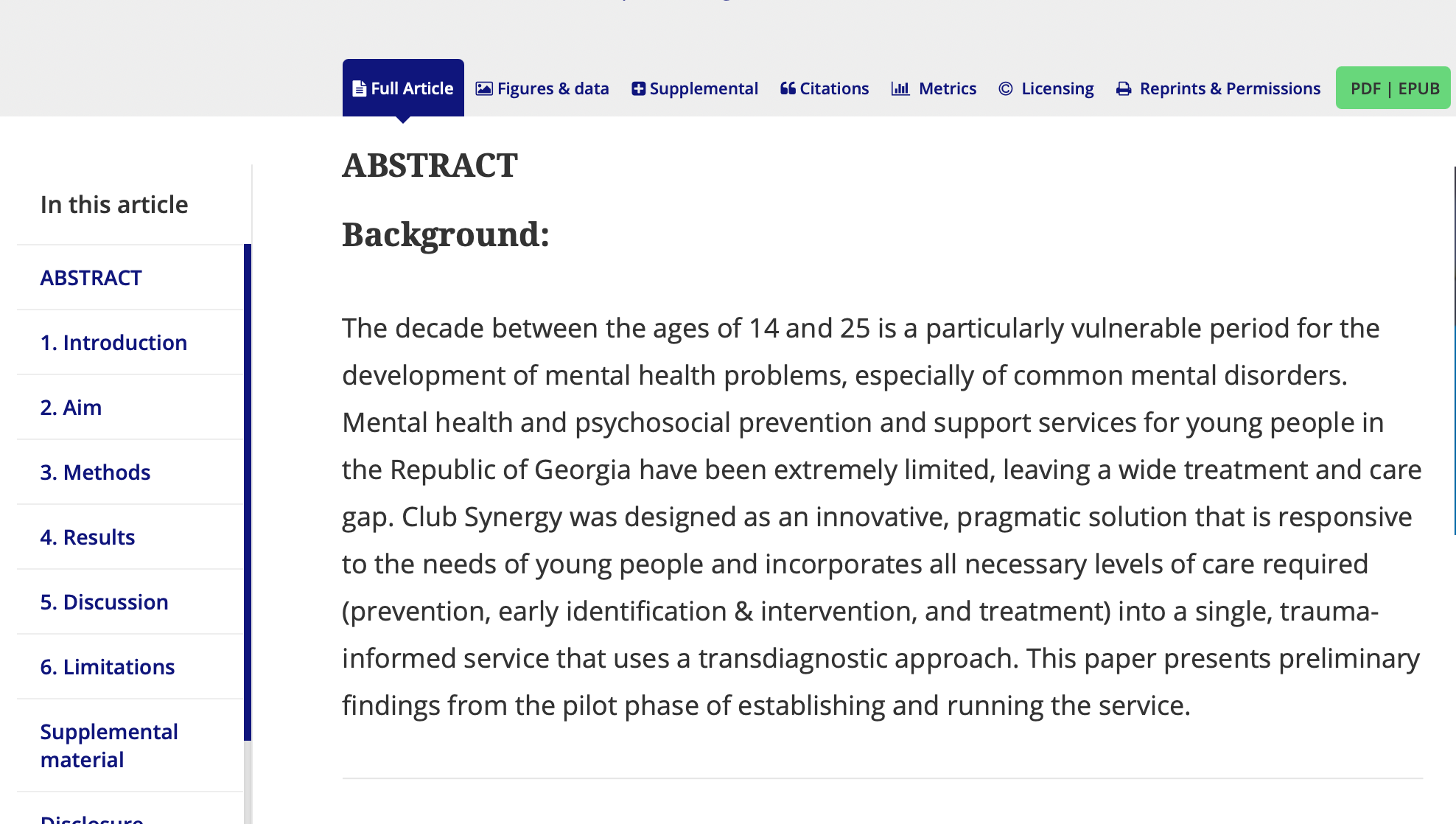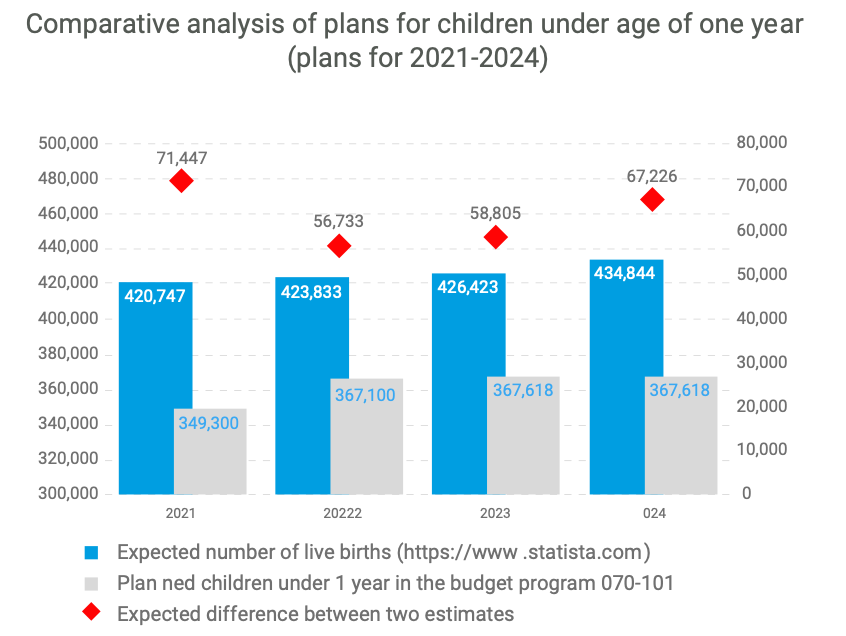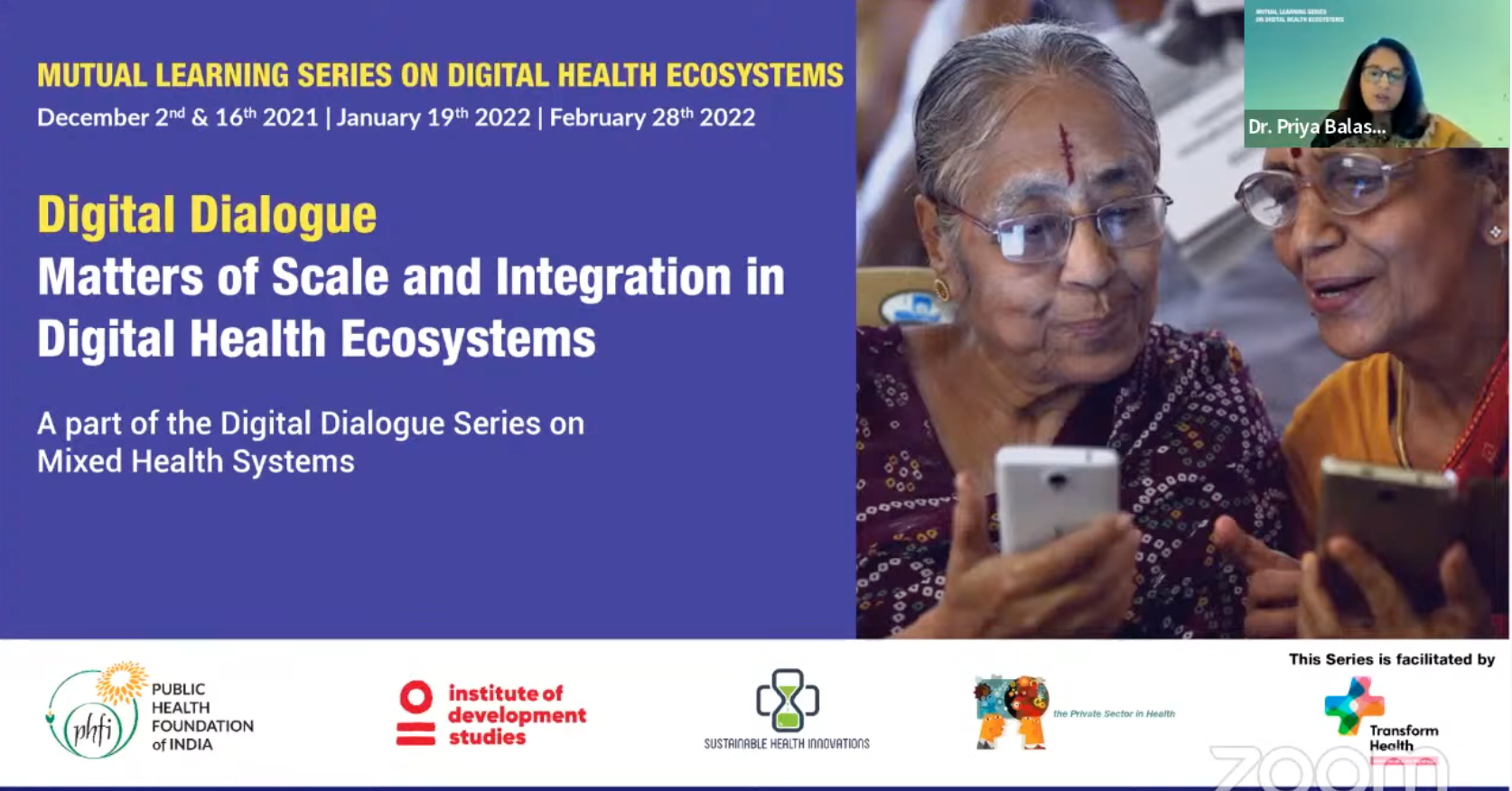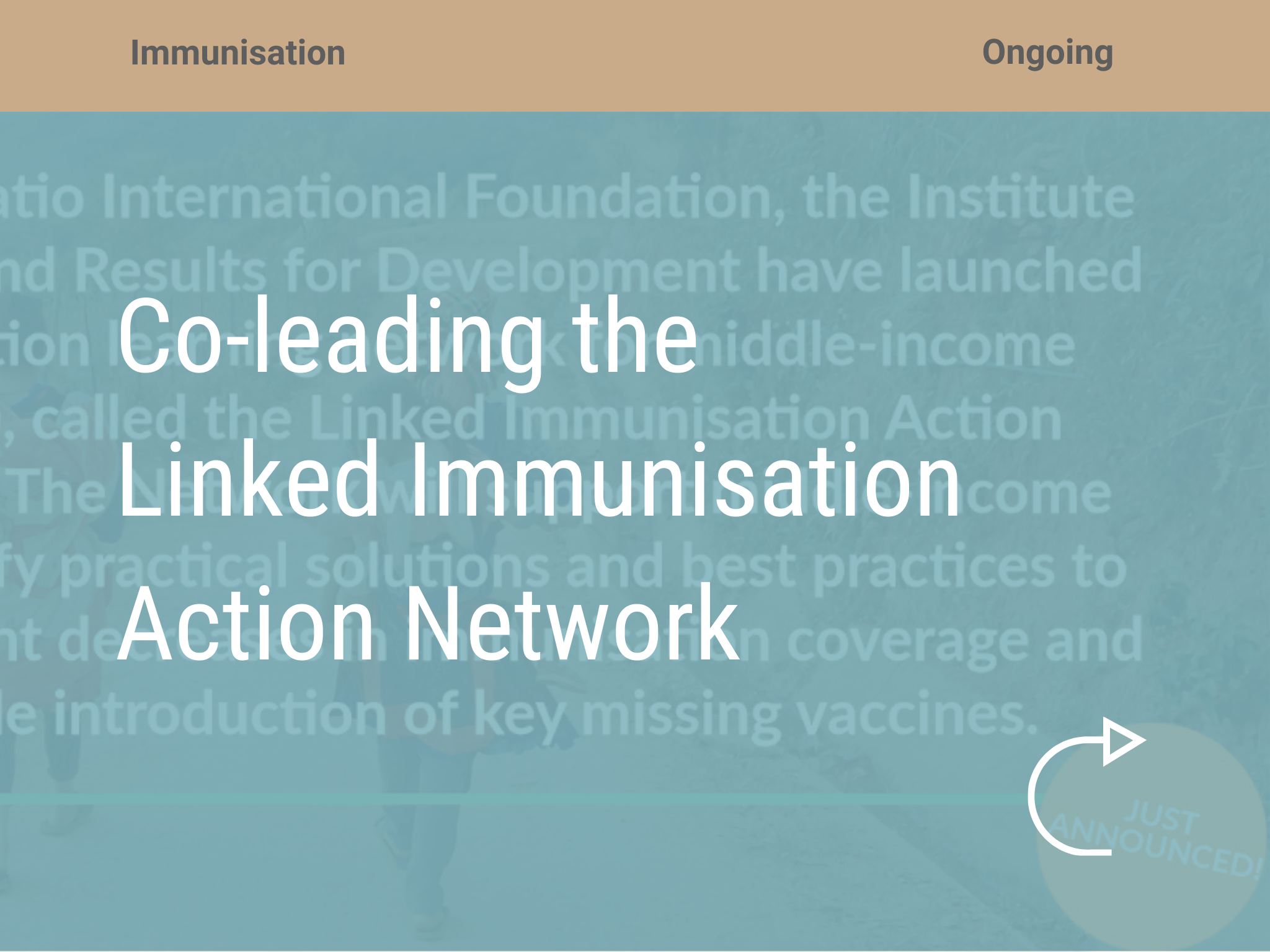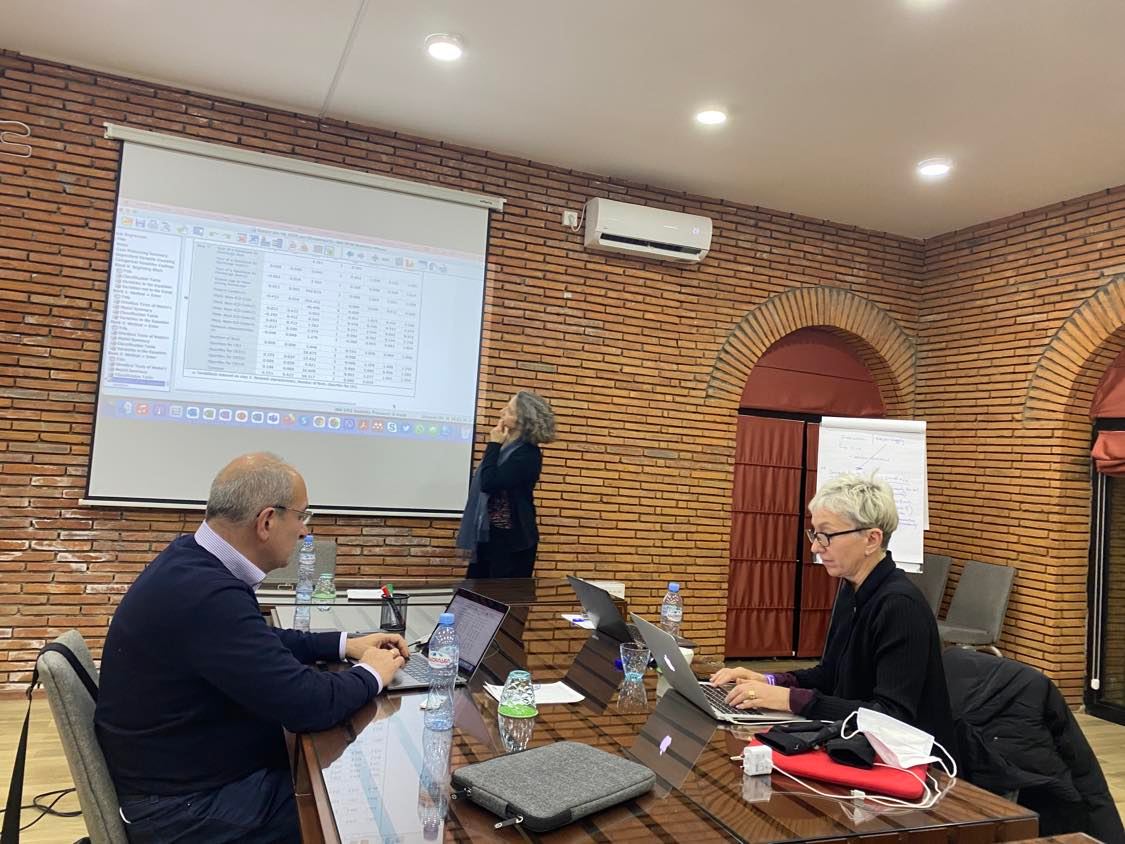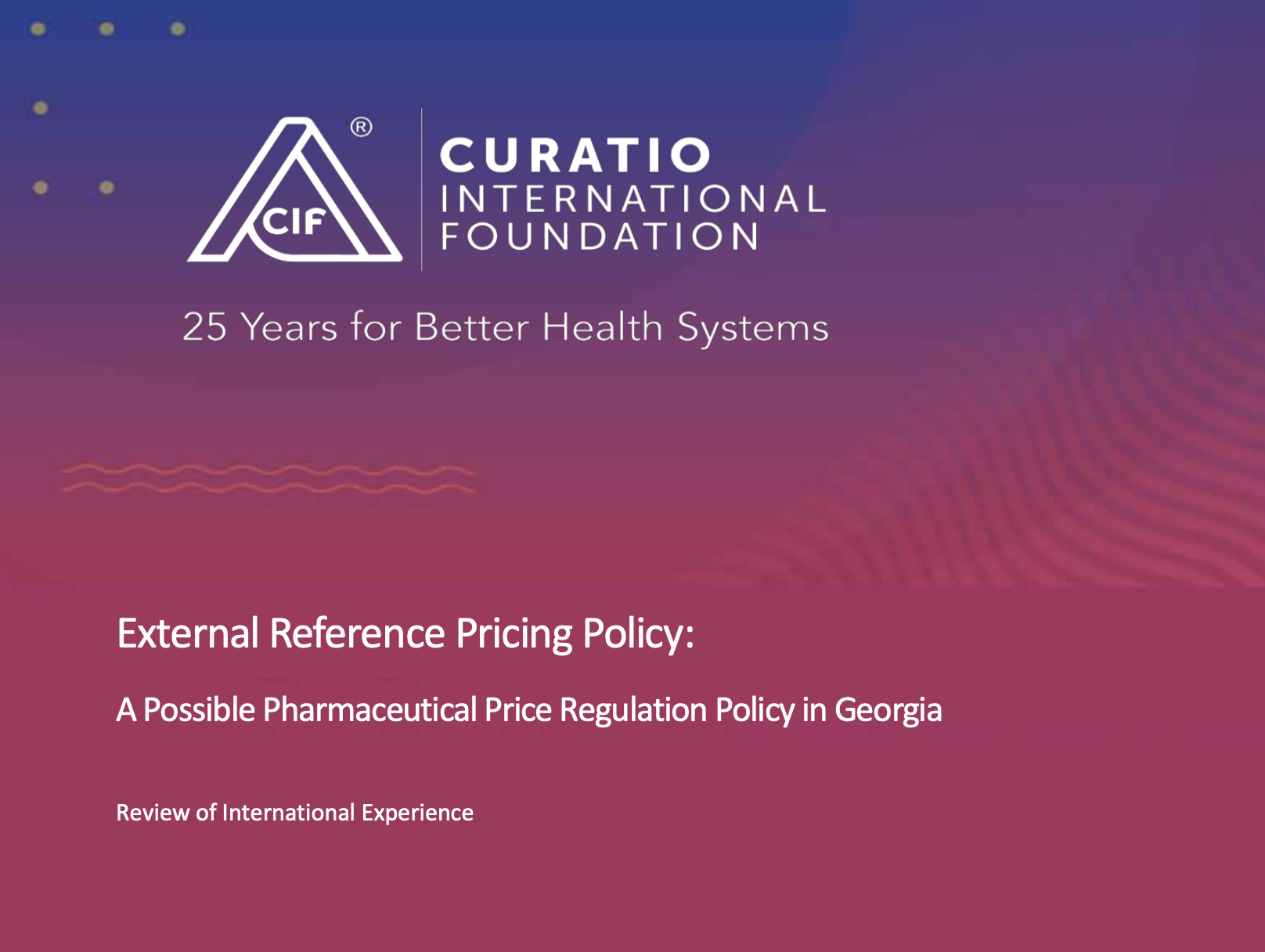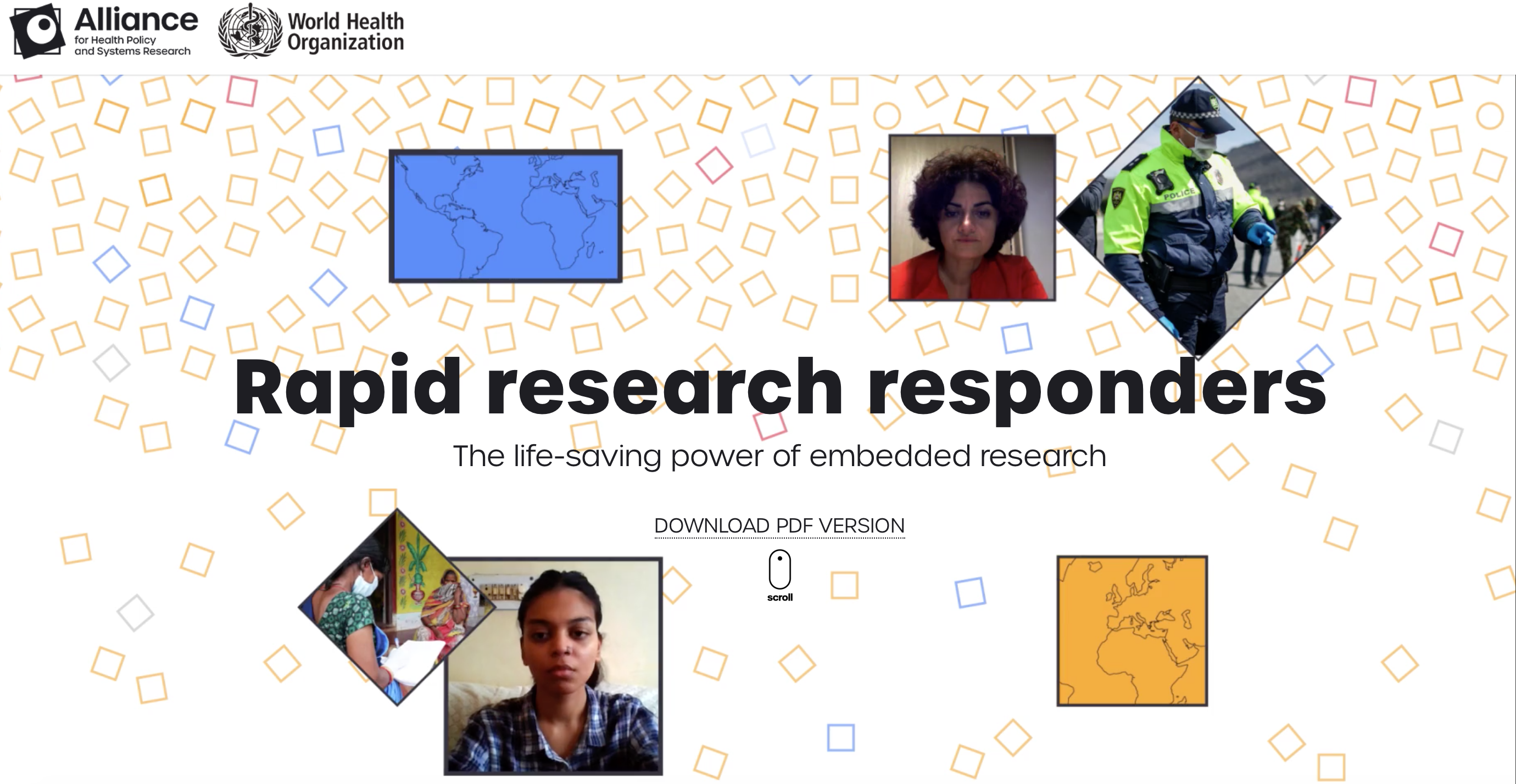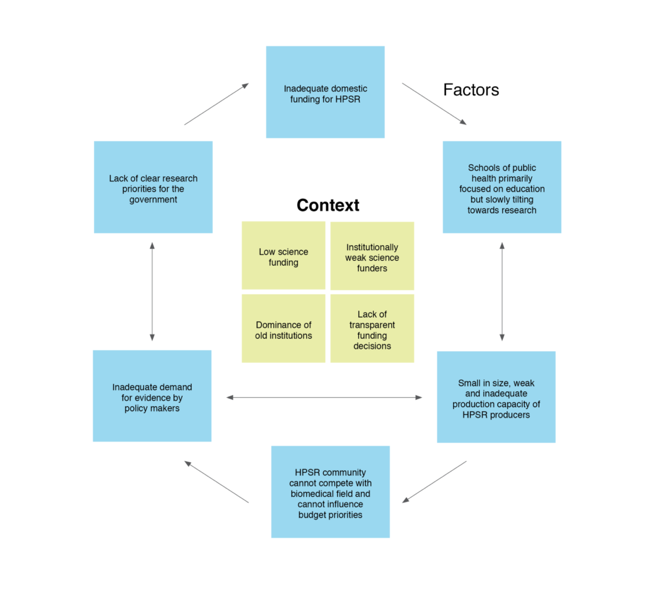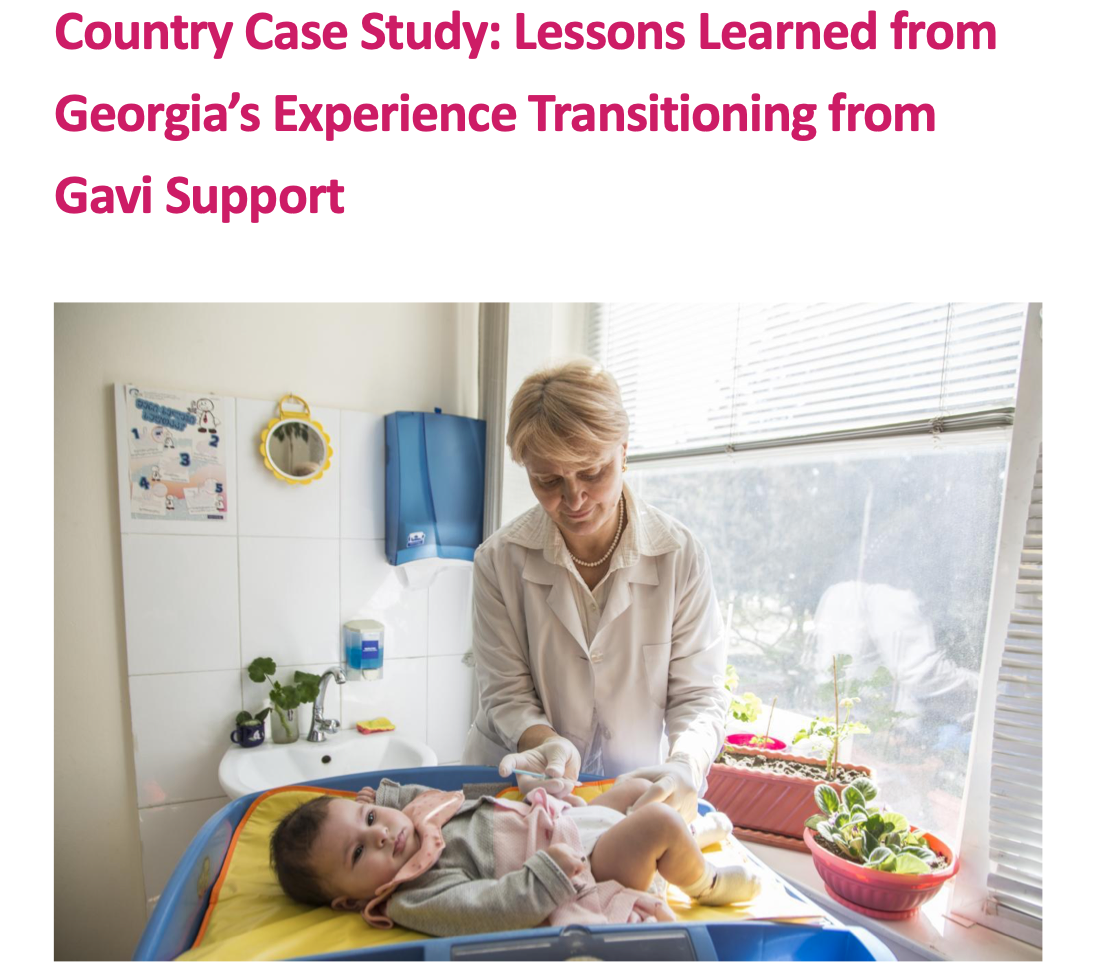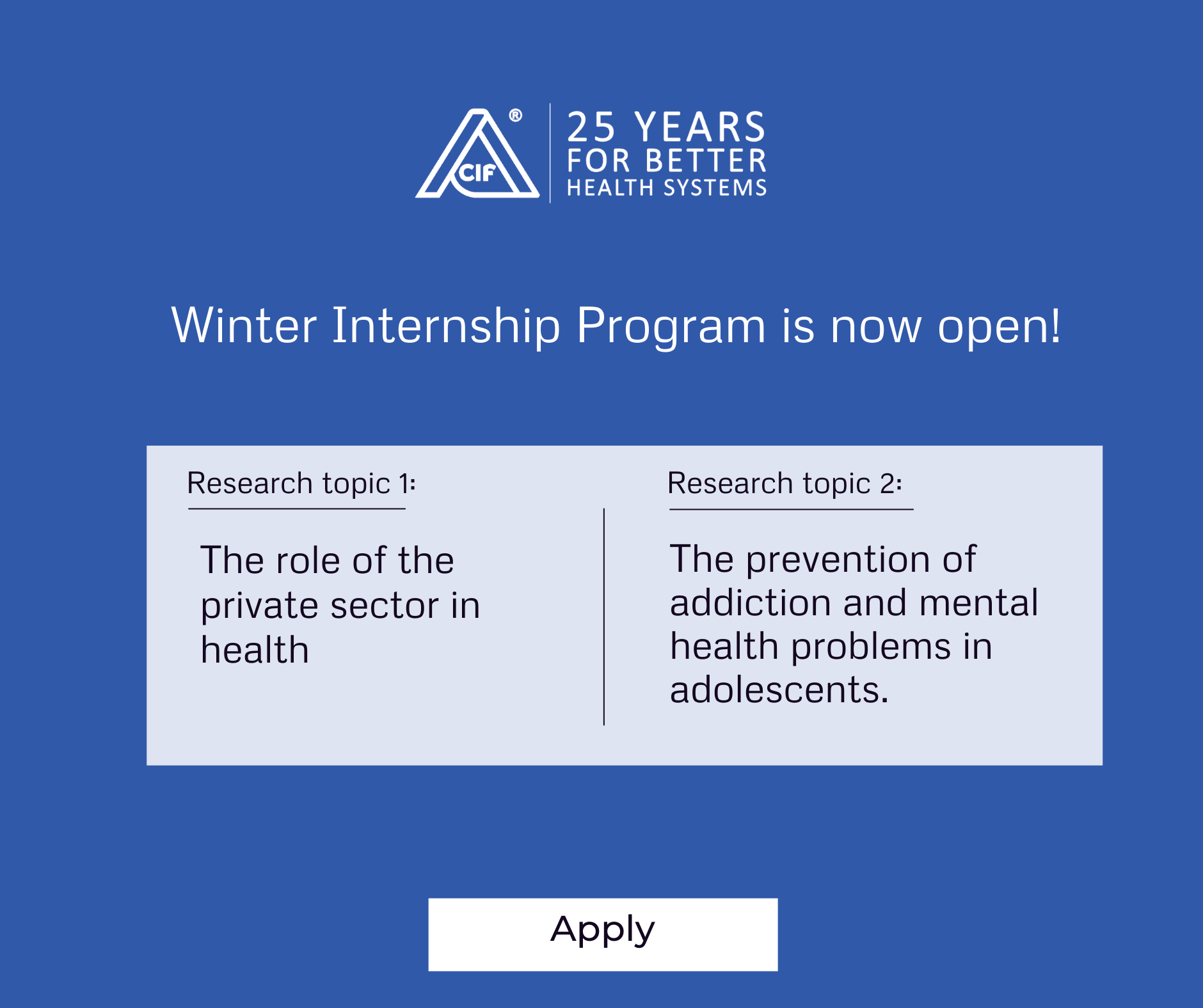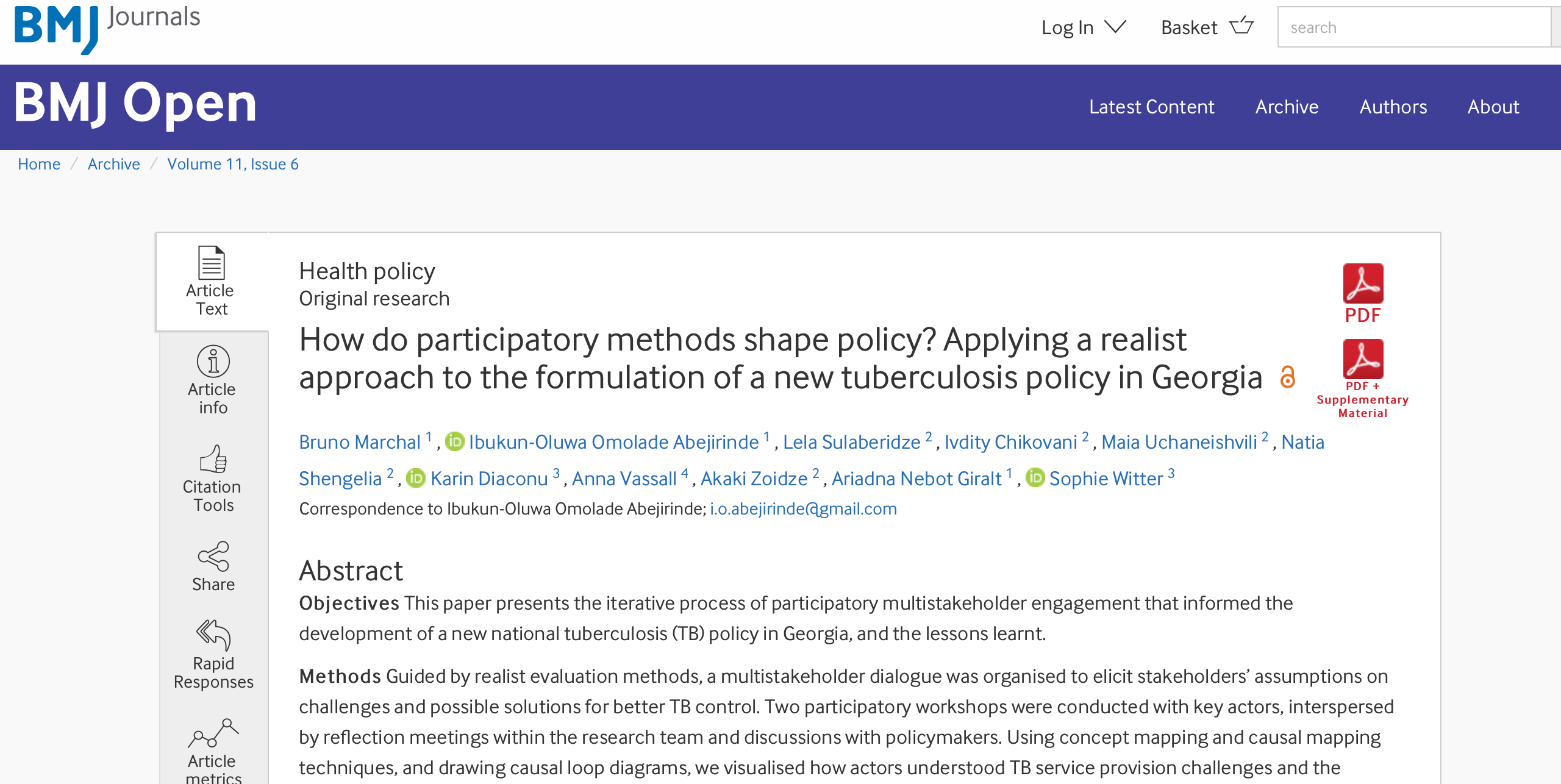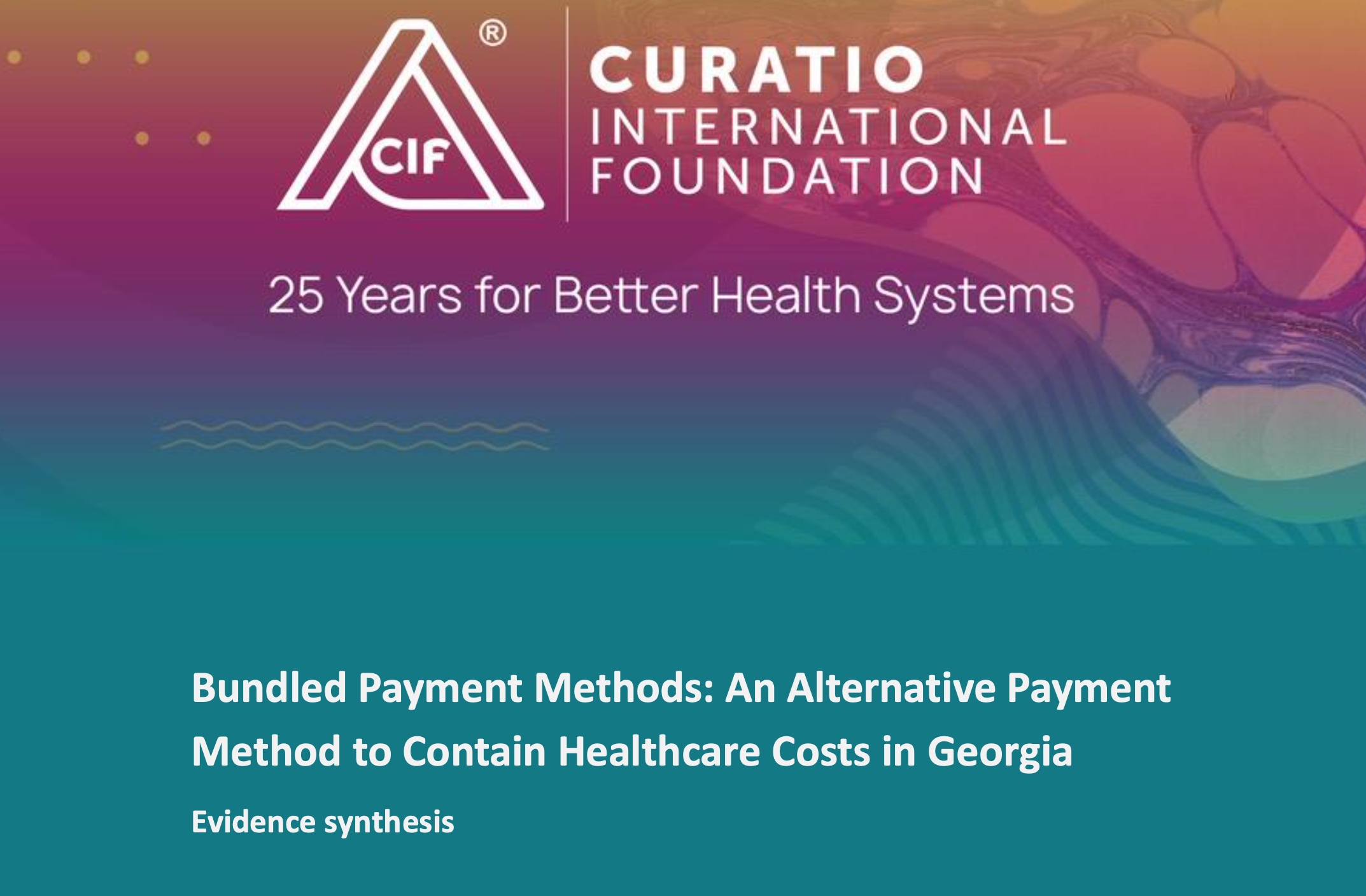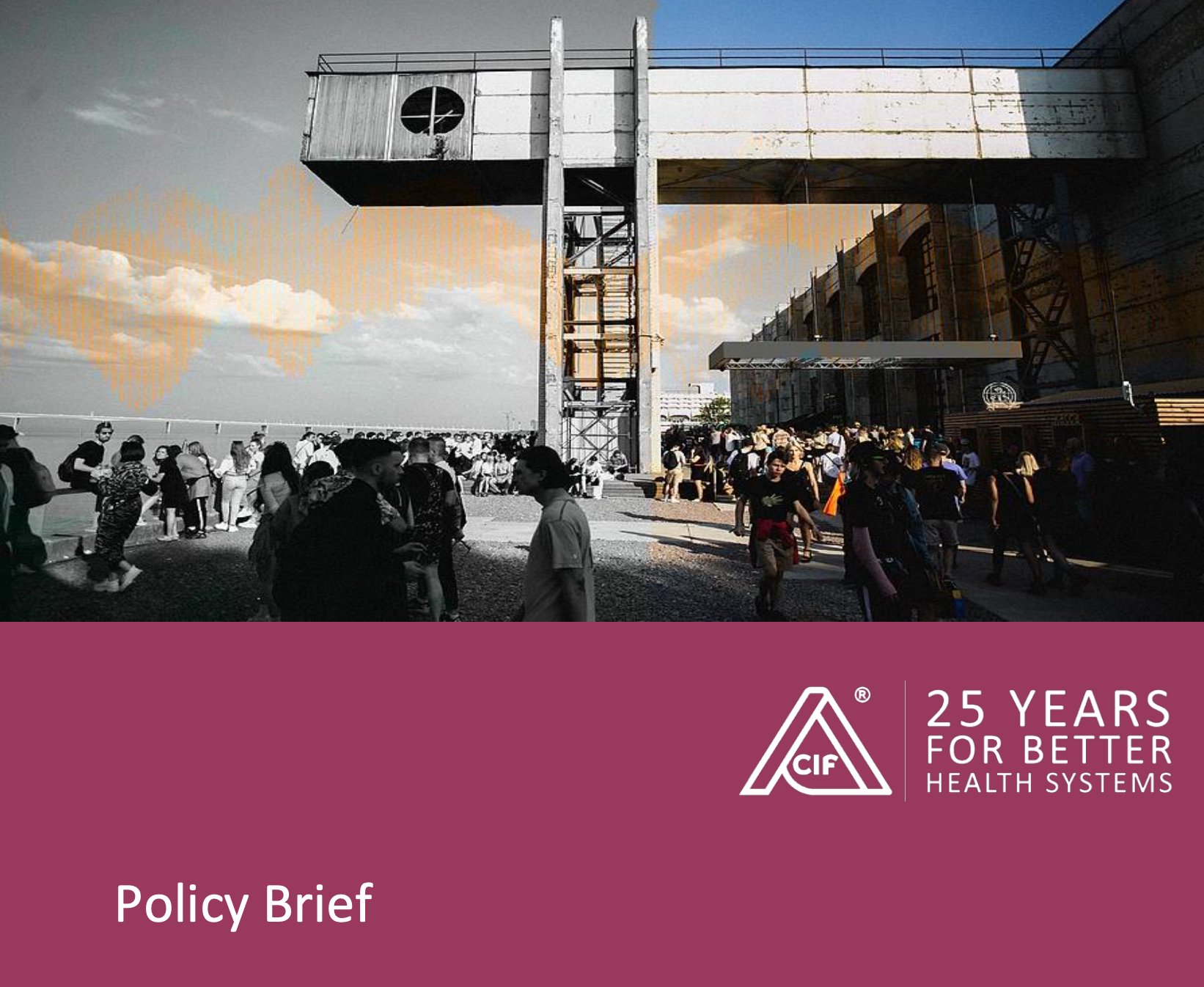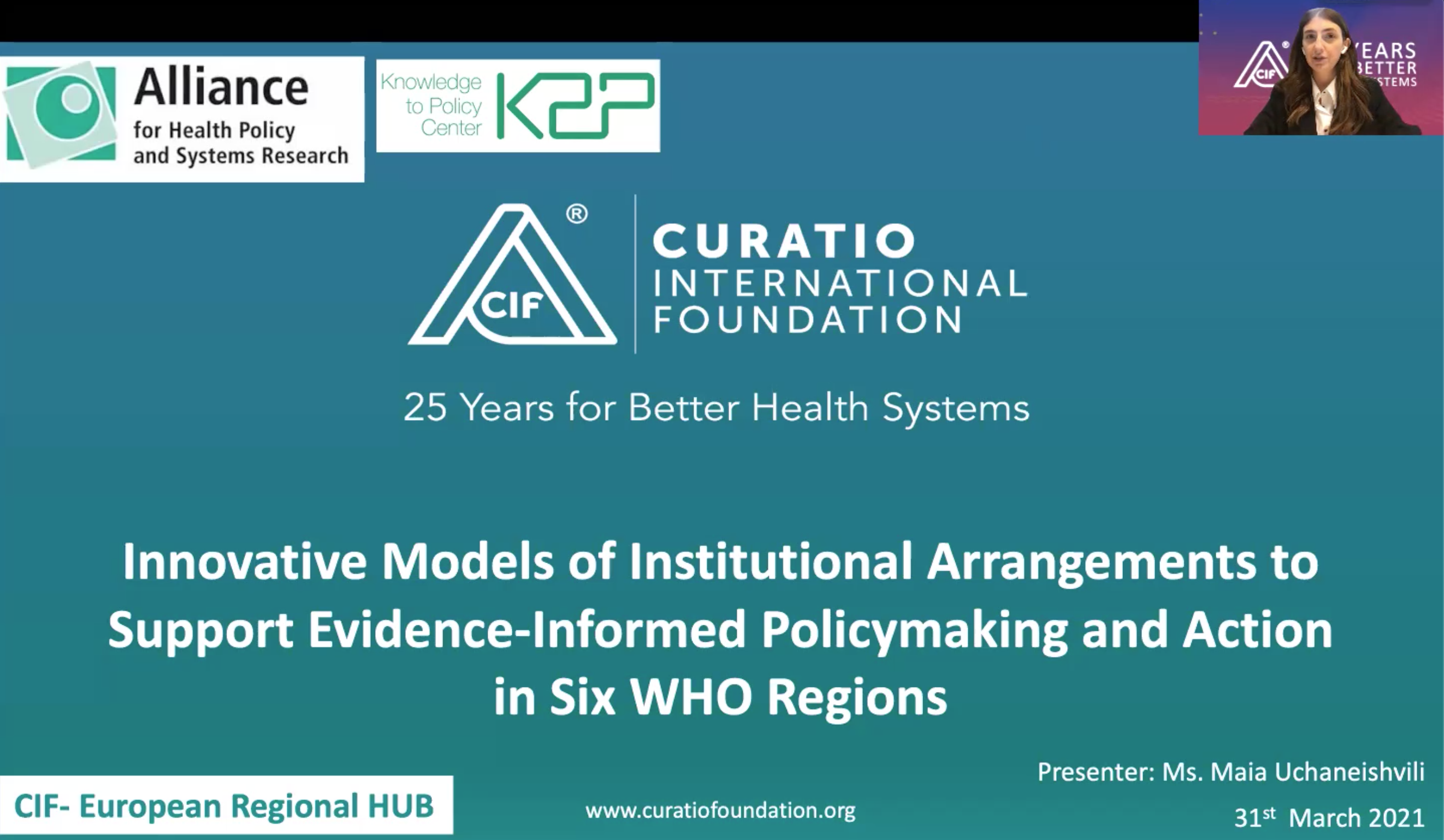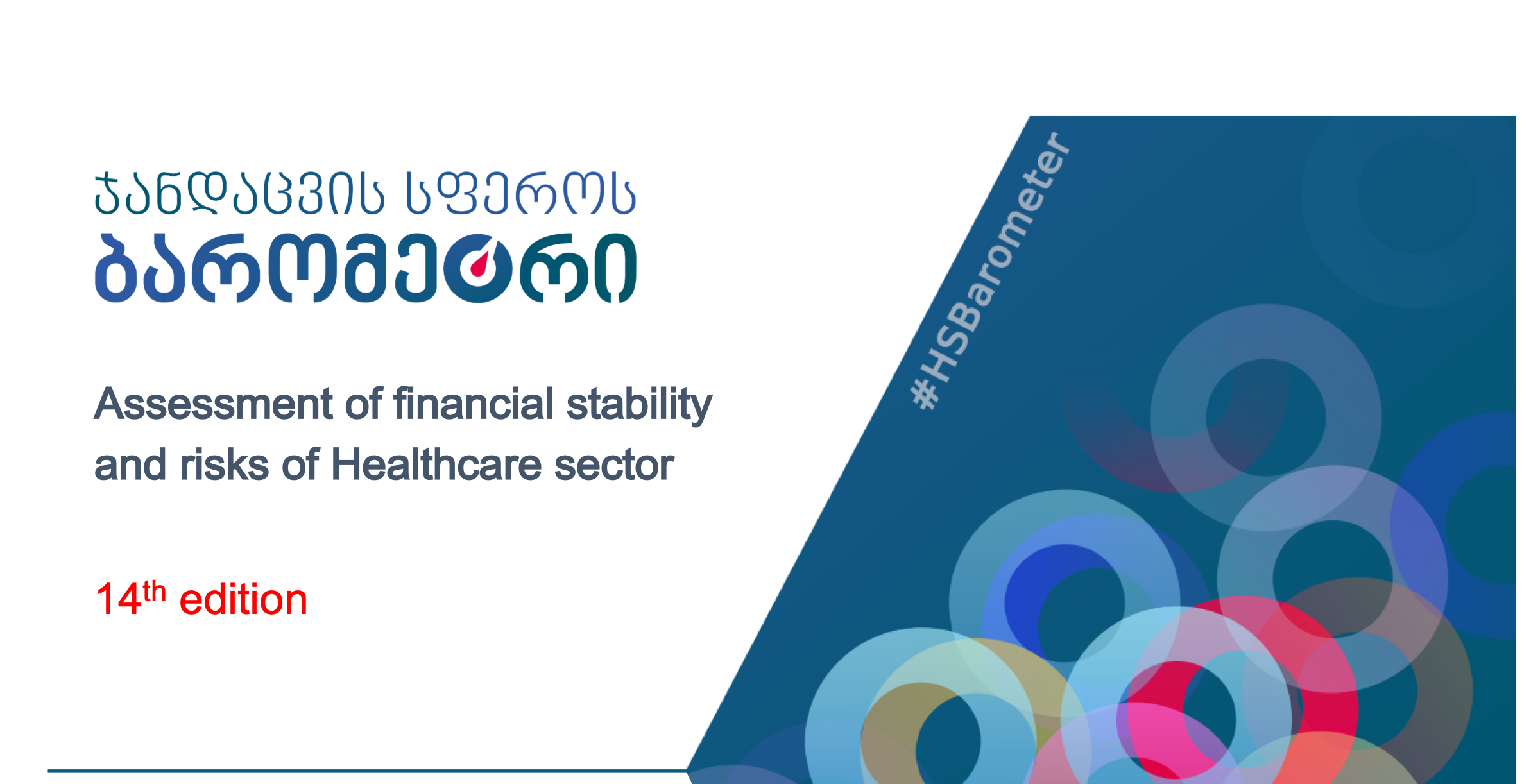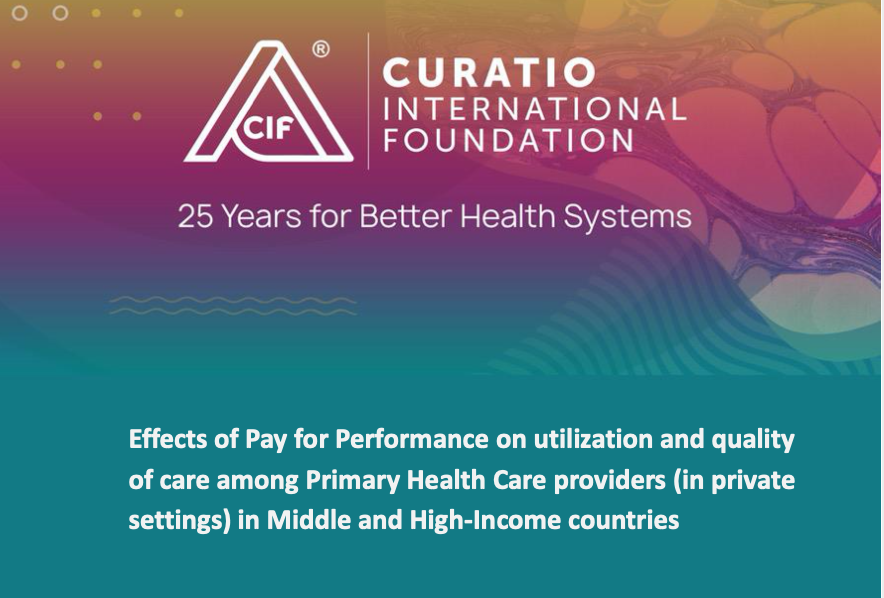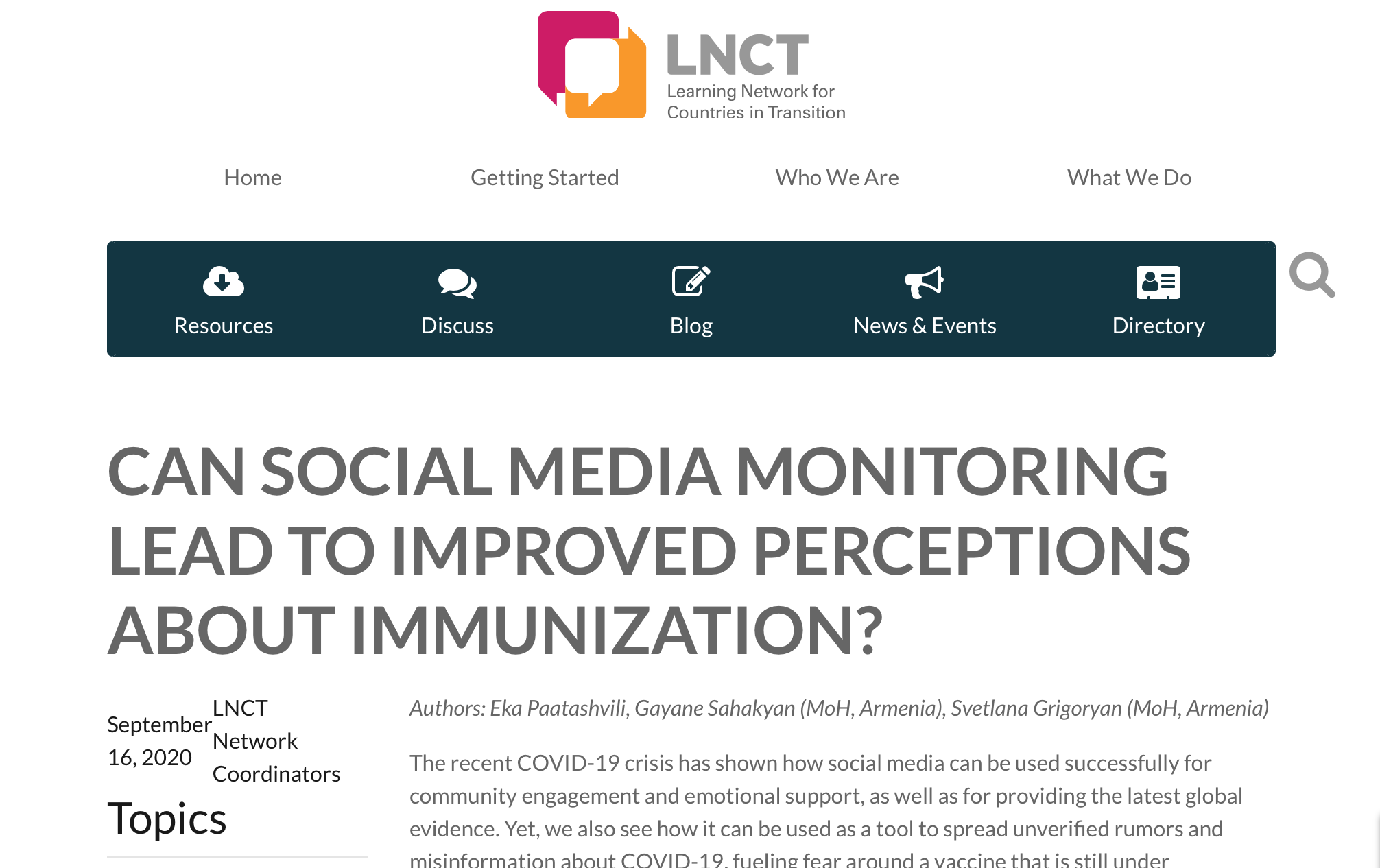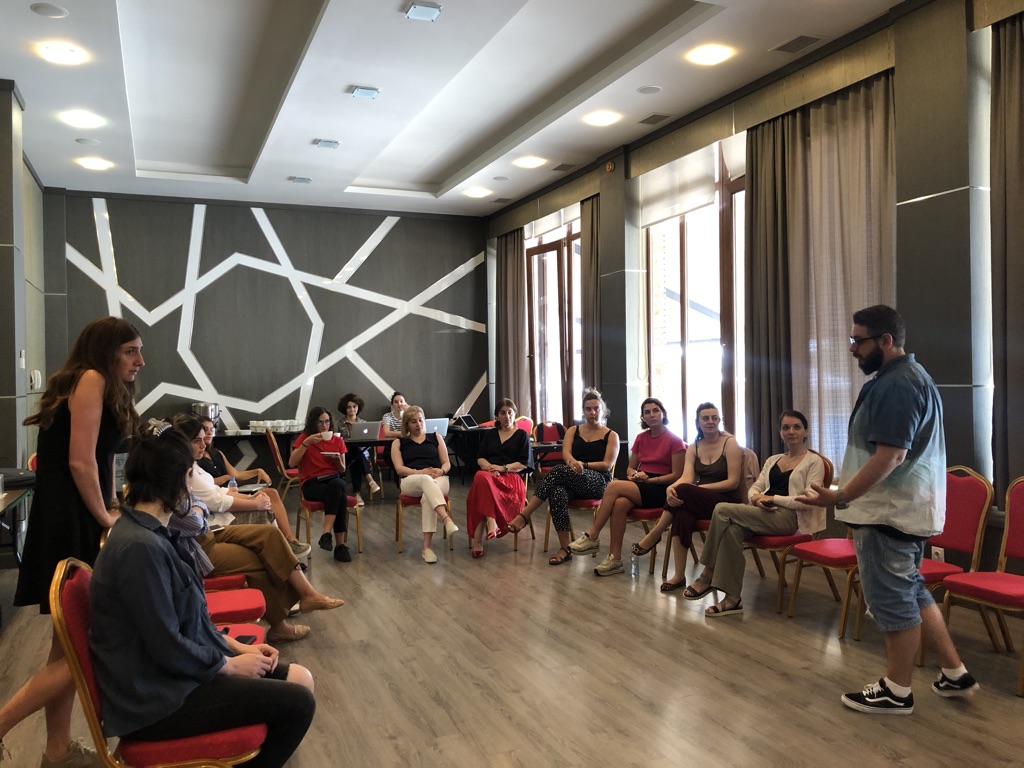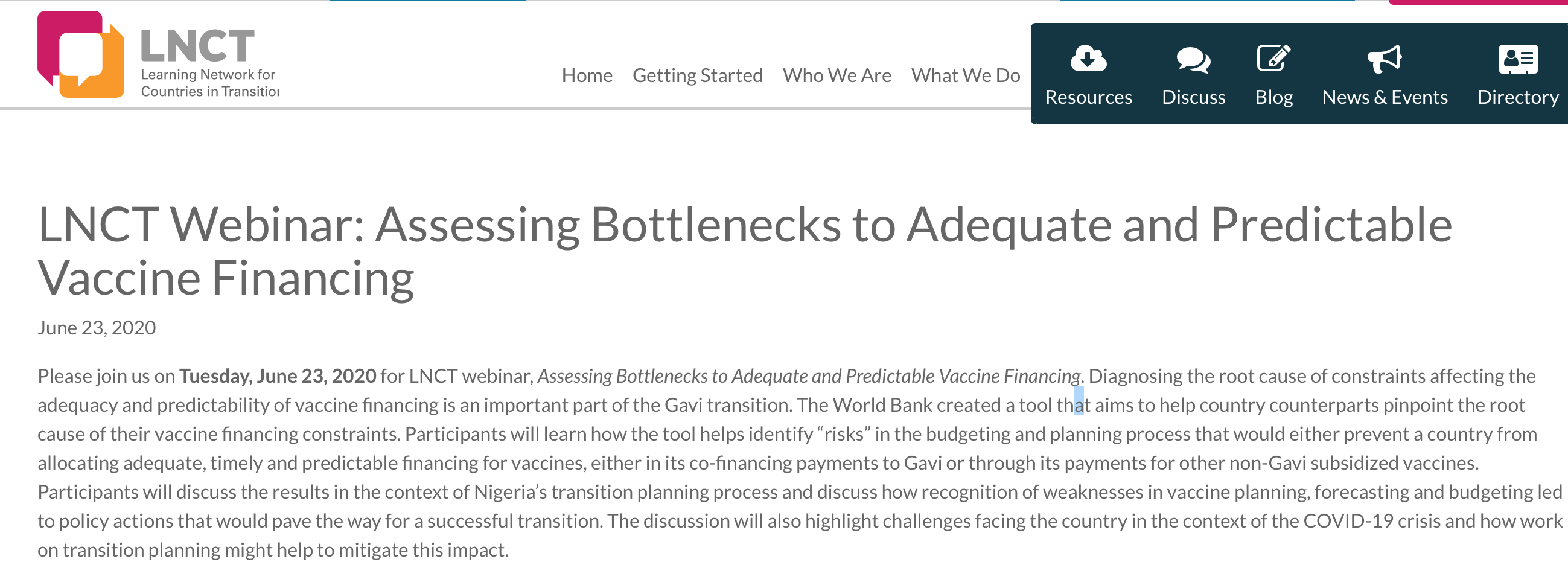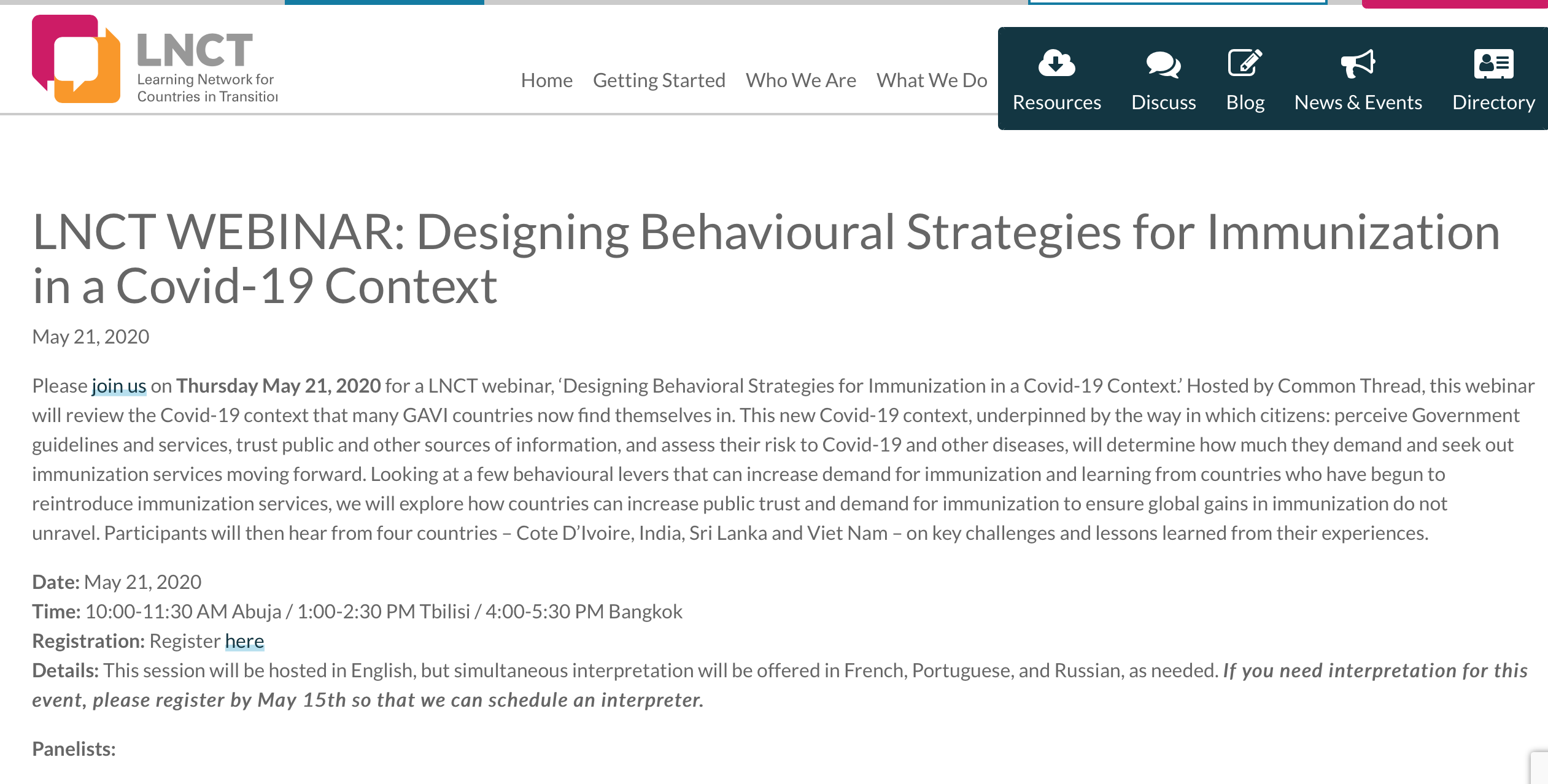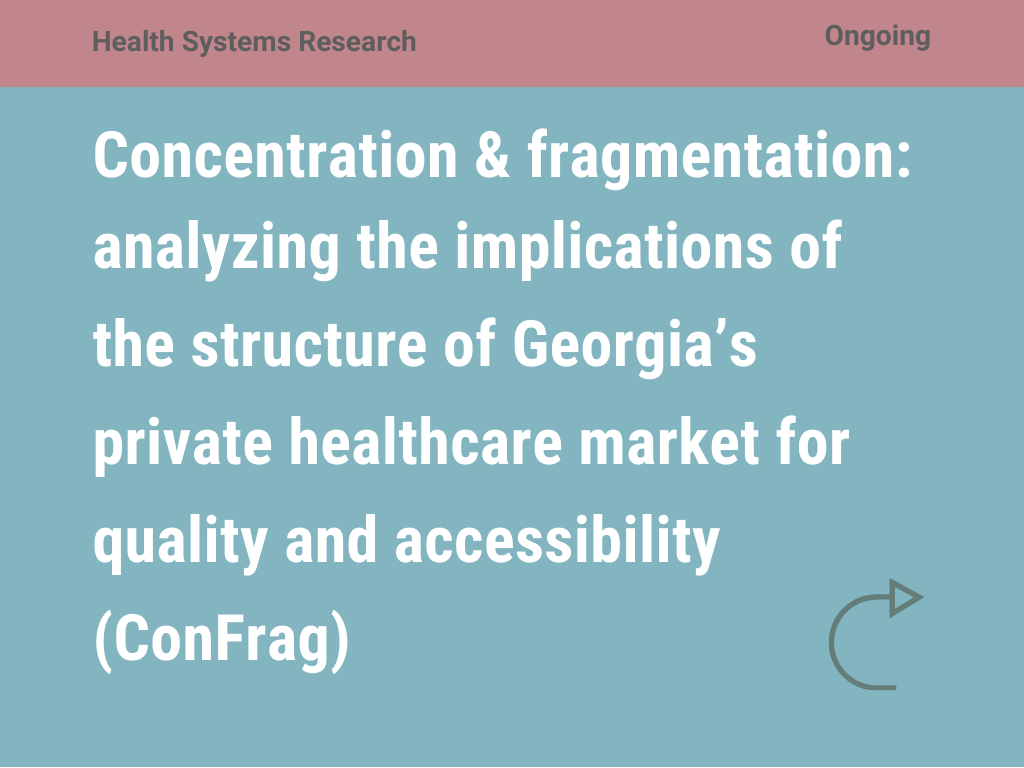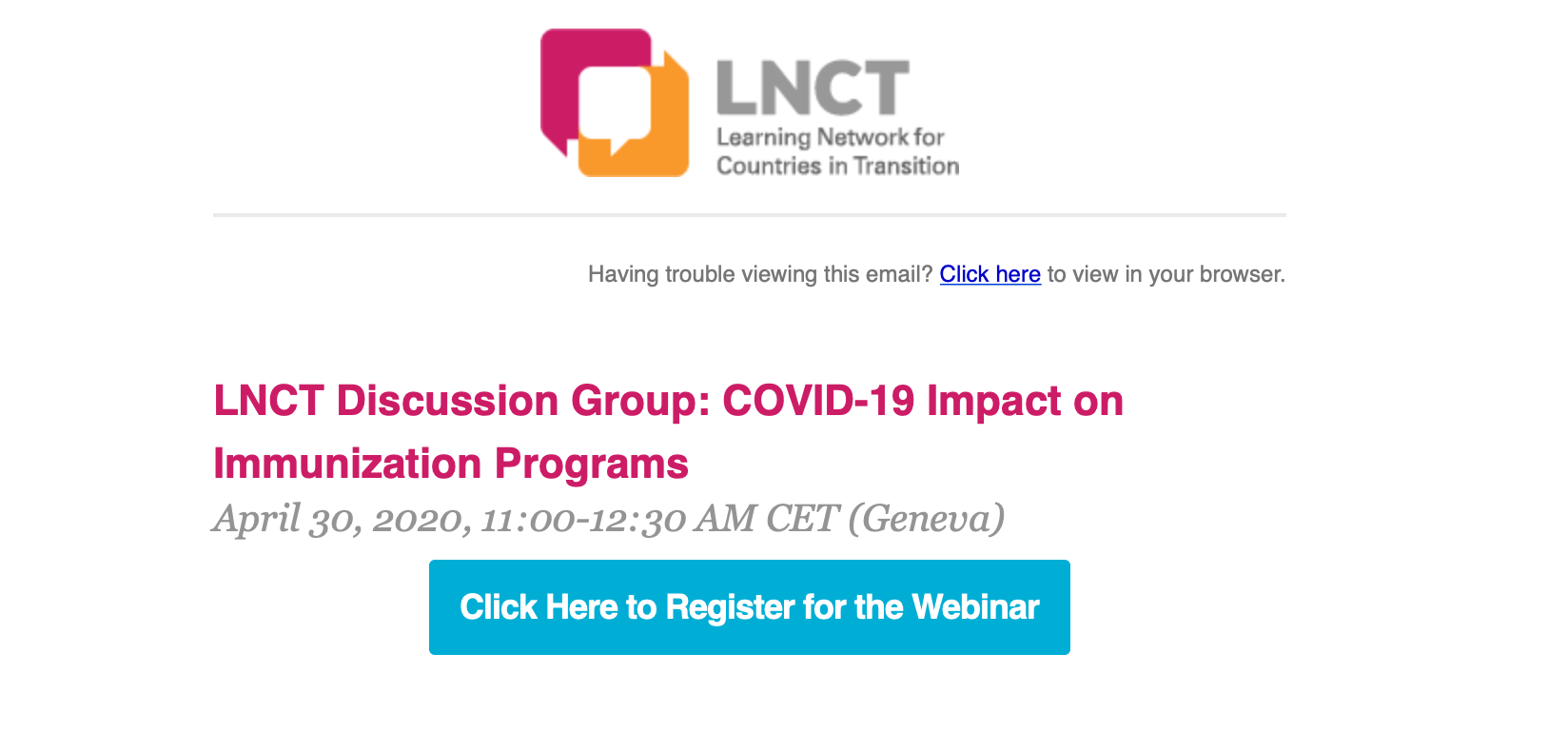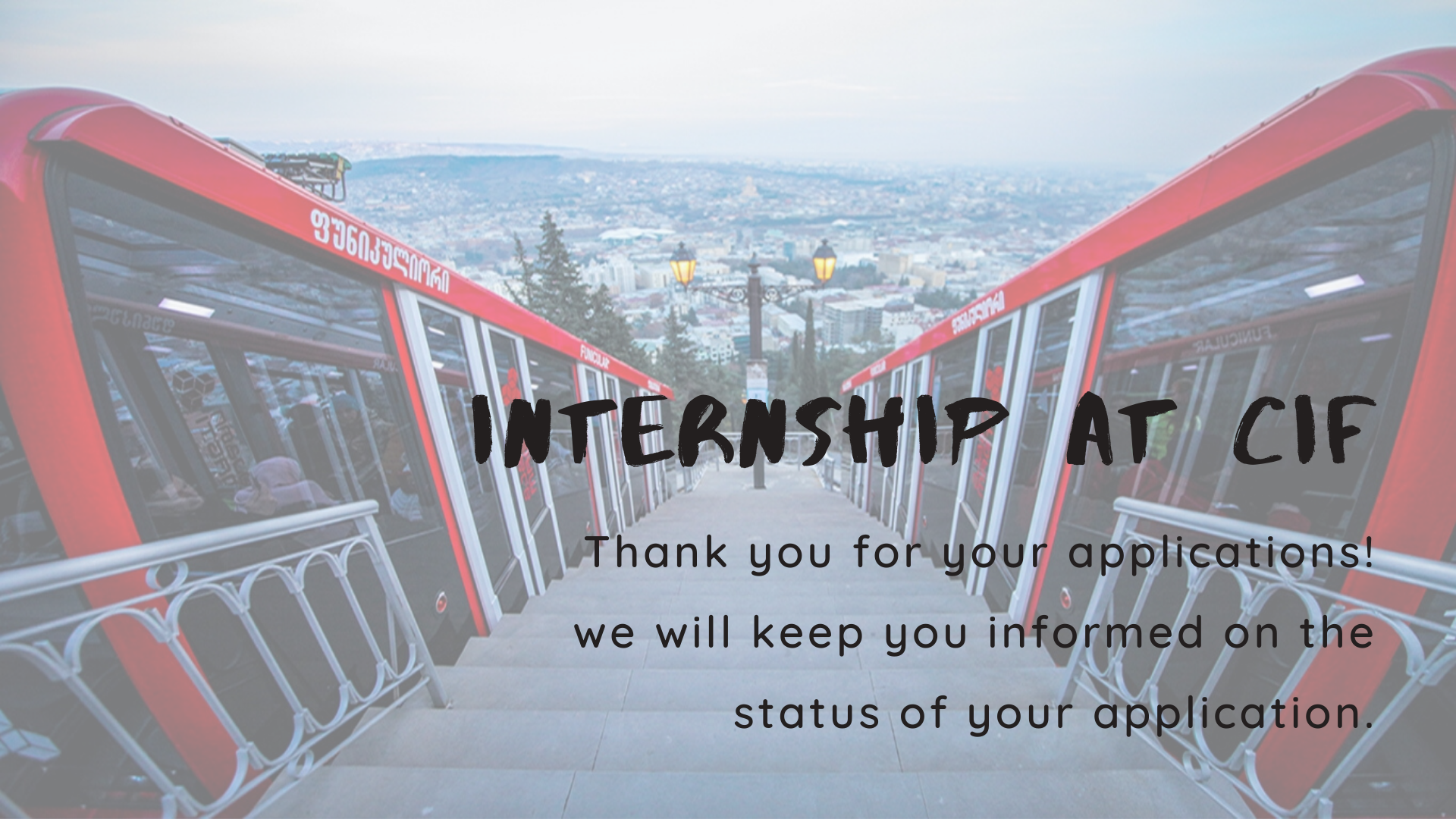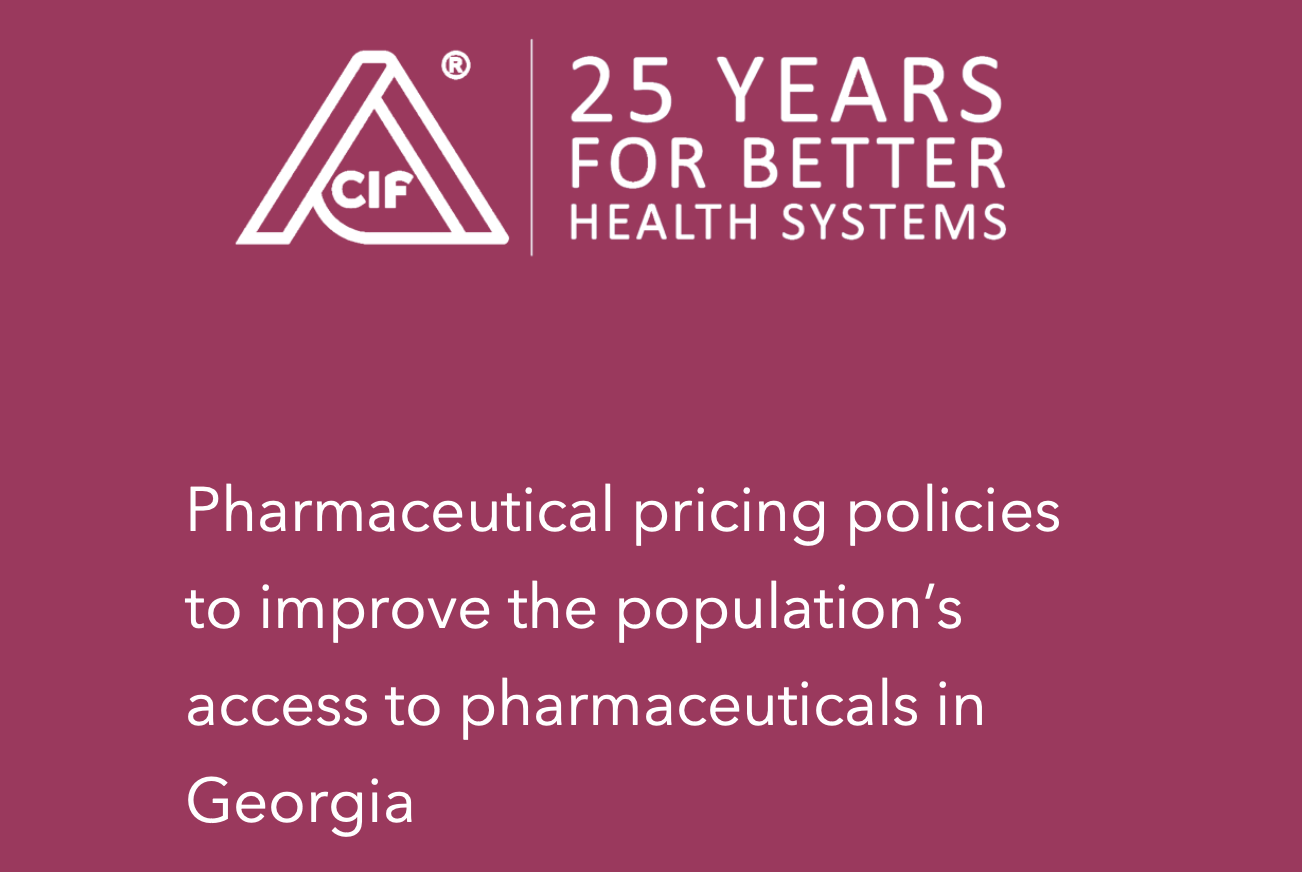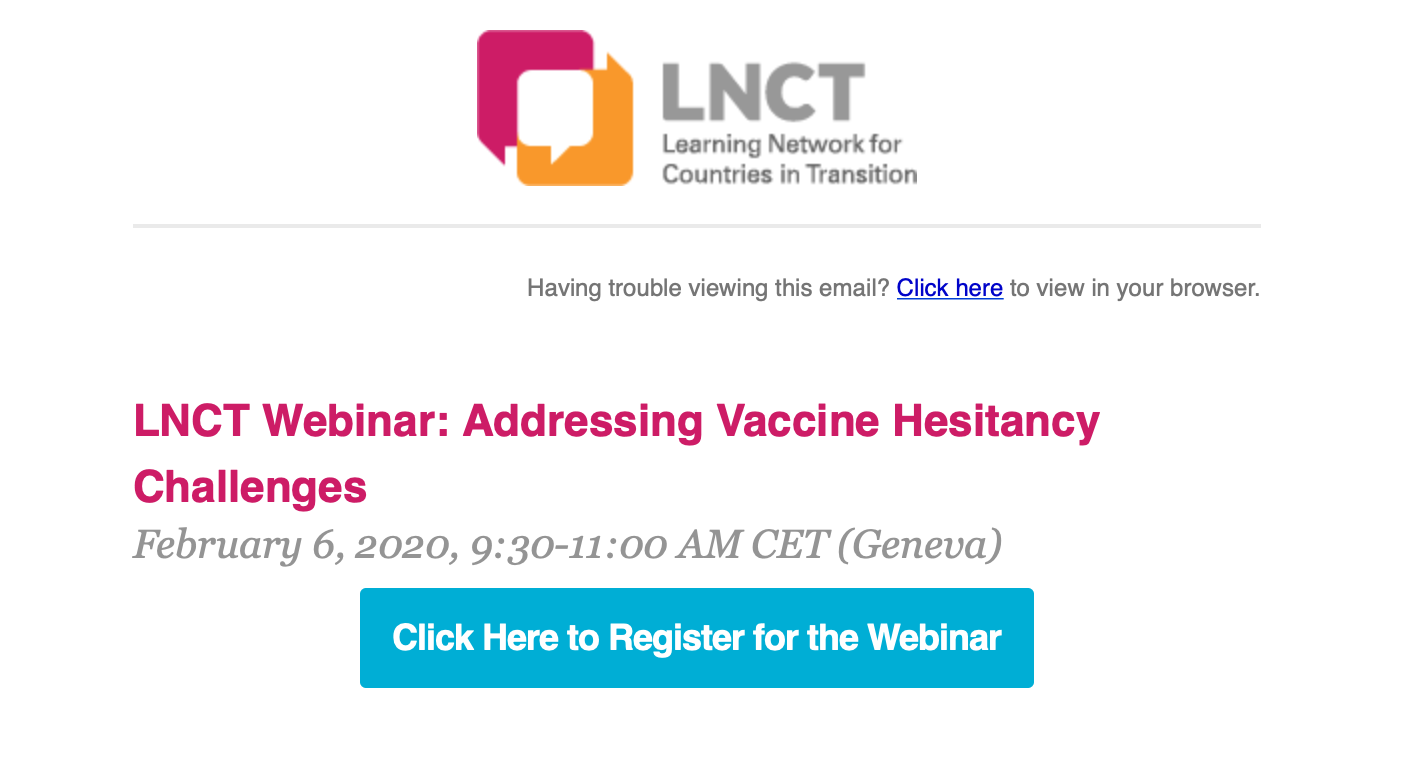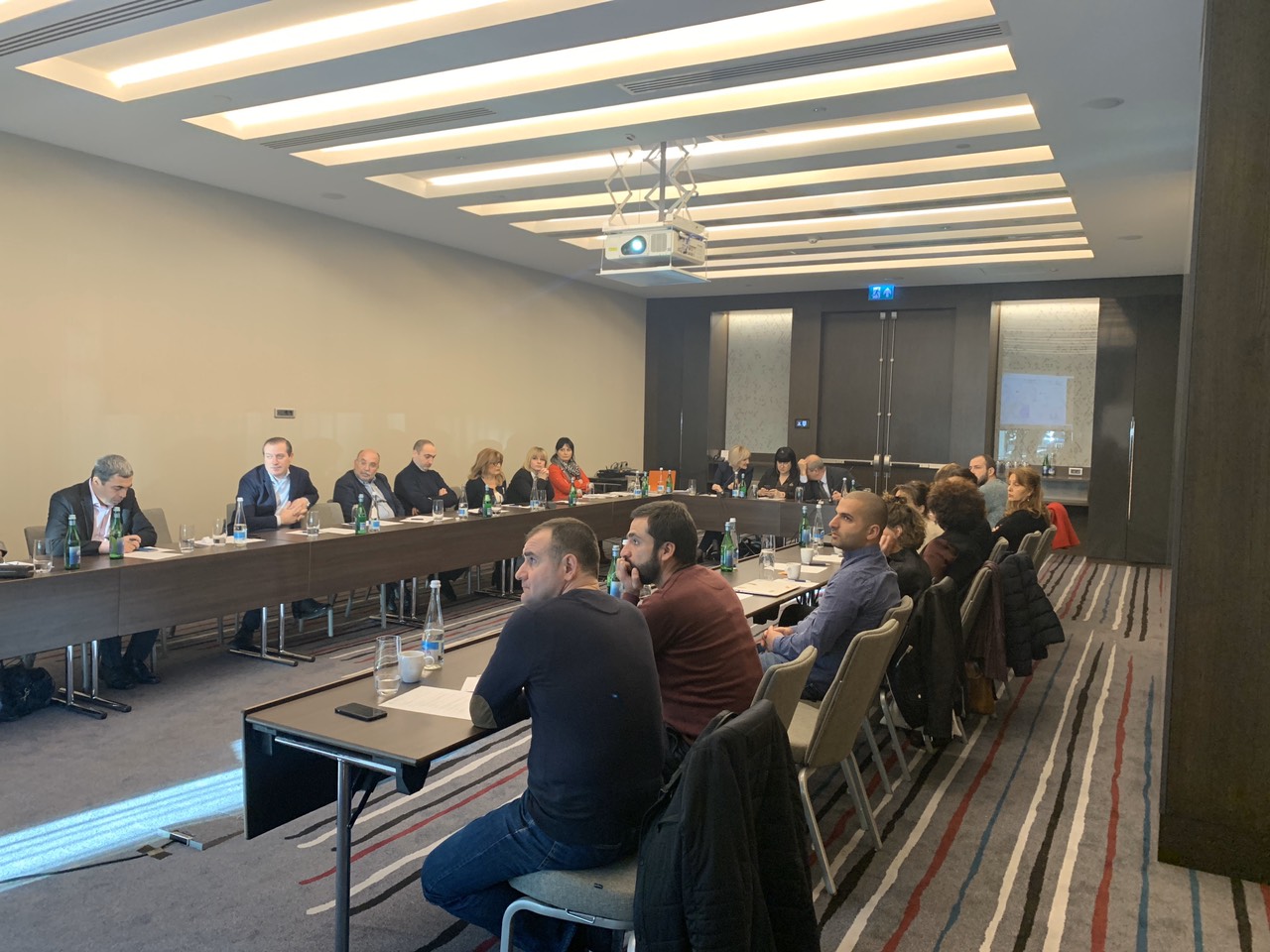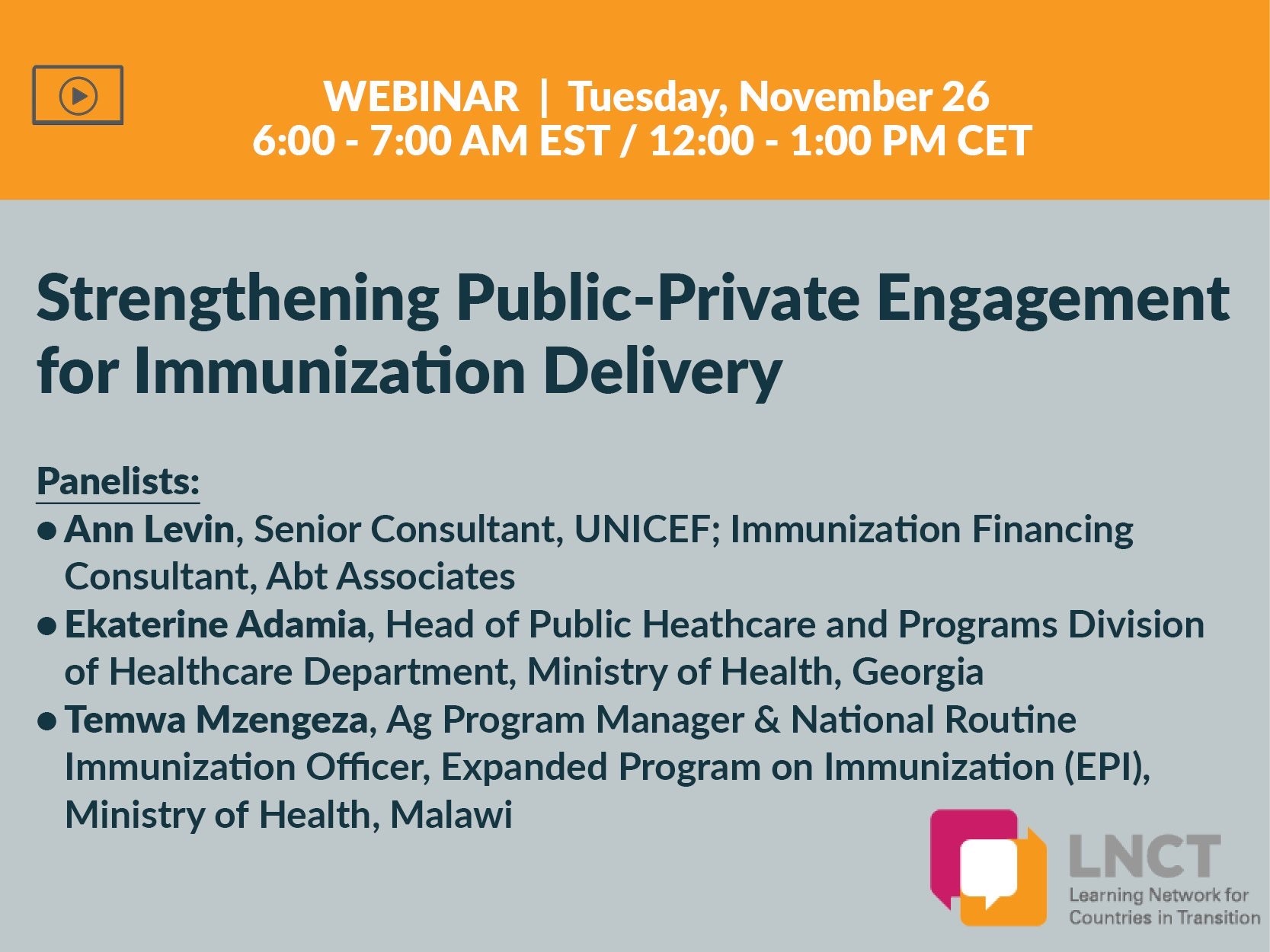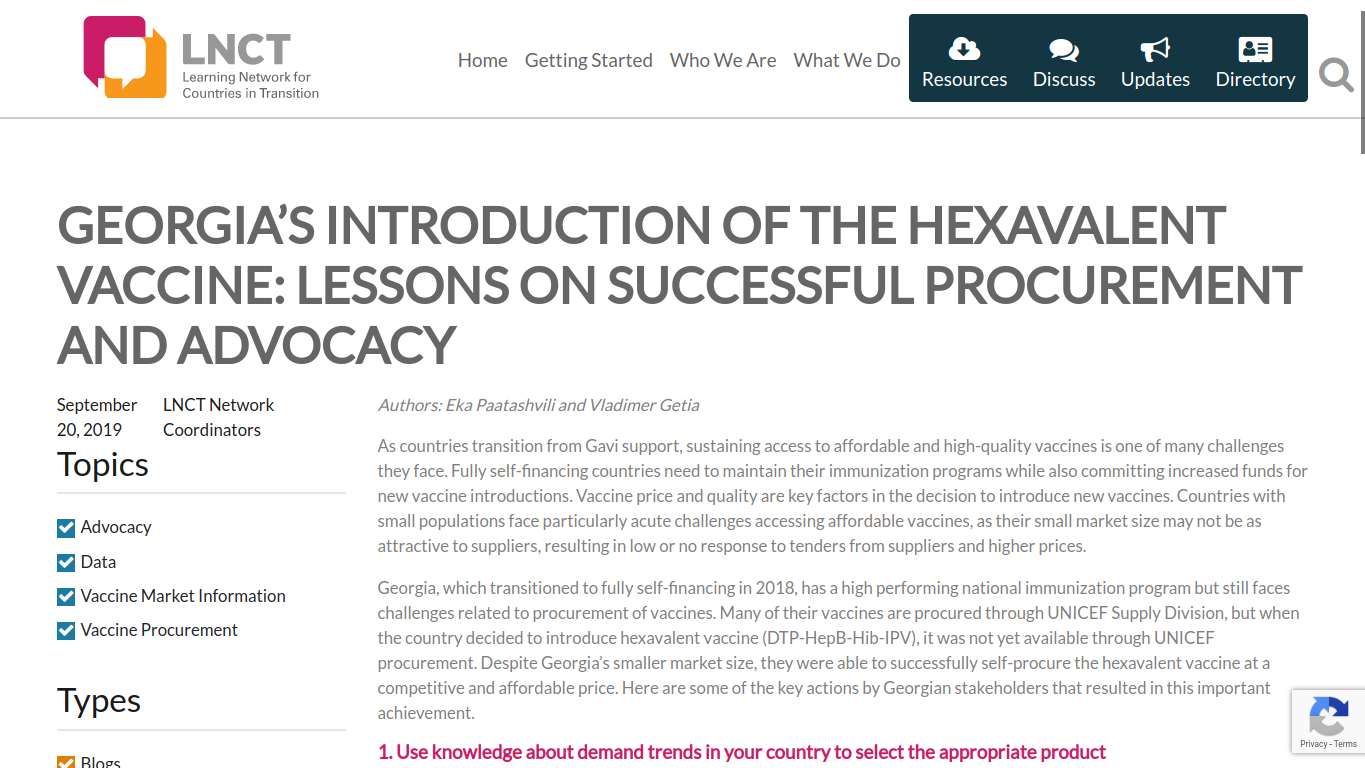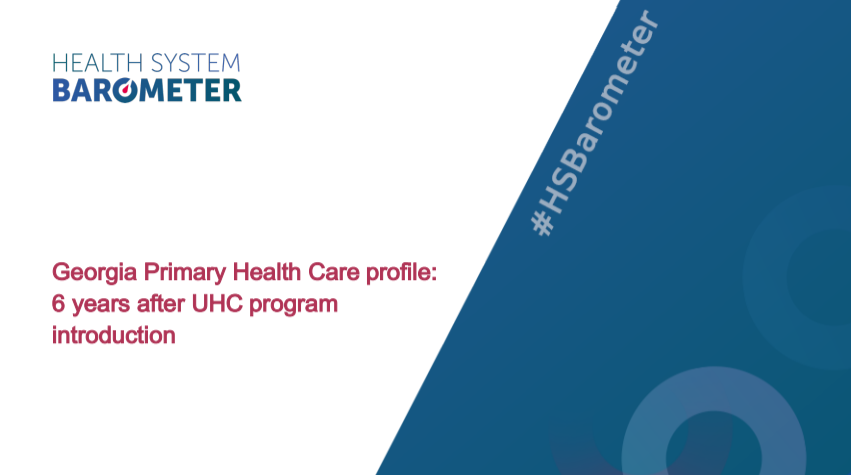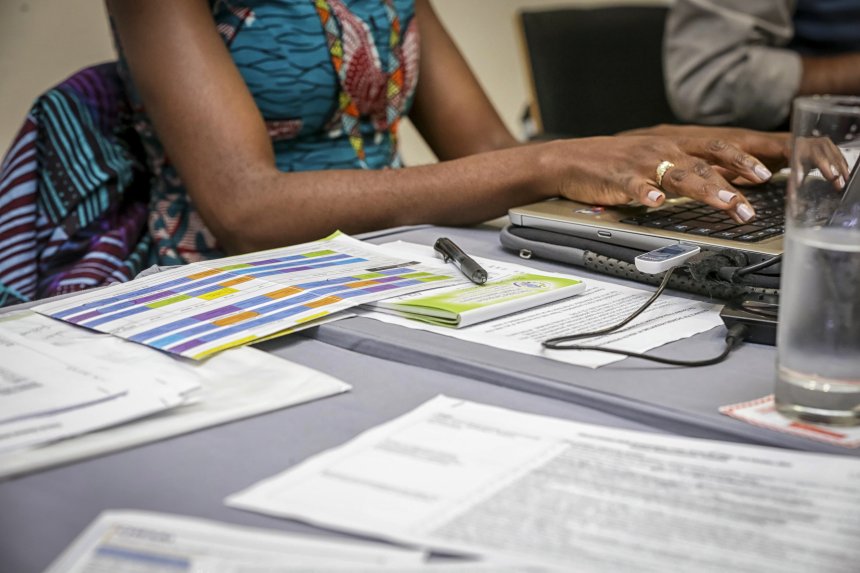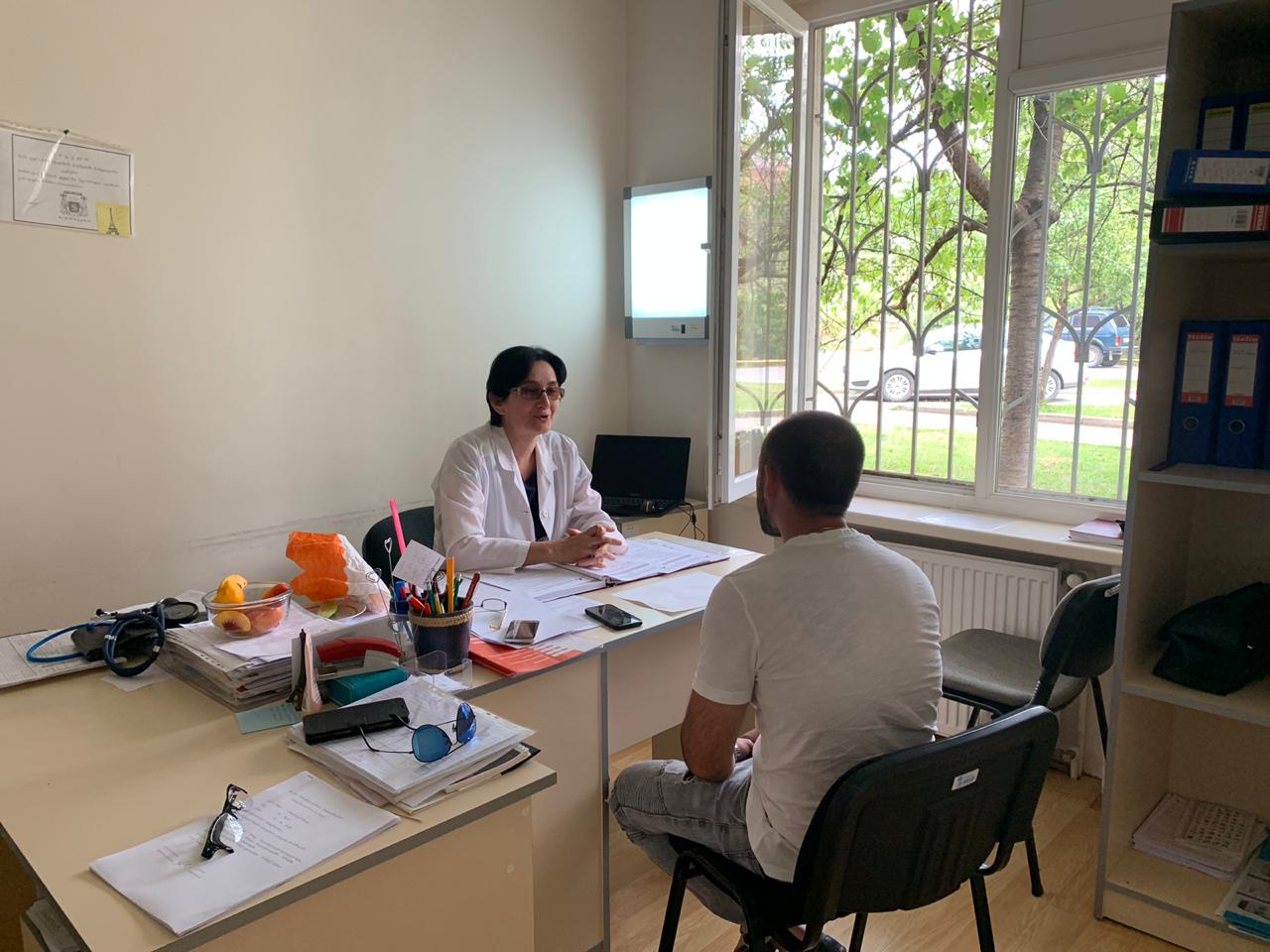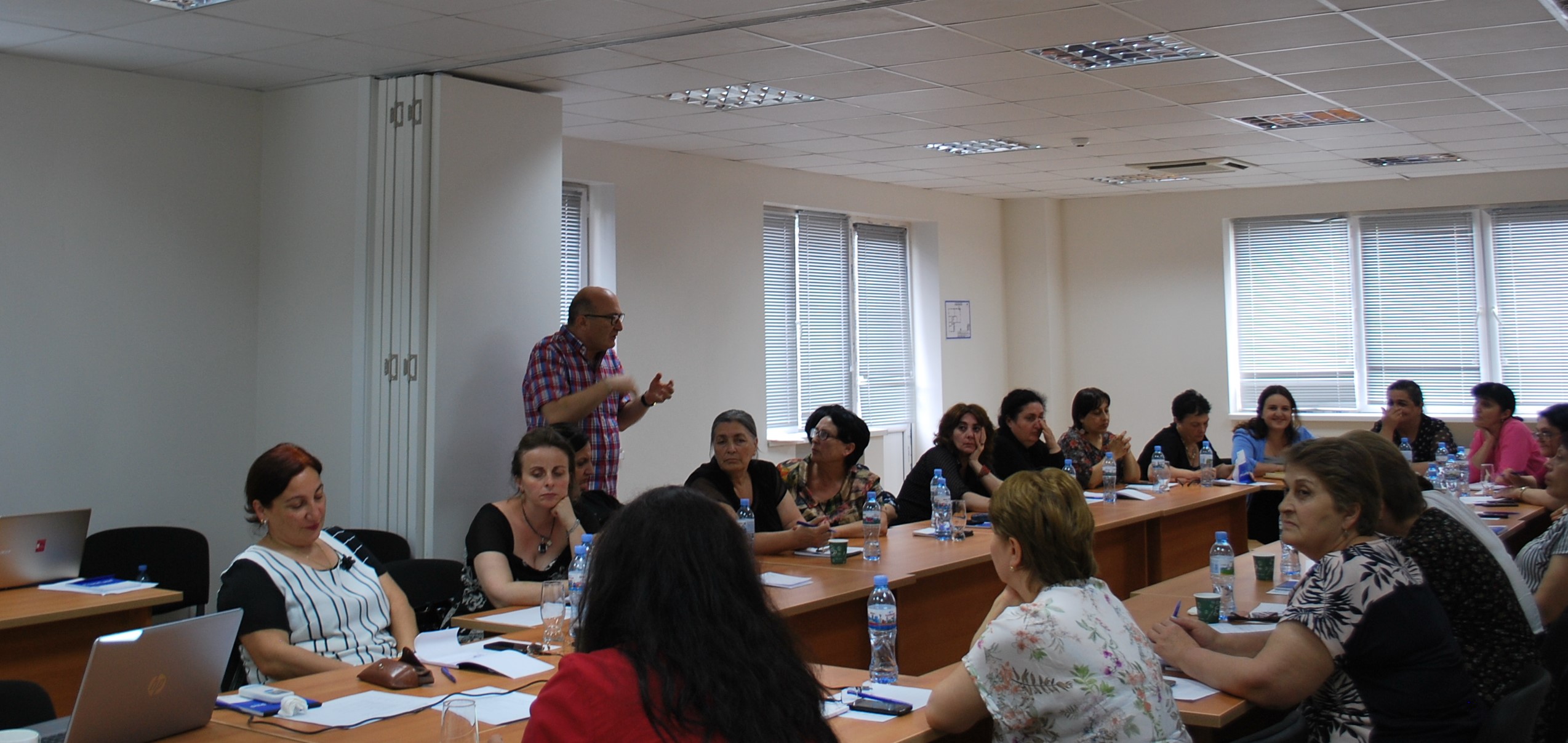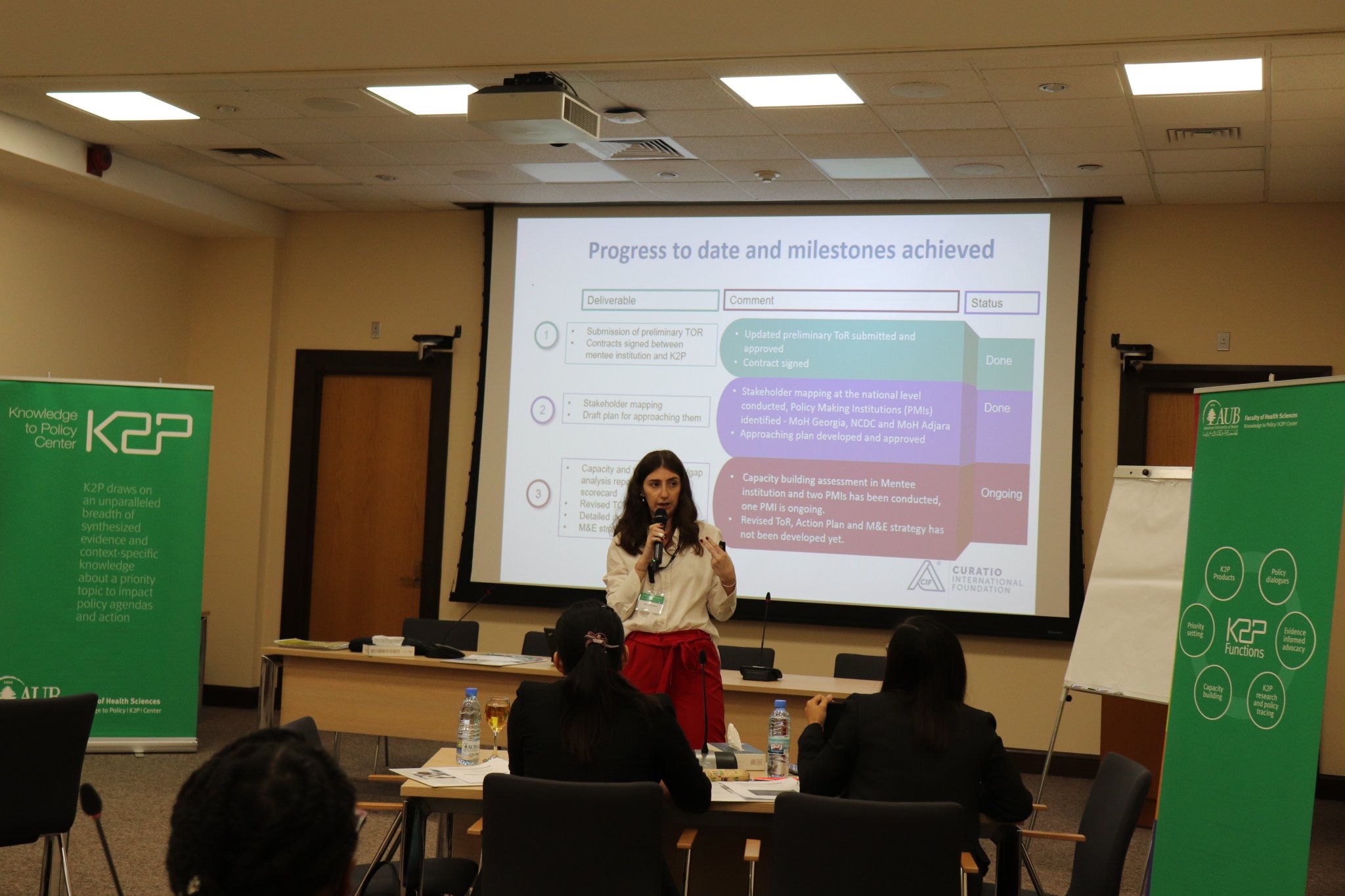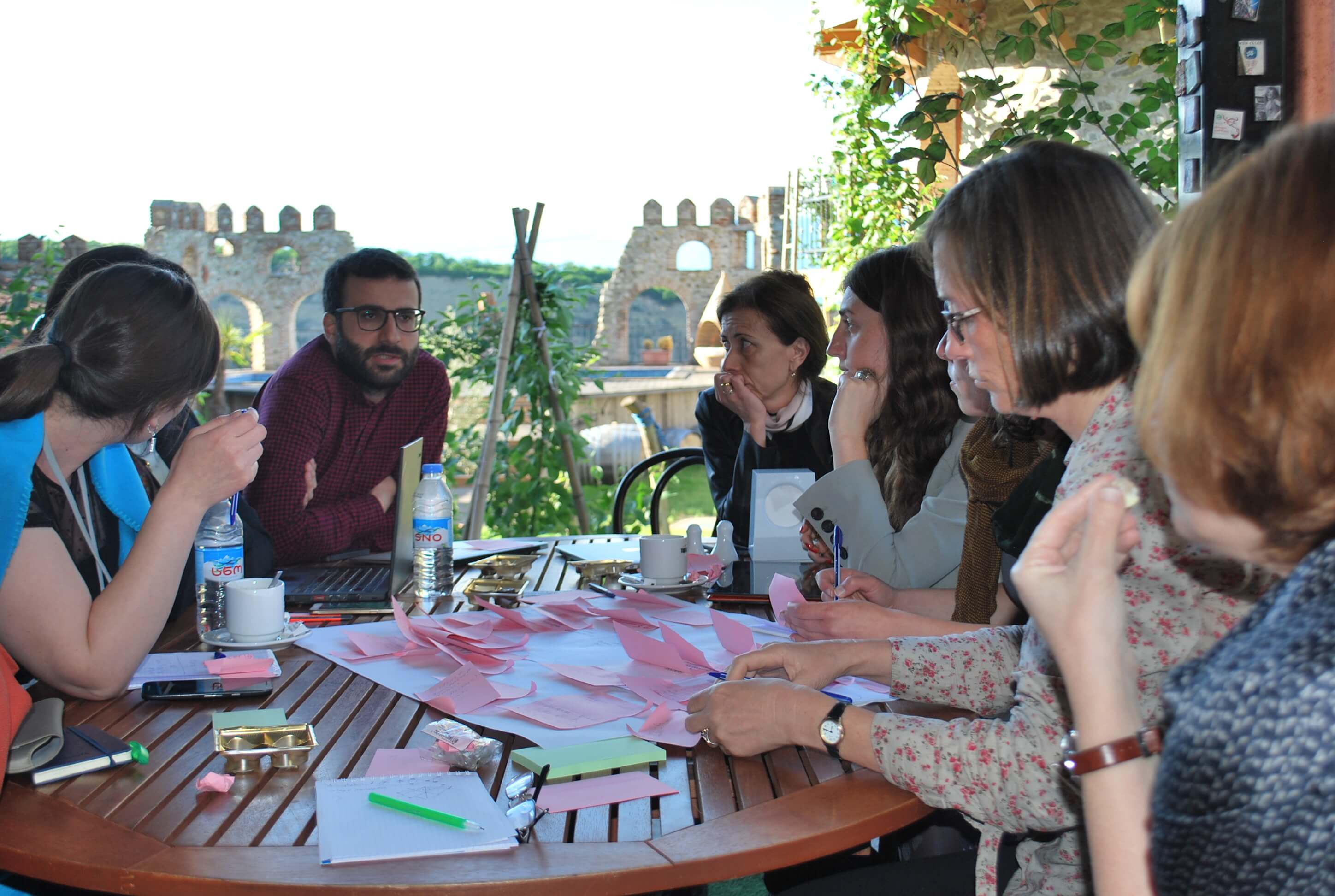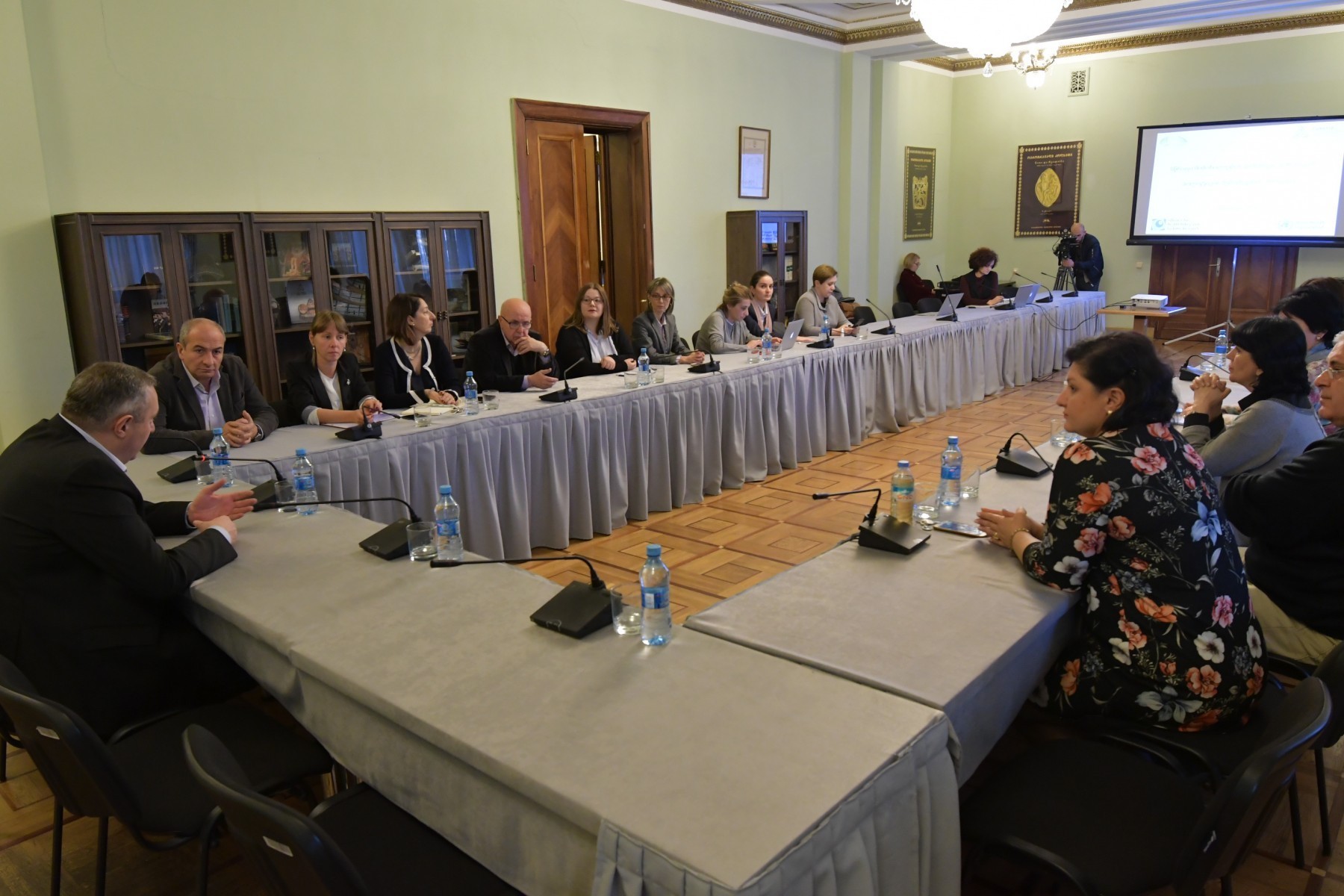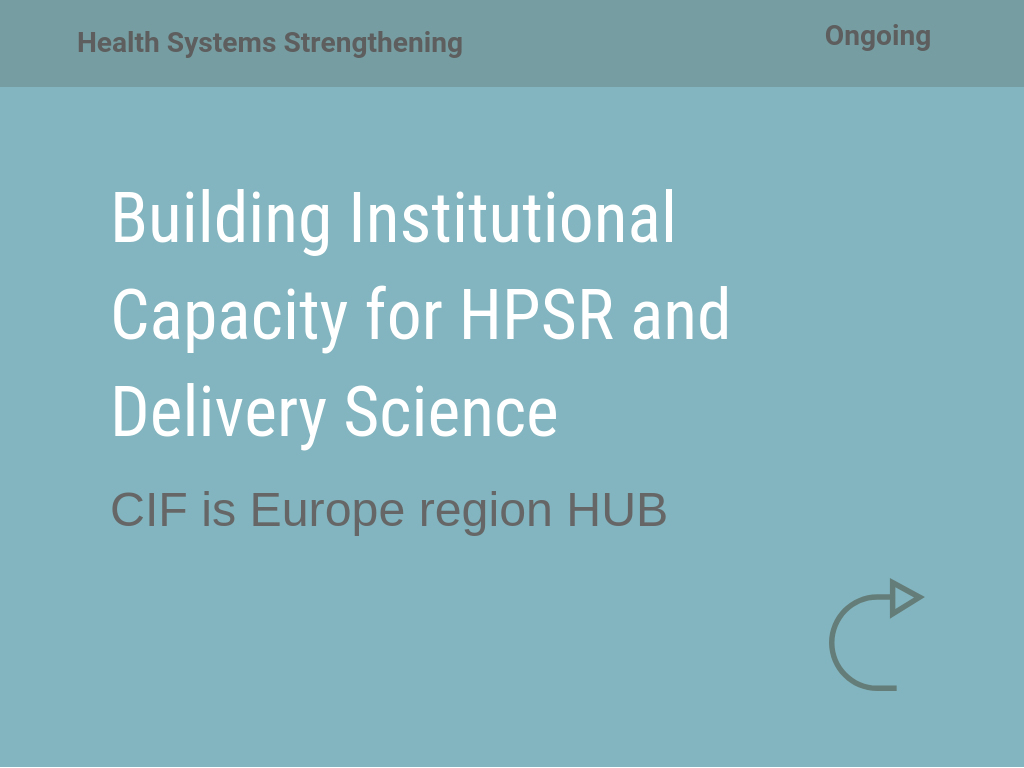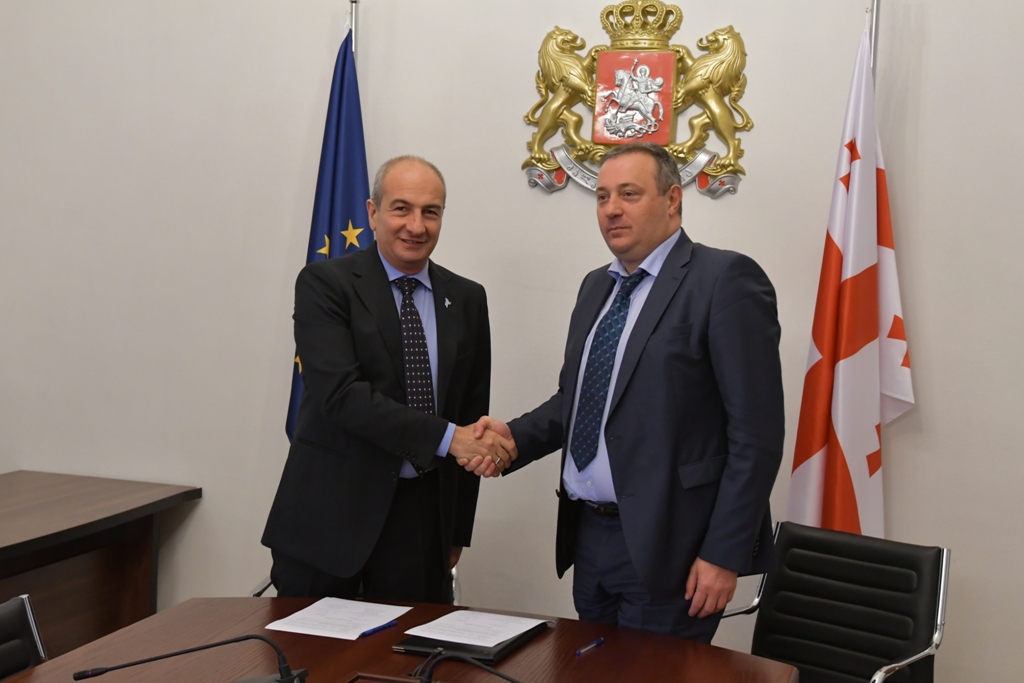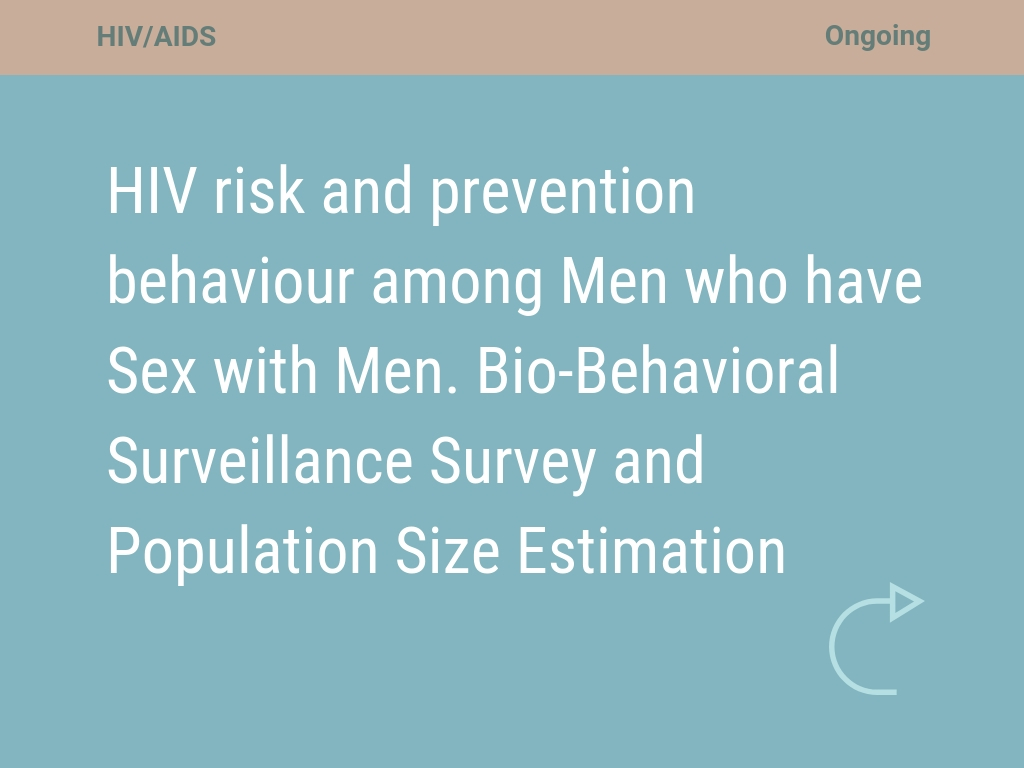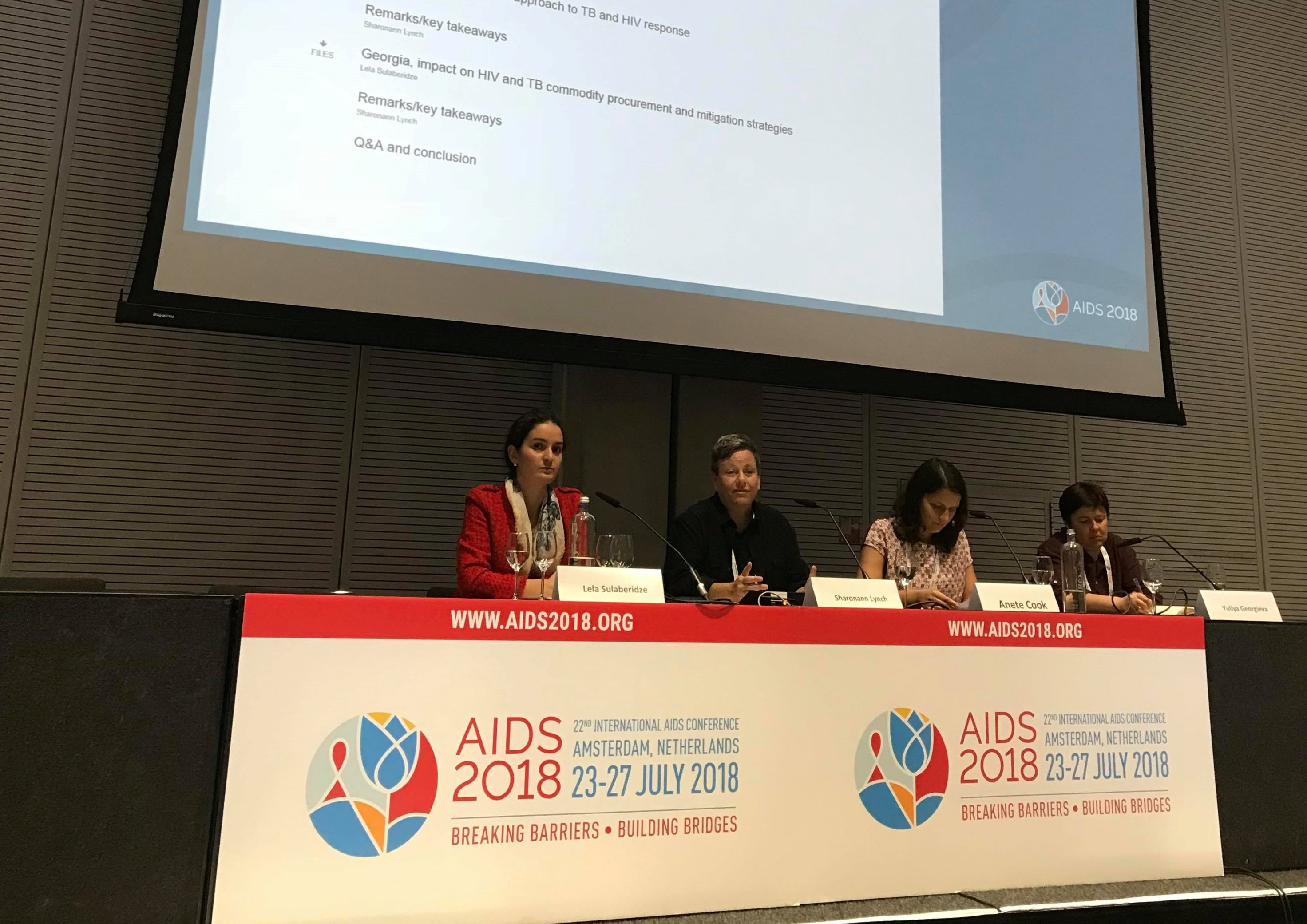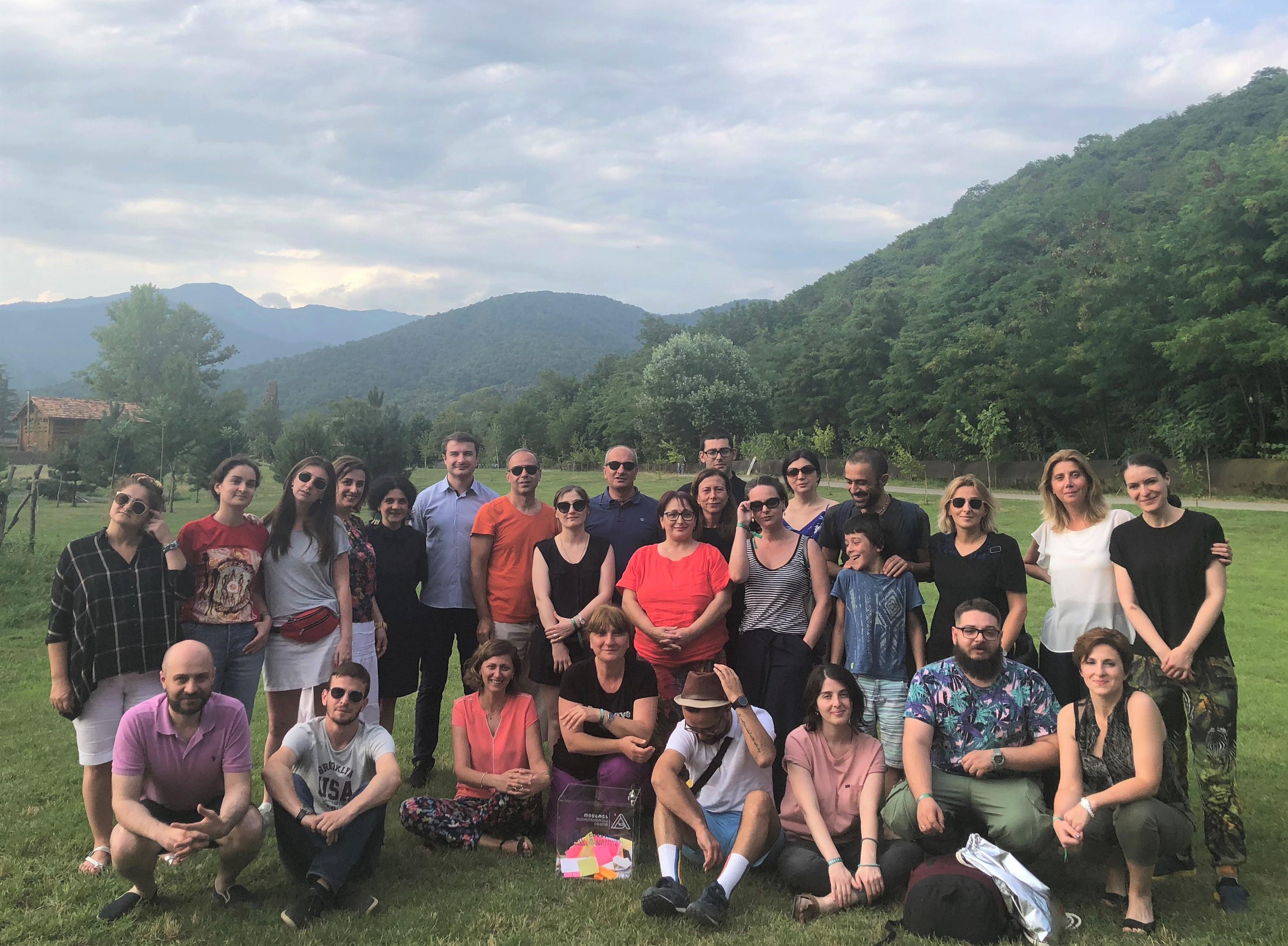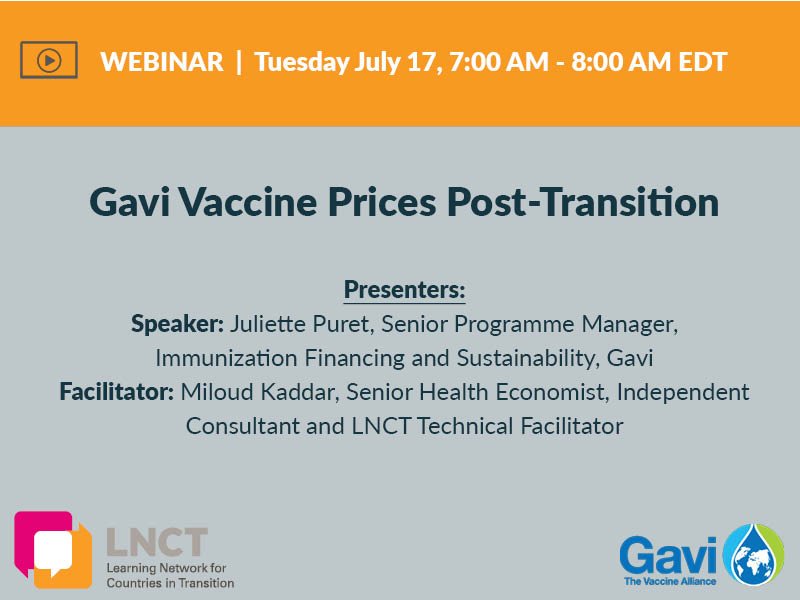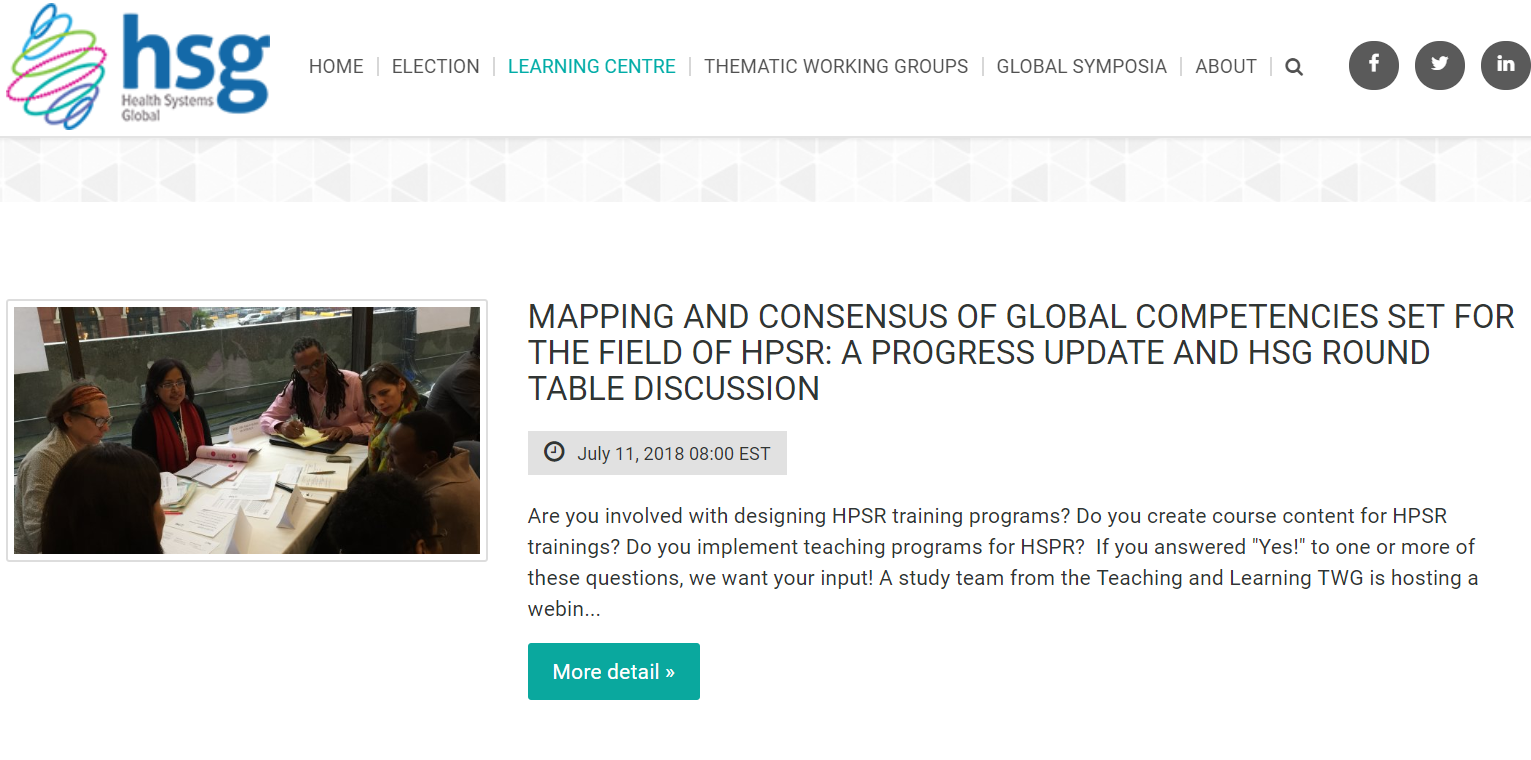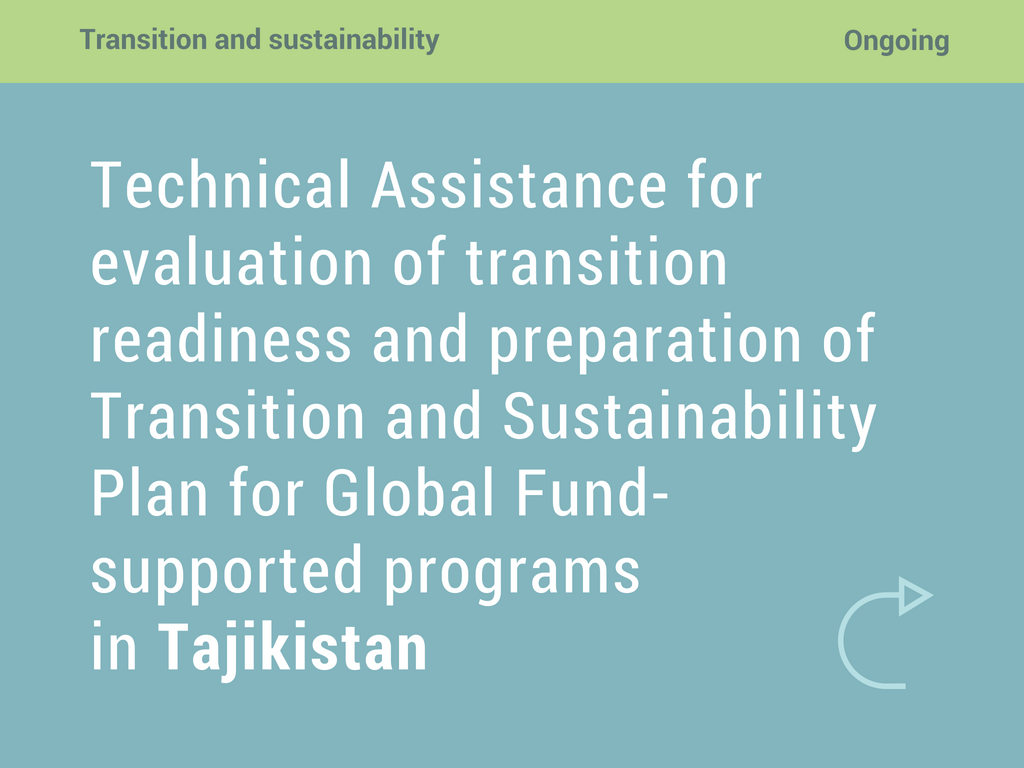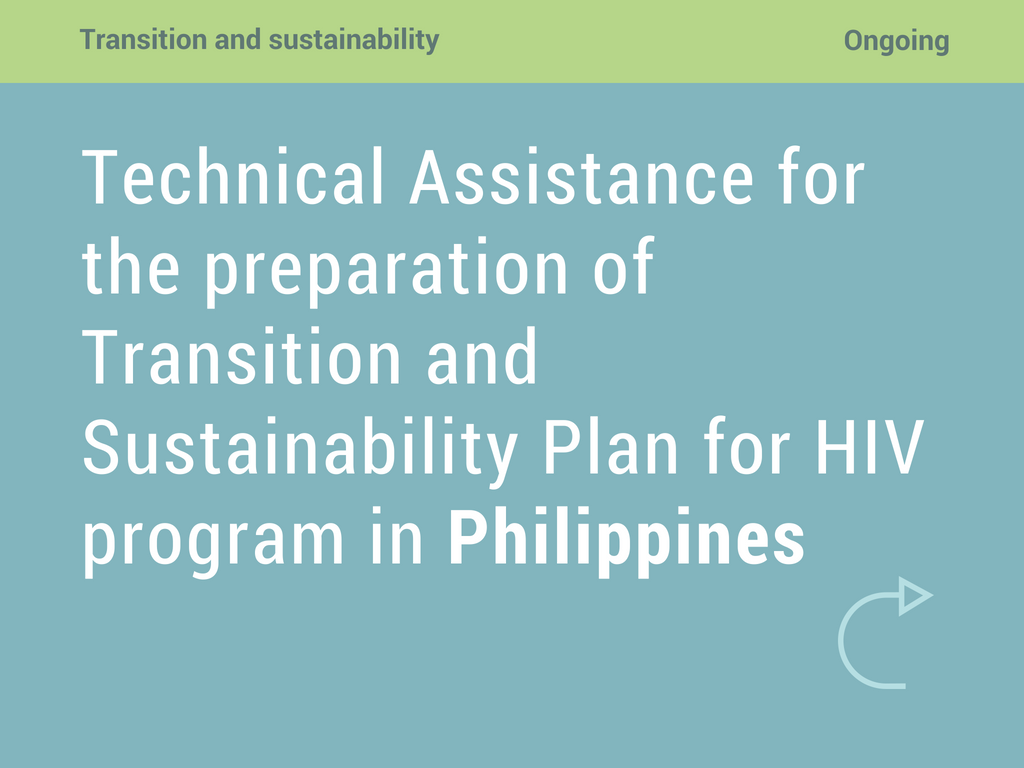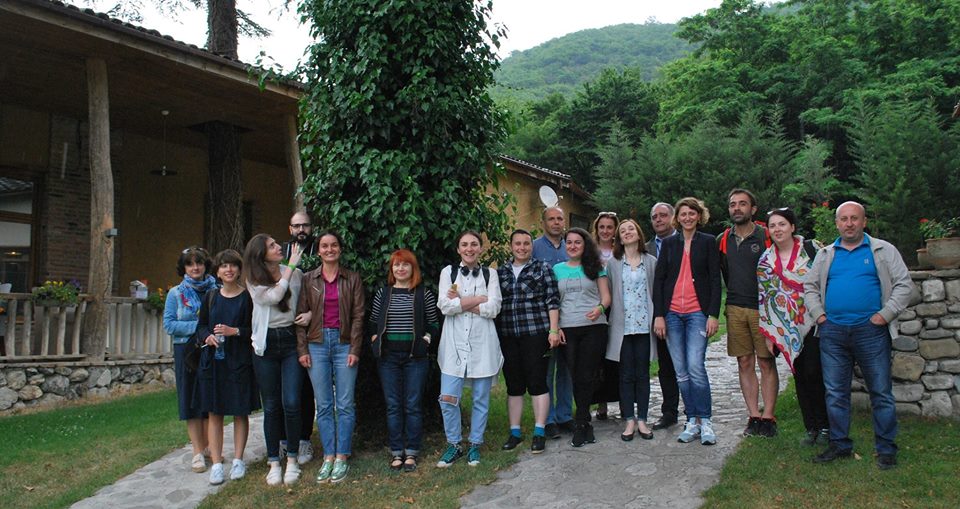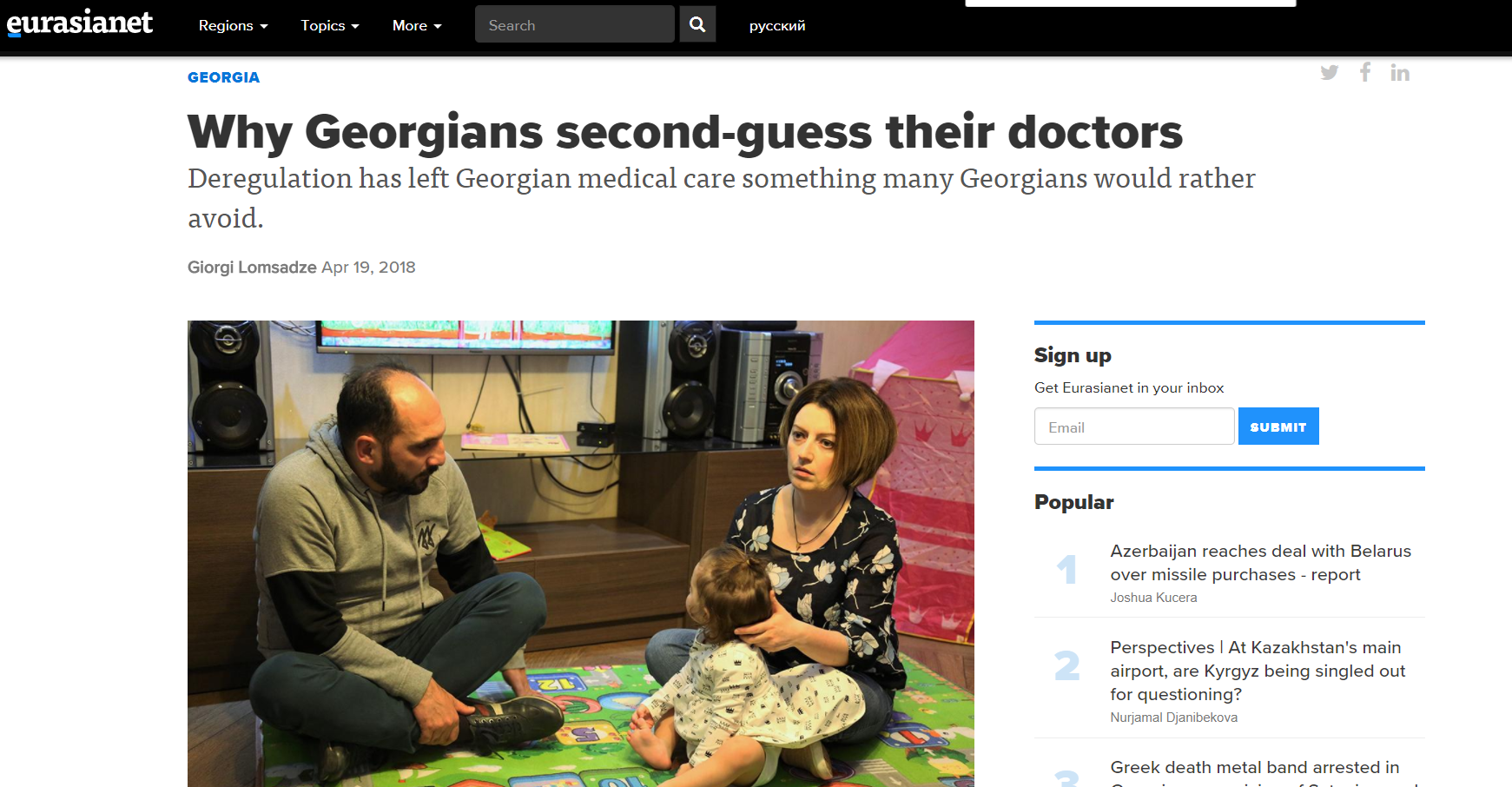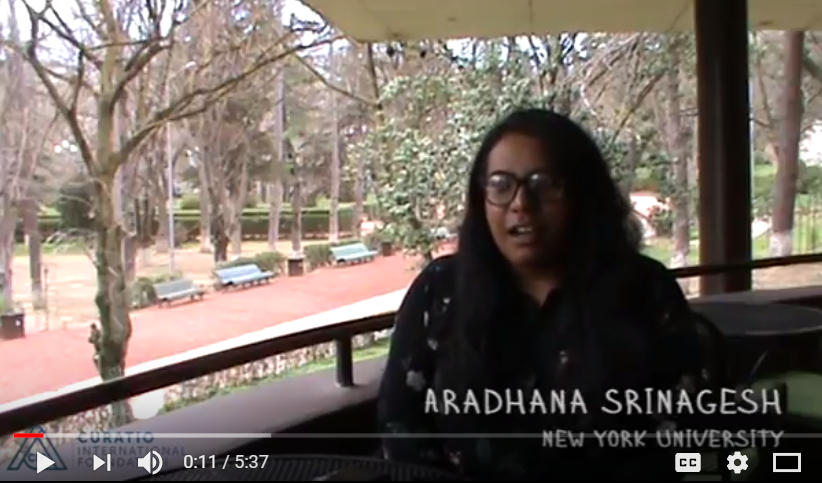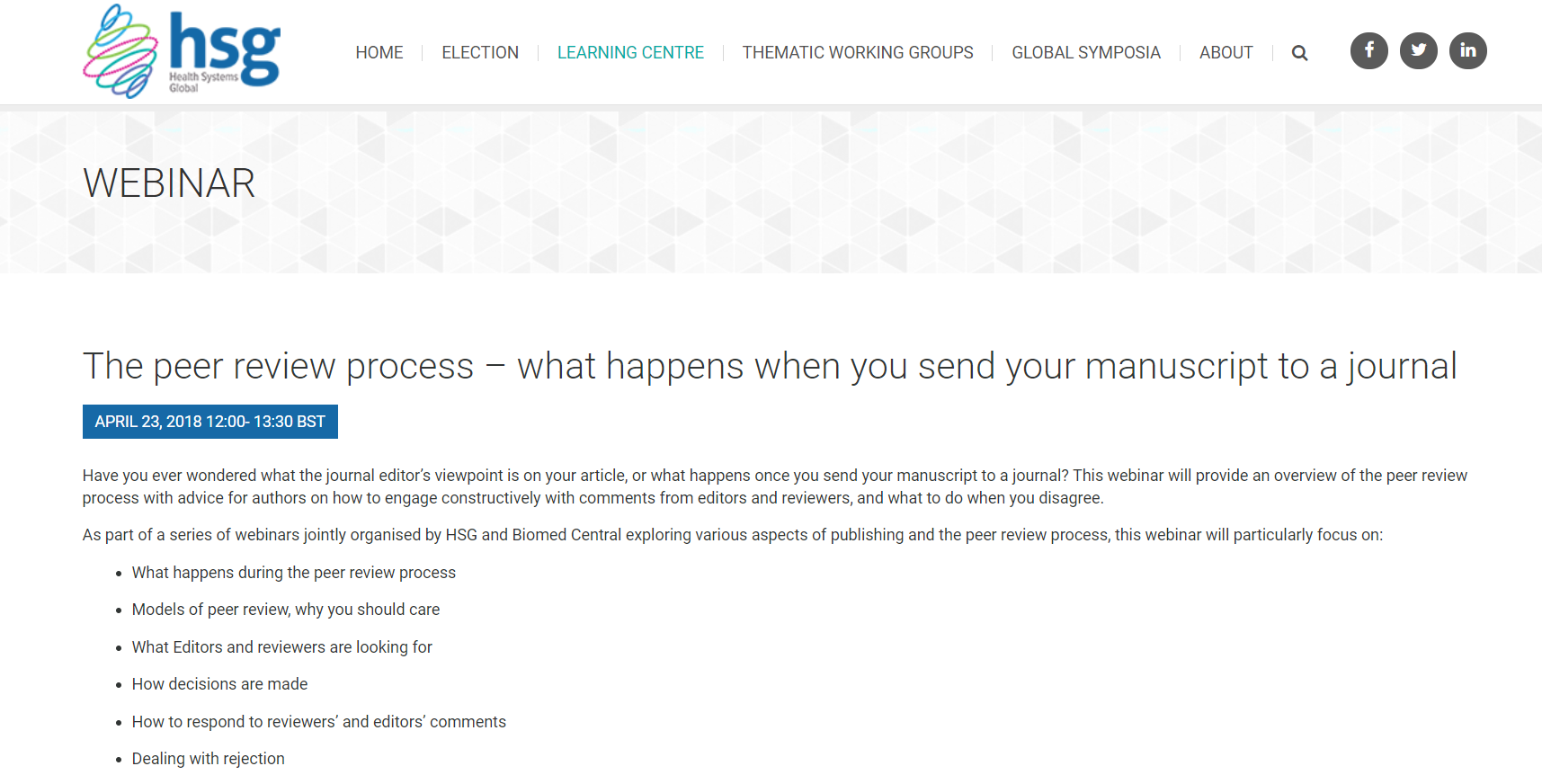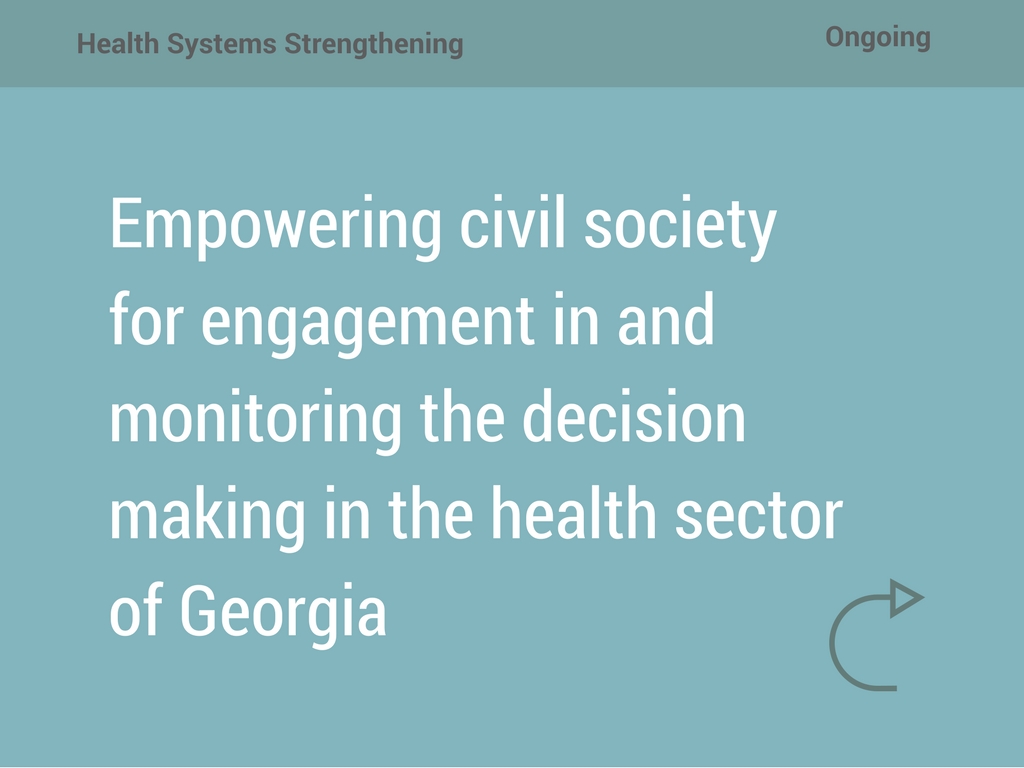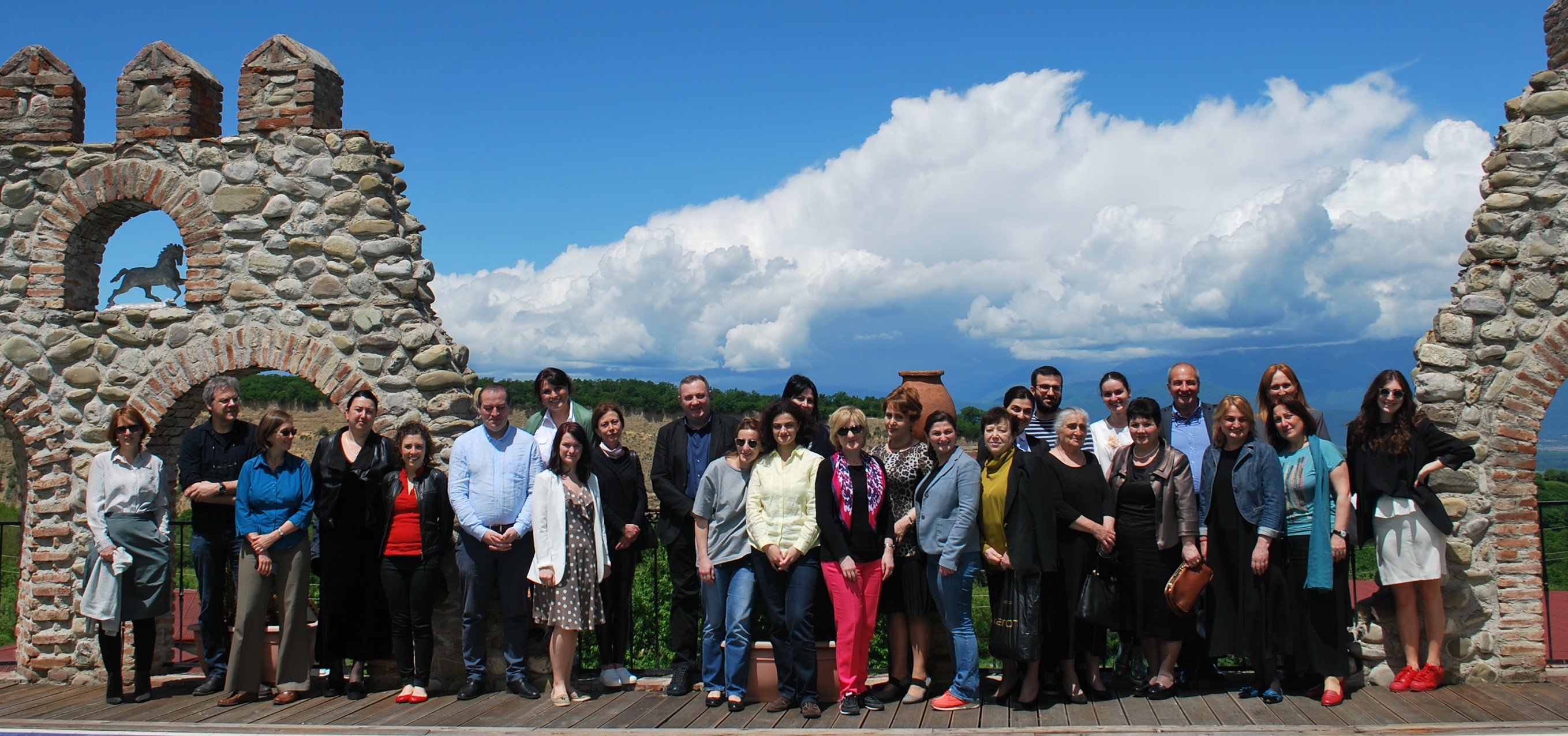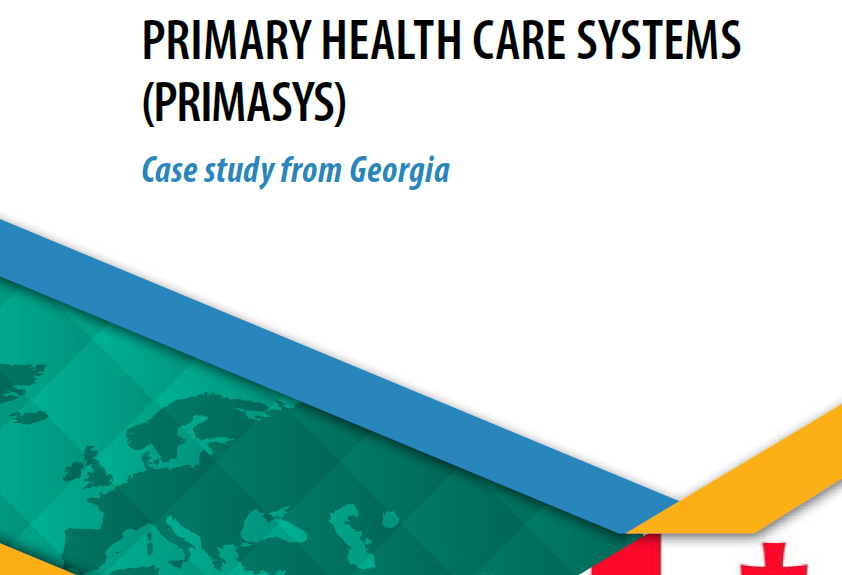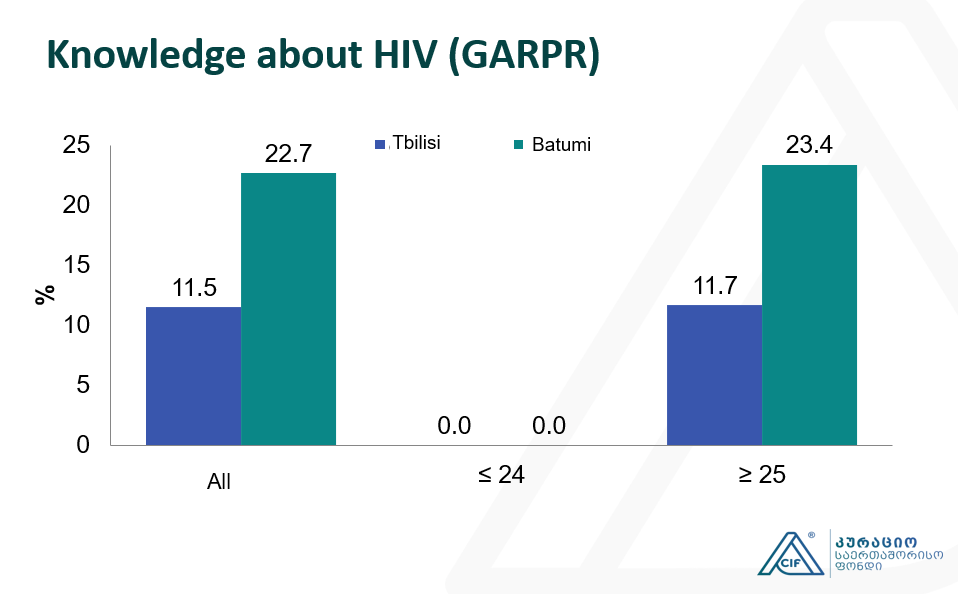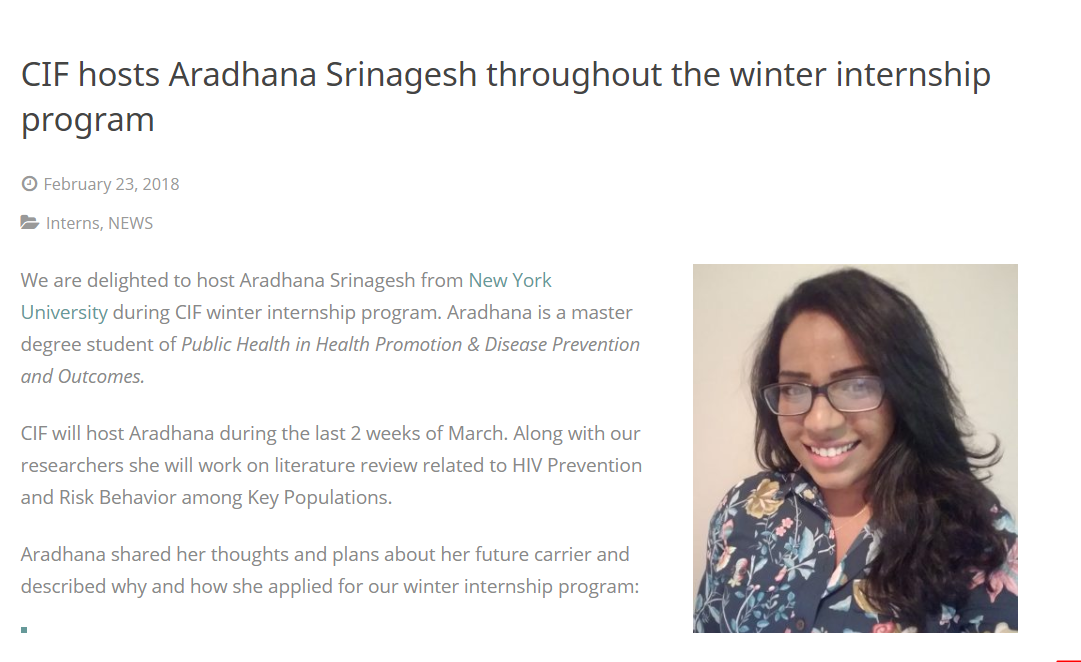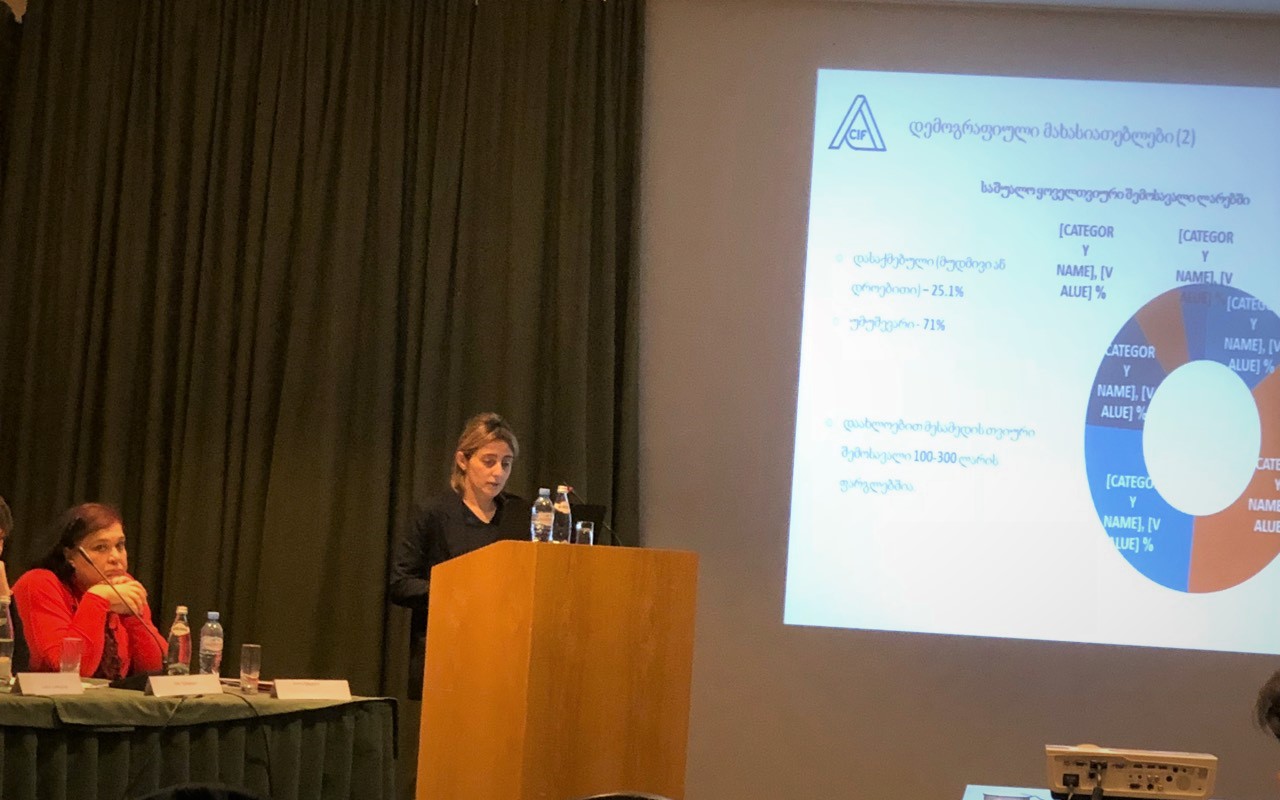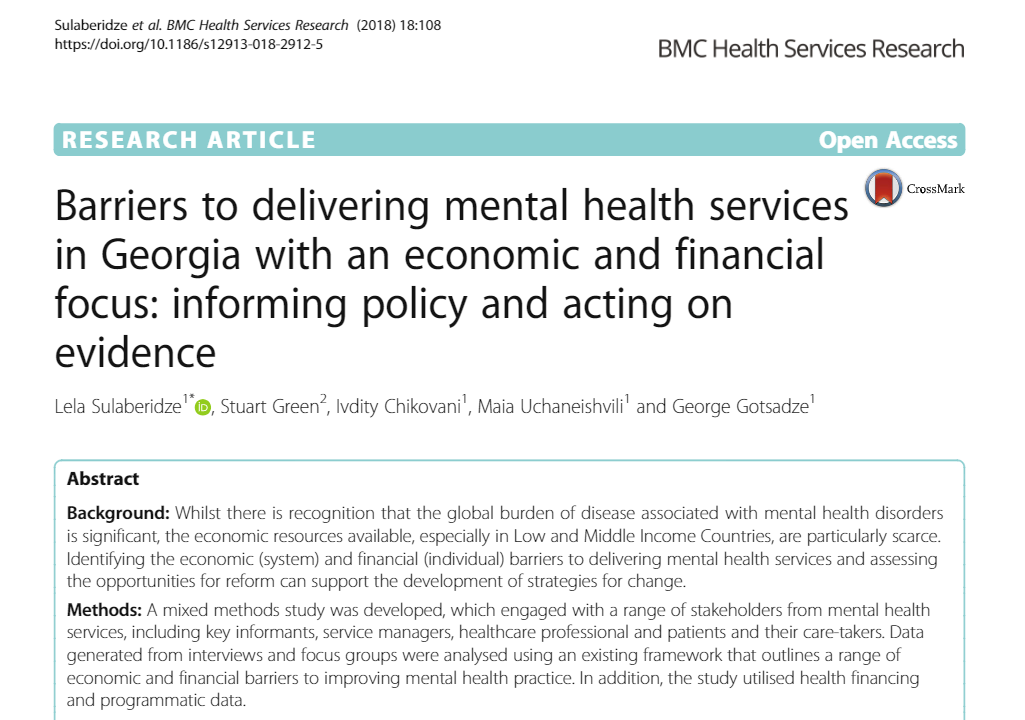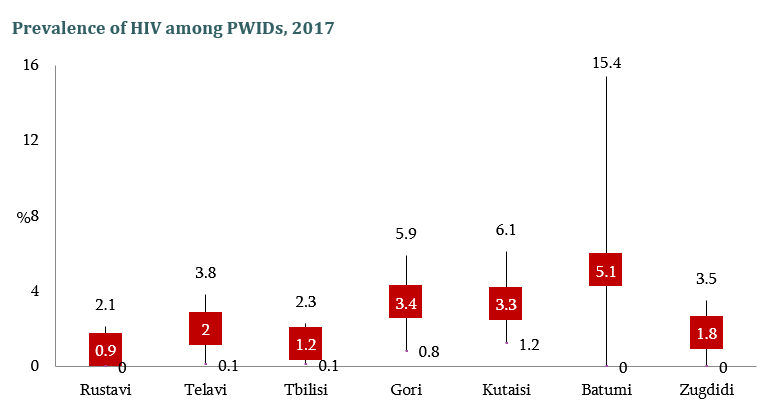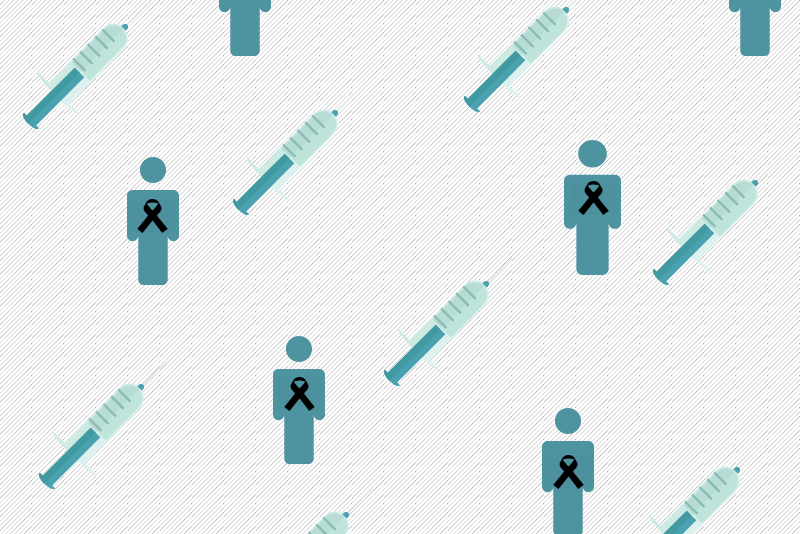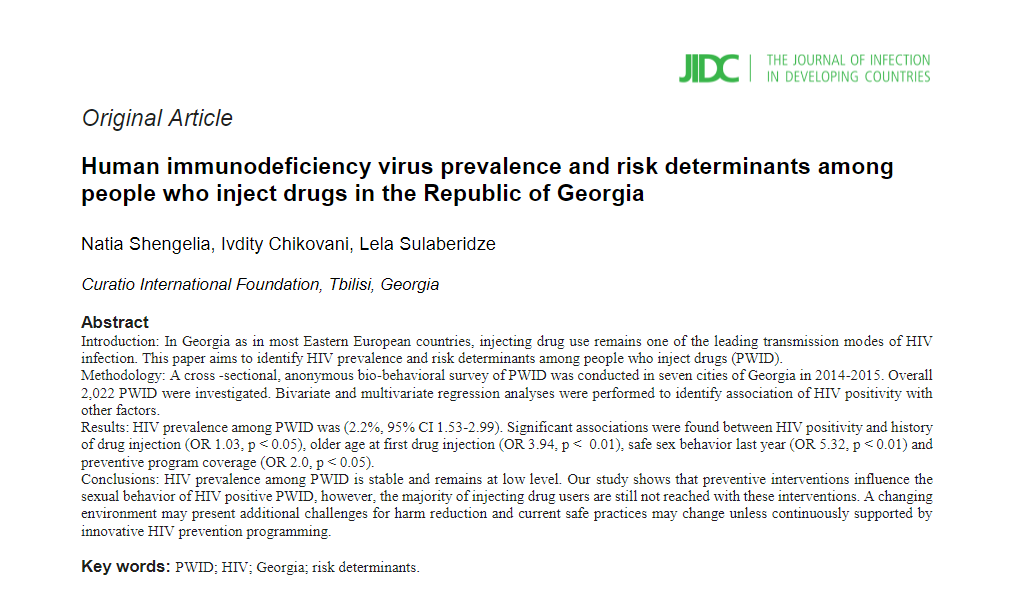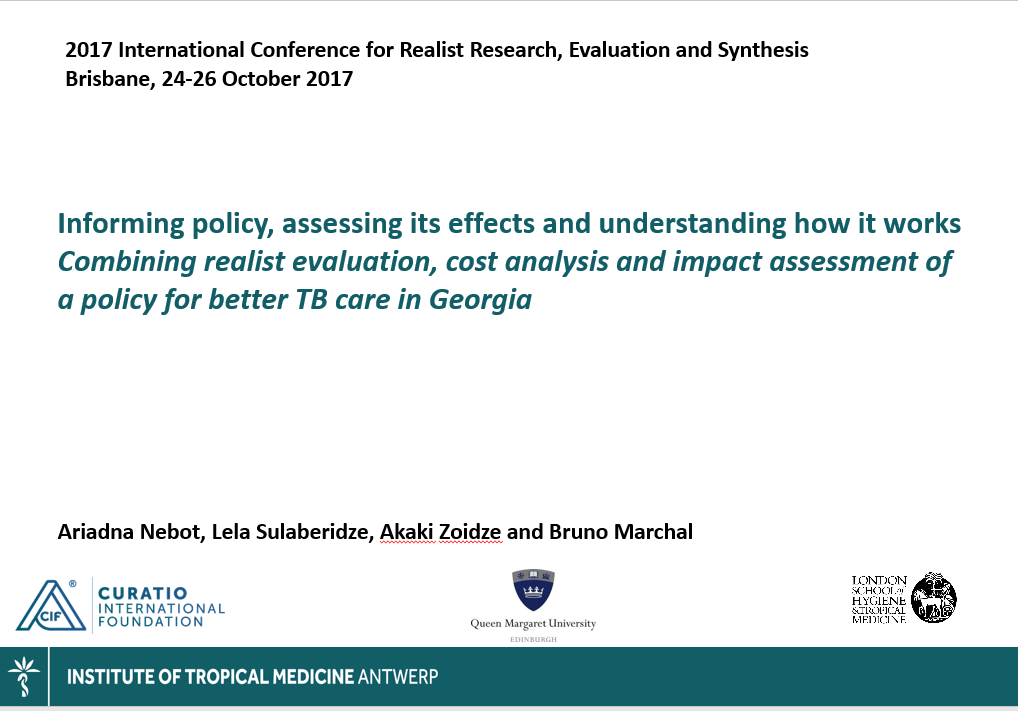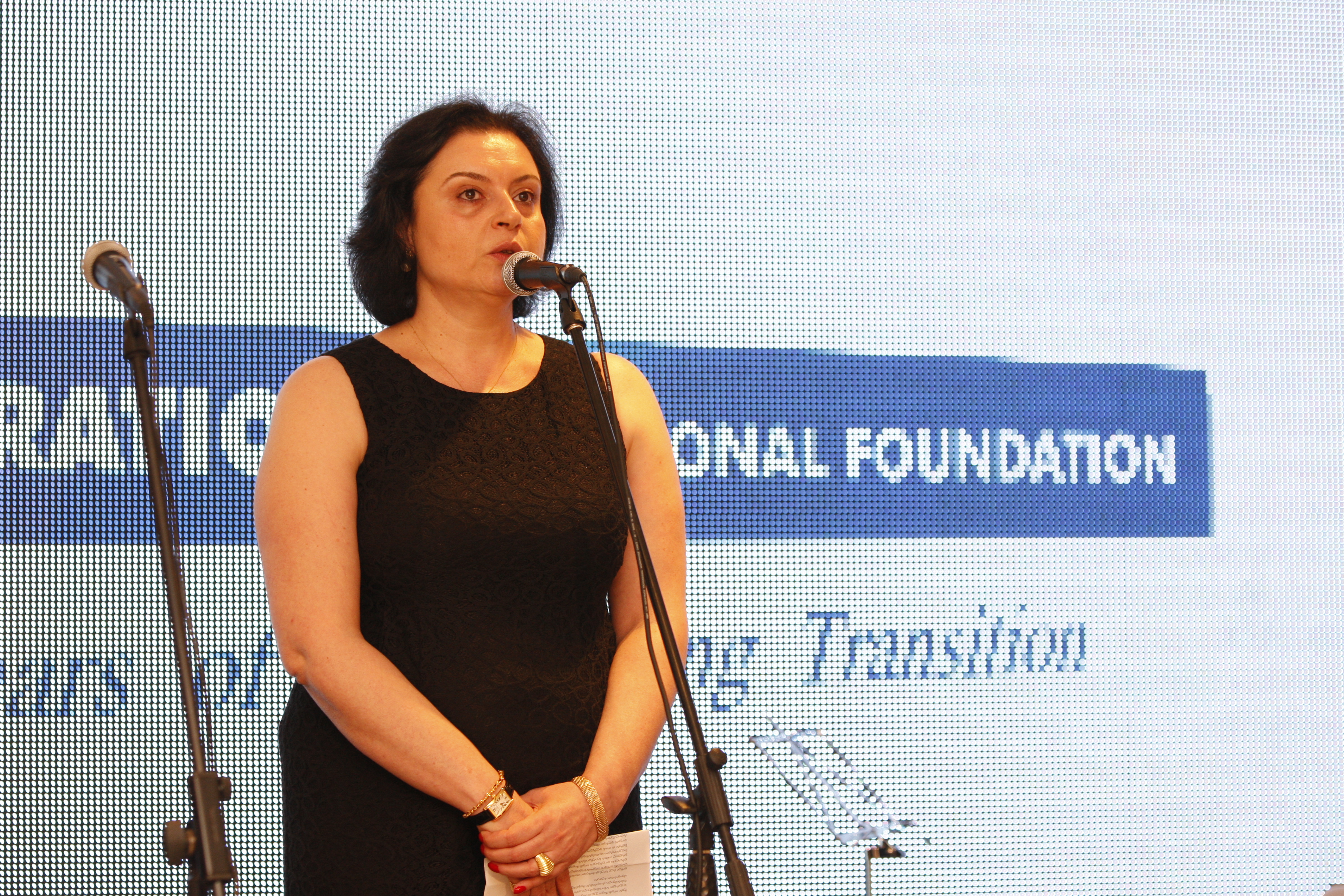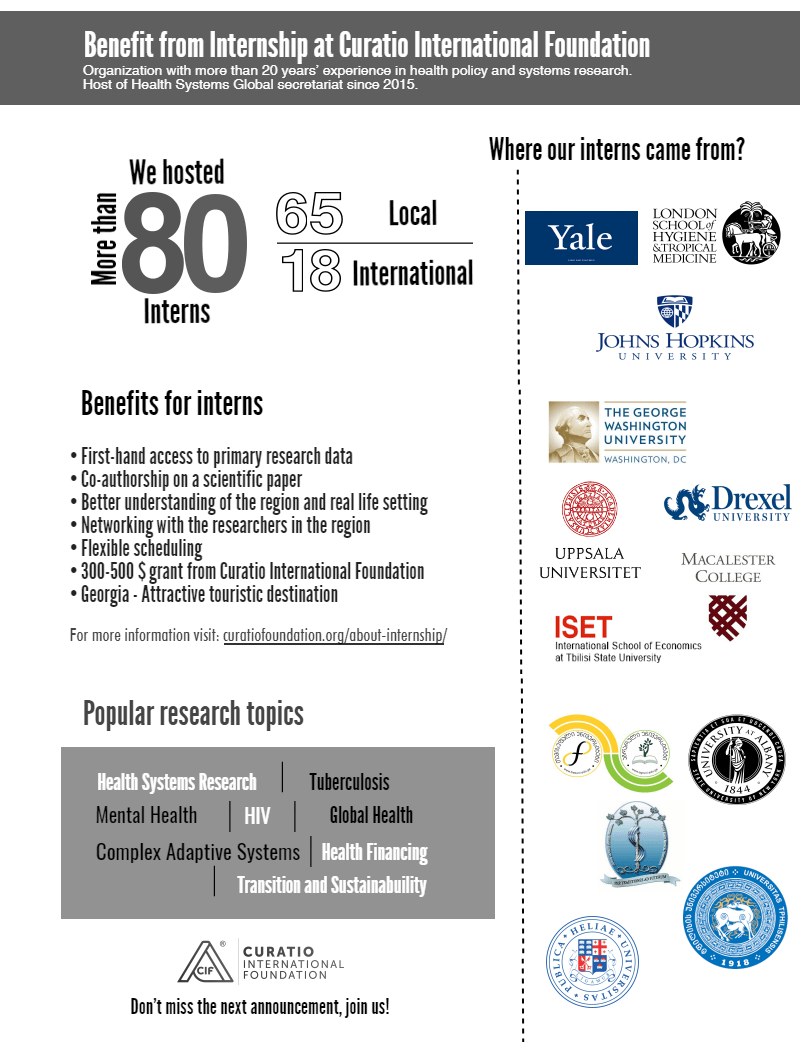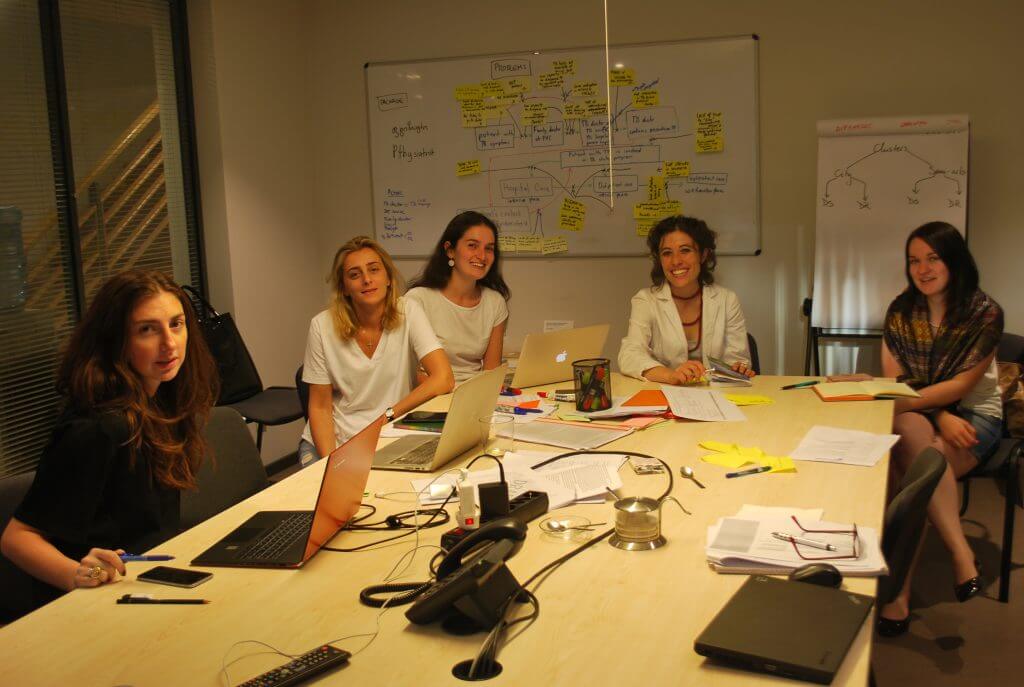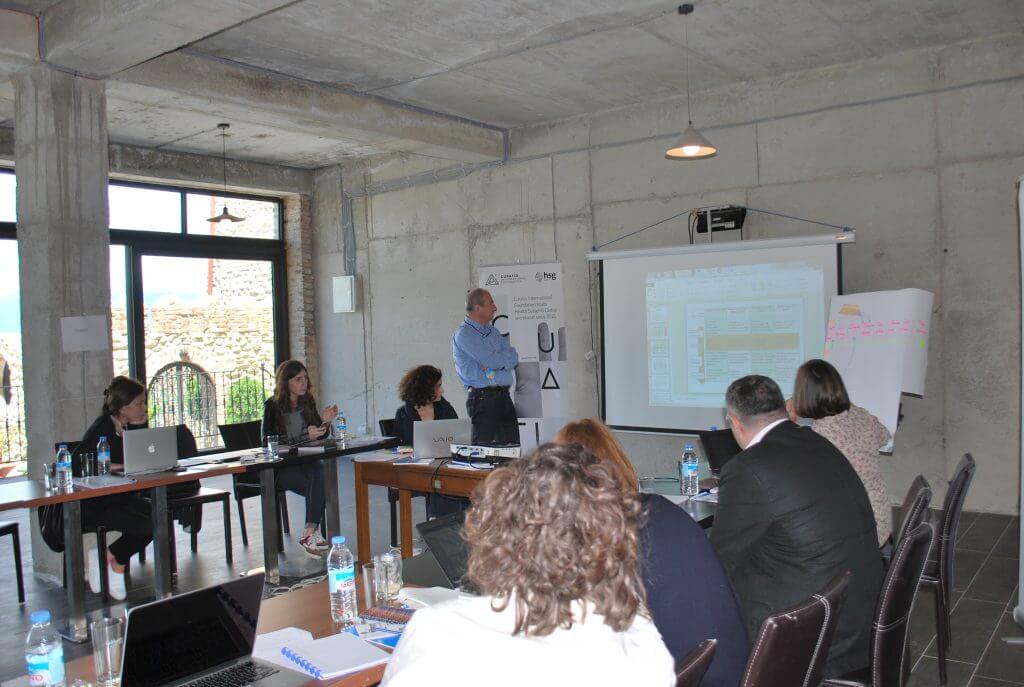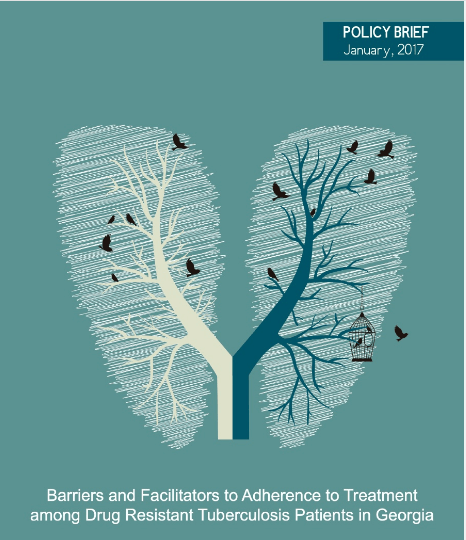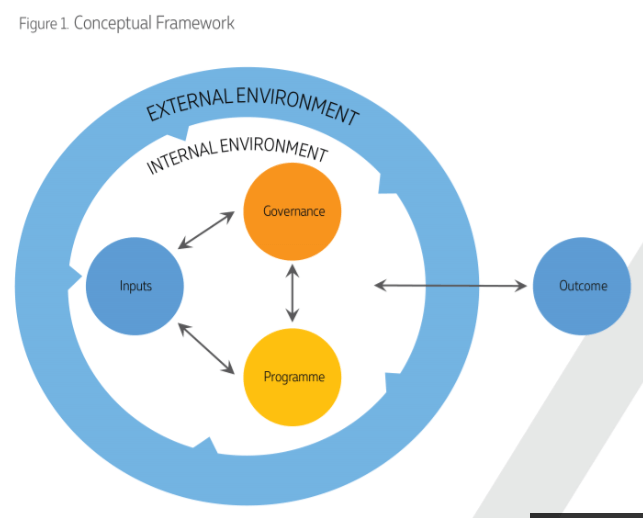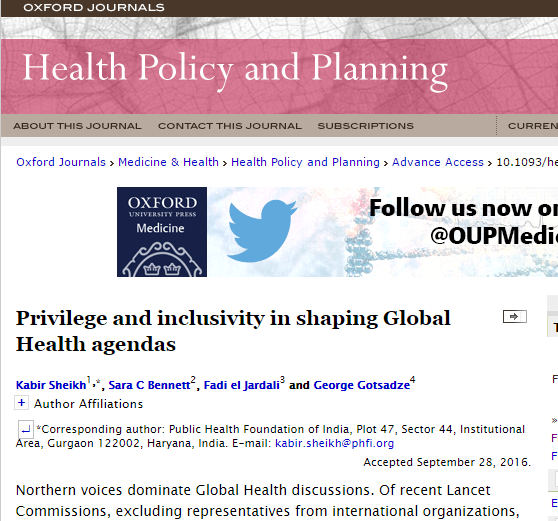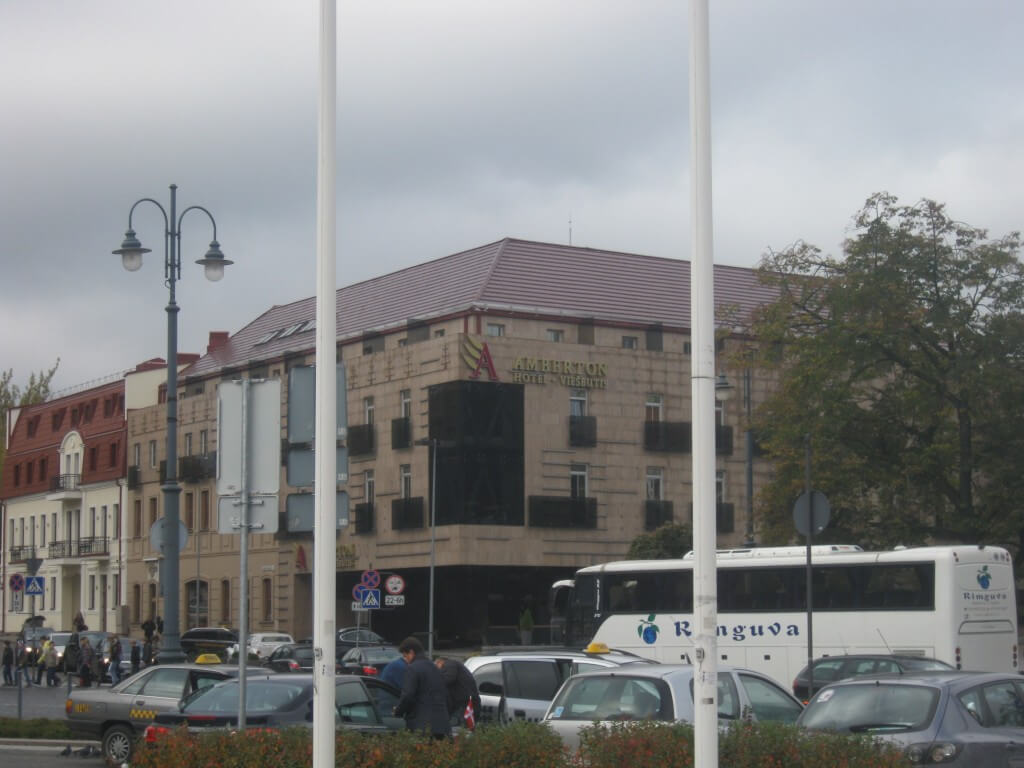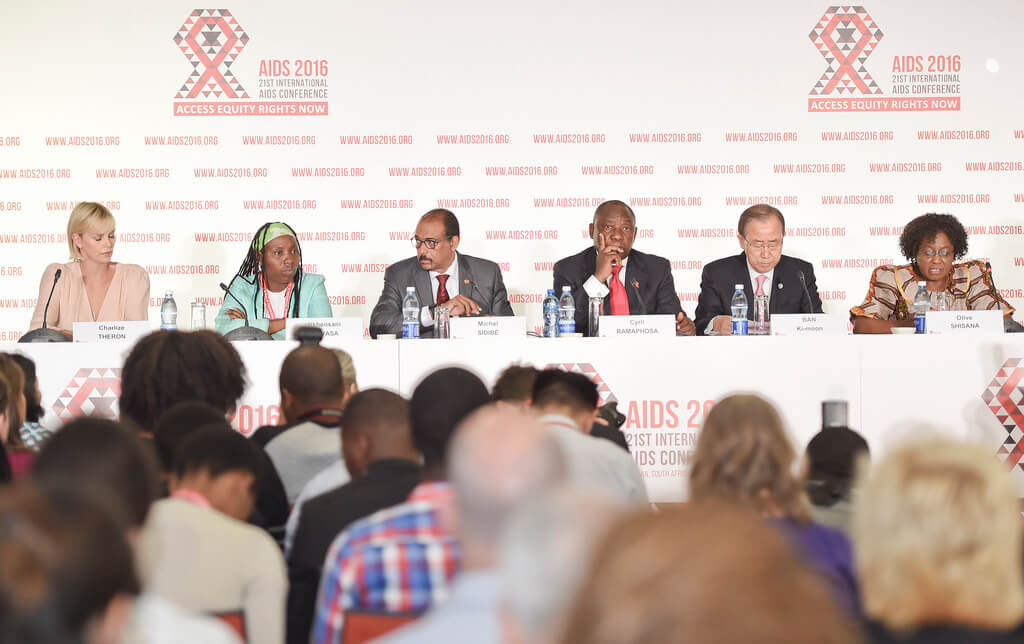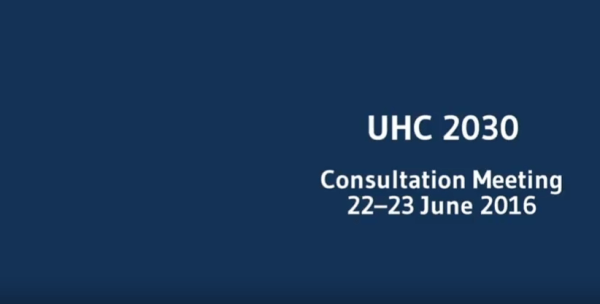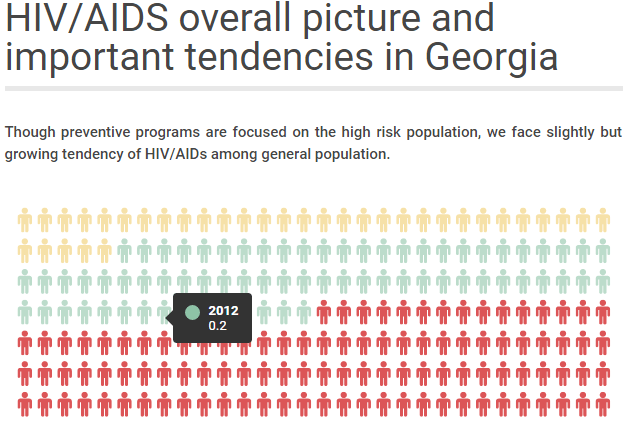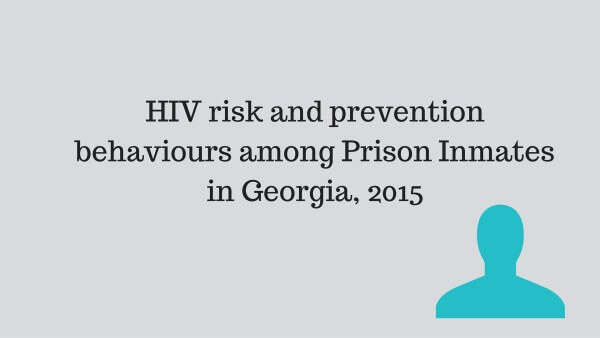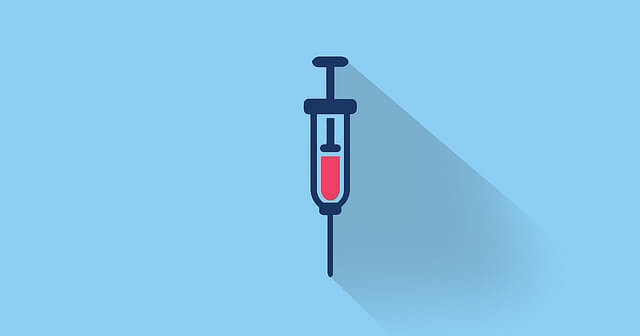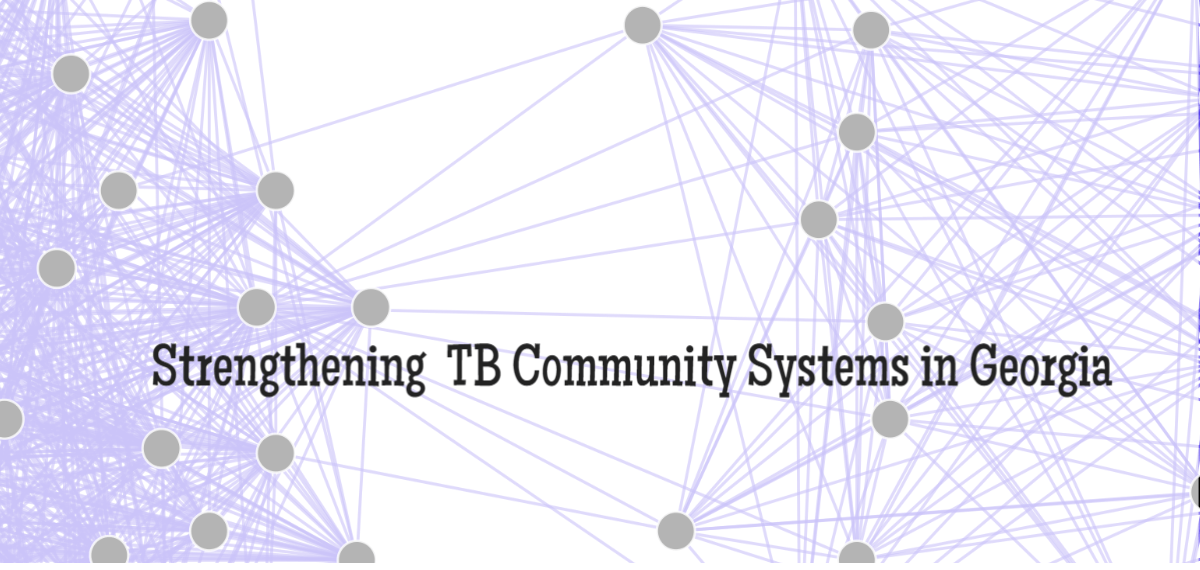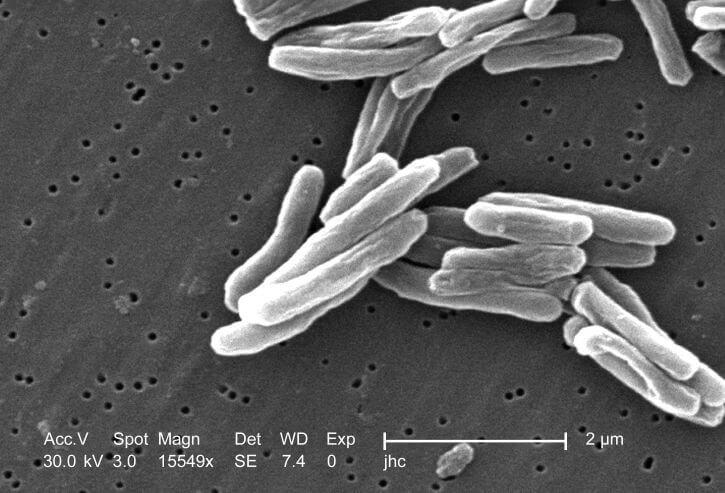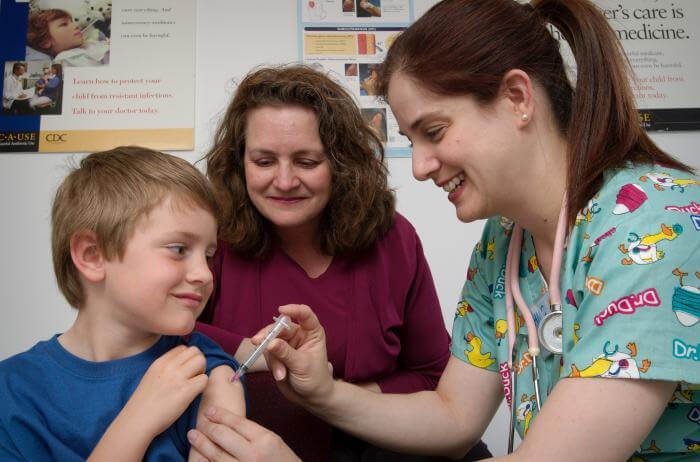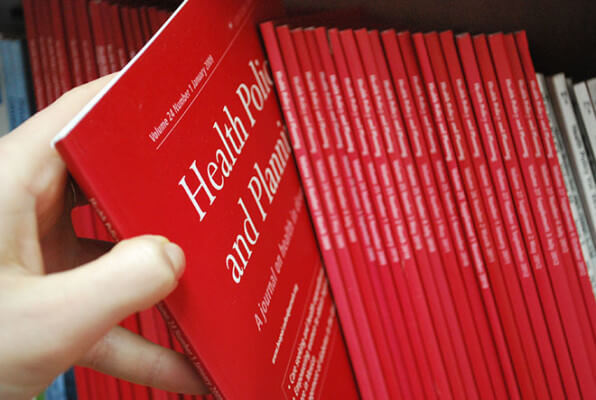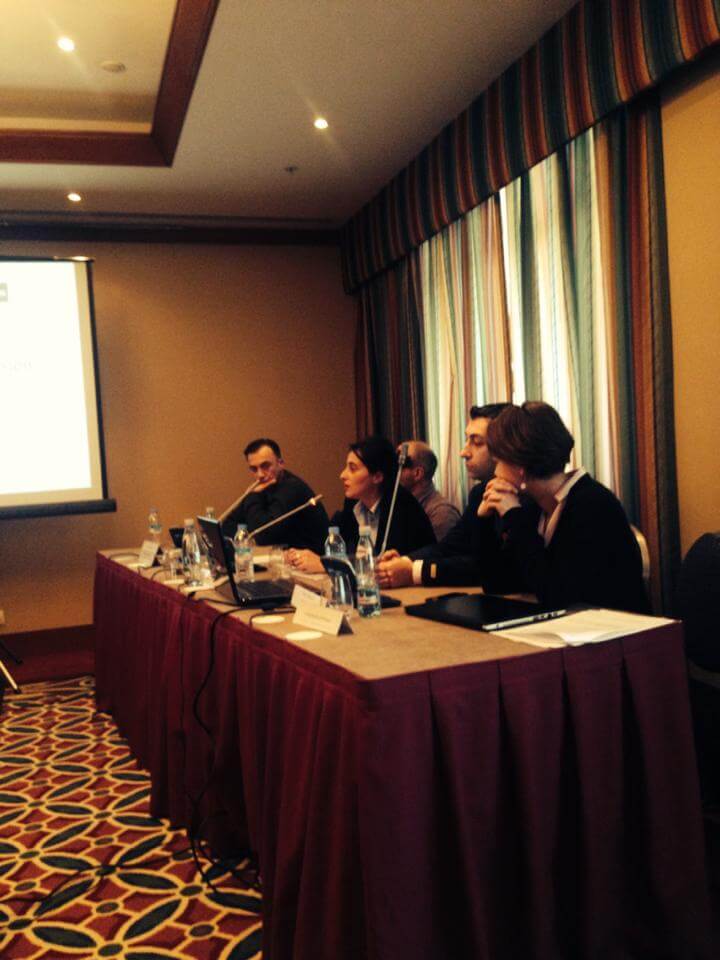GEORGIA COVID-19 VACCINE COMMUNICATIONS CAMPAIGN TO ADDRESS HESITANCY ISSUES
Authors: Ina Charkviani, Journalist and Communications Specialist, Curatio International Foundation and Lela Sturua, Head of Non-Communicable Disease Department, National Center for Disease Control (NCDC) of Georgia
As the COVID-19 pandemic continues to shake the globe, signs of hope are beginning to emerge as countries start implementing COVID-19 vaccination campaigns. Early evidence tells us the welcoming news that these vaccines are driving down both new cases and mortality rates. However, challenges related to access, equity, and hesitancy remain.
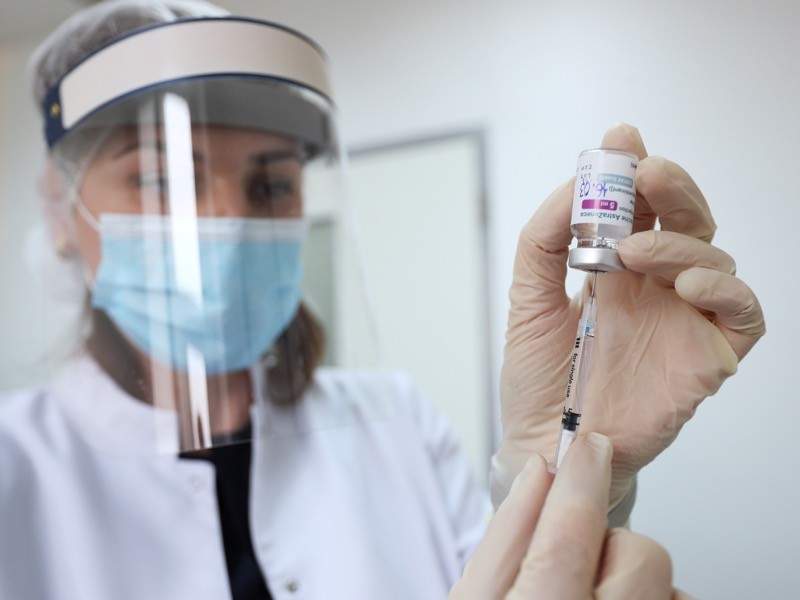
Georgia launched the COVID-19 vaccination program with the goal of vaccinating at least 60% of its adult population. Key stakeholders in the country, involving more than 100 experts and civil society representatives, worked with the National Center for Disease Control and Public Health (NCDCPH) to develop the country’s National Vaccine Deployment Plan (NVDP), which was approved in January.
As laid out in the NVDP, the vaccination process is divided into three phases. The first phase involves vaccinating the first 14% of the population and covers health care workers, beneficiaries of long-term care facilities, their staff, people over the age of 65, and other high risk-groups. The second phase will cover around 26% of the population, including the age group 55-64 and people with chronic diseases aged 18-54. During the third phase, around 60% of the total adult population will be covered.
Experts recognize that they will have to grapple with the rising issue of vaccine hesitancy in order to reach the goals set out in their NVDP. Results of a public opinion survey conducted by the National Democratic Institute (NDI) in December 2020 showed extremely low demand for the COVID-19 vaccine throughout the country, and demand decreased even further in February. When asked “If the coronavirus vaccine were available, would you and your children be vaccinated?” only 35 % of respondents agreed that they would get the vaccine.
A key component of Georgia’s NVDP that aims to address these challenges is a vaccination communication campaign to boost public awareness and facilitate knowledge-based decision-making. The campaign prioritizes several activities, such as mobilizing influential speakers to support vaccination, strengthening social listening and public communication, providing risk groups with competent advice and informational materials, and conducting an informational meeting with the leaders of the Orthodox Church. The objectives of the campaign are to increase public awareness of the vaccine and its benefits, provide transparent information, and strengthen the media’s competence to ensure evidence-based, responsible and accurate reporting. Stakeholders hope these priority activities will lead to an increase in acceptance of the COVID-19 vaccine .
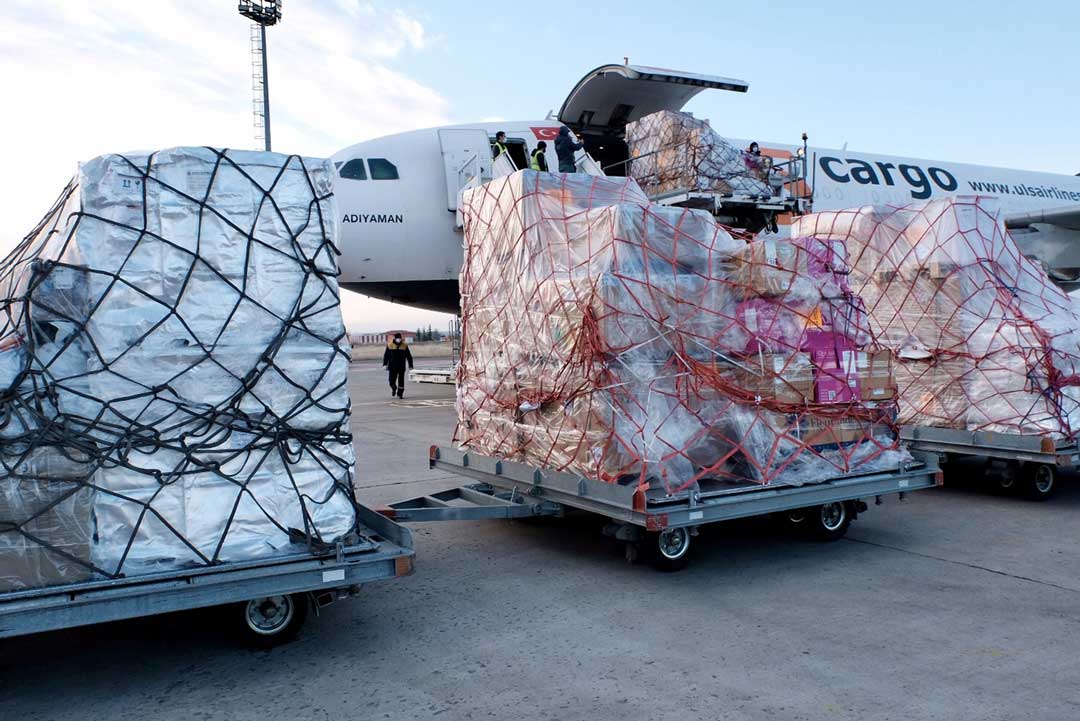
Georgia received the first batch of COVID-19 doses in mid-March: 43,200 doses of the AstraZeneca/Oxford vaccine followed by 29,250 doses of the Pfizer-BioNTech, both of which were delivered through the COVAX facility. 100,000 doses of SINOPHARM also arrived in early April, though the use of SiNOPHARM will be delayed until it is authorized by the World Health Organization.
Unfortunately, Georgia encountered a number of challenges in the early stages of its introduction, which served to further shake public confidence in an already highly hesitant environment. There was widespread dissatisfaction about the delayed start of the vaccination program as well as the delayed communication campaign, which should have preceded introduction of the vaccine. The program launch coincided with the suspension of the AstraZeneca vaccine in a number of European countries as potential safety concerns were evaluated. Although the region has since resumed vaccination, there was some damage to the public perception of the vaccine . The Georgia vaccination program also received another shock when a nurse went into anaphylactic shock shortly after her vaccination – a case which is under investigation but has been widely reported in the media.
The communication campaign now faces a tremendous challenge as it attempts to restore public confidence in the vaccine. To ensure optimal trust and acceptance, communication efforts will be coordinated between numerous stakeholders, among them policy makers, civil society organizations, scientists, academicians, critical and negatively disposed groups, and business representatives. Through this network of champions, a continuous flow of information should be provided to relevant institutions and related public groups. The success of the communications campaign will determine the proportion of the population that will take part in the voluntary vaccination process as well as the pace of progress towards meeting the vaccination targets. Stakeholders are hopeful that the right communications campaign will increase the community’s willingness and readiness to end the pandemic.
The blog was originally published on the LNCT website.
Latest News
Integrated Bio-behavioral surveillance and population size estimation survey among Female Sex Workers in Tbilisi and Batumi, Georgia, in 2024
As the COVID-19 pandemic continues to shake the globe, signs of hope are beginning to emerge as countries start implementing COVID-19 vaccination campaigns. Early evidence tells us the welcoming news that these vaccines are driving down both new cases and mortality rates. However, challenges related to access, equity, and hesitancy remain.
Curatio International Foundation at Eighth Global Symposium on Health Systems Research (HSR2024)
As the COVID-19 pandemic continues to shake the globe, signs of hope are beginning to emerge as countries start implementing COVID-19 vaccination campaigns. Early evidence tells us the welcoming news that these vaccines are driving down both new cases and mortality rates. However, challenges related to access, equity, and hesitancy remain.
“The Informatics and Data Science for Public Health: Sustainment Plan for Skilled Labor Force Development”
As the COVID-19 pandemic continues to shake the globe, signs of hope are beginning to emerge as countries start implementing COVID-19 vaccination campaigns. Early evidence tells us the welcoming news that these vaccines are driving down both new cases and mortality rates. However, challenges related to access, equity, and hesitancy remain.
Janina Stauke from the London School of Hygiene and Tropical Medicine shares her internship experience
As the COVID-19 pandemic continues to shake the globe, signs of hope are beginning to emerge as countries start implementing COVID-19 vaccination campaigns. Early evidence tells us the welcoming news that these vaccines are driving down both new cases and mortality rates. However, challenges related to access, equity, and hesitancy remain.
Jolly Mae Catalan fromUniversité Libre de Bruxelles shares her internship experience
As the COVID-19 pandemic continues to shake the globe, signs of hope are beginning to emerge as countries start implementing COVID-19 vaccination campaigns. Early evidence tells us the welcoming news that these vaccines are driving down both new cases and mortality rates. However, challenges related to access, equity, and hesitancy remain.
Georgia’s Journey to Integrating Rehabilitation Services into the Health System: Insights and Lessons
As the COVID-19 pandemic continues to shake the globe, signs of hope are beginning to emerge as countries start implementing COVID-19 vaccination campaigns. Early evidence tells us the welcoming news that these vaccines are driving down both new cases and mortality rates. However, challenges related to access, equity, and hesitancy remain.
Report on Rehabilitation Data Flow in Georgia’s Health Information System
As the COVID-19 pandemic continues to shake the globe, signs of hope are beginning to emerge as countries start implementing COVID-19 vaccination campaigns. Early evidence tells us the welcoming news that these vaccines are driving down both new cases and mortality rates. However, challenges related to access, equity, and hesitancy remain.
Georgia: a primary health care case study in the context of the COVID-19 pandemic
As the COVID-19 pandemic continues to shake the globe, signs of hope are beginning to emerge as countries start implementing COVID-19 vaccination campaigns. Early evidence tells us the welcoming news that these vaccines are driving down both new cases and mortality rates. However, challenges related to access, equity, and hesitancy remain.
Adult vaccination in Asia and the Pacific
As the COVID-19 pandemic continues to shake the globe, signs of hope are beginning to emerge as countries start implementing COVID-19 vaccination campaigns. Early evidence tells us the welcoming news that these vaccines are driving down both new cases and mortality rates. However, challenges related to access, equity, and hesitancy remain.
Assessment of the Quality of Maternal and Neonatal Services in Montenegro
As the COVID-19 pandemic continues to shake the globe, signs of hope are beginning to emerge as countries start implementing COVID-19 vaccination campaigns. Early evidence tells us the welcoming news that these vaccines are driving down both new cases and mortality rates. However, challenges related to access, equity, and hesitancy remain.
Barometer Study: Pharmaceutical Sector in Georgia
As the COVID-19 pandemic continues to shake the globe, signs of hope are beginning to emerge as countries start implementing COVID-19 vaccination campaigns. Early evidence tells us the welcoming news that these vaccines are driving down both new cases and mortality rates. However, challenges related to access, equity, and hesitancy remain.
Call for Internship 2024
As the COVID-19 pandemic continues to shake the globe, signs of hope are beginning to emerge as countries start implementing COVID-19 vaccination campaigns. Early evidence tells us the welcoming news that these vaccines are driving down both new cases and mortality rates. However, challenges related to access, equity, and hesitancy remain.
Georgian state rehabilitation program: implementation research study report
As the COVID-19 pandemic continues to shake the globe, signs of hope are beginning to emerge as countries start implementing COVID-19 vaccination campaigns. Early evidence tells us the welcoming news that these vaccines are driving down both new cases and mortality rates. However, challenges related to access, equity, and hesitancy remain.
NEW Barometer, study focusing on the pharmaceutical sector
As the COVID-19 pandemic continues to shake the globe, signs of hope are beginning to emerge as countries start implementing COVID-19 vaccination campaigns. Early evidence tells us the welcoming news that these vaccines are driving down both new cases and mortality rates. However, challenges related to access, equity, and hesitancy remain.
Strengthening Health Systems for Accessible Rehabilitation Services in Georgia
As the COVID-19 pandemic continues to shake the globe, signs of hope are beginning to emerge as countries start implementing COVID-19 vaccination campaigns. Early evidence tells us the welcoming news that these vaccines are driving down both new cases and mortality rates. However, challenges related to access, equity, and hesitancy remain.
Linked’s workshop on HPV vaccine introduction and scale up, held on July 11-12th, 2023
As the COVID-19 pandemic continues to shake the globe, signs of hope are beginning to emerge as countries start implementing COVID-19 vaccination campaigns. Early evidence tells us the welcoming news that these vaccines are driving down both new cases and mortality rates. However, challenges related to access, equity, and hesitancy remain.
Training program focusing on interdisciplinary evaluation of rehabilitation interventions and patient outcomes
As the COVID-19 pandemic continues to shake the globe, signs of hope are beginning to emerge as countries start implementing COVID-19 vaccination campaigns. Early evidence tells us the welcoming news that these vaccines are driving down both new cases and mortality rates. However, challenges related to access, equity, and hesitancy remain.
Unlocking Success Through Learning: Workshop on Strengthening HR Capacity and Performance Management in Immunization
As the COVID-19 pandemic continues to shake the globe, signs of hope are beginning to emerge as countries start implementing COVID-19 vaccination campaigns. Early evidence tells us the welcoming news that these vaccines are driving down both new cases and mortality rates. However, challenges related to access, equity, and hesitancy remain.
Promote evidence-based policies in the pharmaceutical sector by generating evidence and fostering civic engagement
As the COVID-19 pandemic continues to shake the globe, signs of hope are beginning to emerge as countries start implementing COVID-19 vaccination campaigns. Early evidence tells us the welcoming news that these vaccines are driving down both new cases and mortality rates. However, challenges related to access, equity, and hesitancy remain.
CIF and the Results for Development / Accelerator combined their expertise to co-author an insightful blog, shedding light on Georgia’s commendable efforts to overcome limited data challenges and develop evidence-based policies for financing rehabilitation services
As the COVID-19 pandemic continues to shake the globe, signs of hope are beginning to emerge as countries start implementing COVID-19 vaccination campaigns. Early evidence tells us the welcoming news that these vaccines are driving down both new cases and mortality rates. However, challenges related to access, equity, and hesitancy remain.
Culminating event – Building Institutional Capacity for Health Policy and Systems Research and Delivery science (BIRD) in six WHO Regions
As the COVID-19 pandemic continues to shake the globe, signs of hope are beginning to emerge as countries start implementing COVID-19 vaccination campaigns. Early evidence tells us the welcoming news that these vaccines are driving down both new cases and mortality rates. However, challenges related to access, equity, and hesitancy remain.
Report on Phased (Stepwise) Plan for the Capability Development of the Priority Rehabilitation Services
As the COVID-19 pandemic continues to shake the globe, signs of hope are beginning to emerge as countries start implementing COVID-19 vaccination campaigns. Early evidence tells us the welcoming news that these vaccines are driving down both new cases and mortality rates. However, challenges related to access, equity, and hesitancy remain.
Report on prioritization of rehabilitation services in Georgia
As the COVID-19 pandemic continues to shake the globe, signs of hope are beginning to emerge as countries start implementing COVID-19 vaccination campaigns. Early evidence tells us the welcoming news that these vaccines are driving down both new cases and mortality rates. However, challenges related to access, equity, and hesitancy remain.
Report on Rehabilitation Service Costing and Budgeting
As the COVID-19 pandemic continues to shake the globe, signs of hope are beginning to emerge as countries start implementing COVID-19 vaccination campaigns. Early evidence tells us the welcoming news that these vaccines are driving down both new cases and mortality rates. However, challenges related to access, equity, and hesitancy remain.
Mental health of young people during the COVID-19 pandemic
As the COVID-19 pandemic continues to shake the globe, signs of hope are beginning to emerge as countries start implementing COVID-19 vaccination campaigns. Early evidence tells us the welcoming news that these vaccines are driving down both new cases and mortality rates. However, challenges related to access, equity, and hesitancy remain.
Promote evidence-based policies in the pharmaceutical sector by generating evidence
As the COVID-19 pandemic continues to shake the globe, signs of hope are beginning to emerge as countries start implementing COVID-19 vaccination campaigns. Early evidence tells us the welcoming news that these vaccines are driving down both new cases and mortality rates. However, challenges related to access, equity, and hesitancy remain.
Mandatory Vaccination and Green Passes – Review of International Experience
As the COVID-19 pandemic continues to shake the globe, signs of hope are beginning to emerge as countries start implementing COVID-19 vaccination campaigns. Early evidence tells us the welcoming news that these vaccines are driving down both new cases and mortality rates. However, challenges related to access, equity, and hesitancy remain.
Sustaining Public Health Gains after Donor Transition: What can we learn about Georgia?
As the COVID-19 pandemic continues to shake the globe, signs of hope are beginning to emerge as countries start implementing COVID-19 vaccination campaigns. Early evidence tells us the welcoming news that these vaccines are driving down both new cases and mortality rates. However, challenges related to access, equity, and hesitancy remain.
Curatio International Foundation at Seventh Global Symposium on Health Systems Research (HSR2022)
As the COVID-19 pandemic continues to shake the globe, signs of hope are beginning to emerge as countries start implementing COVID-19 vaccination campaigns. Early evidence tells us the welcoming news that these vaccines are driving down both new cases and mortality rates. However, challenges related to access, equity, and hesitancy remain.
Curatio International Foundation at Global Symposium on Health Systems Research
As the COVID-19 pandemic continues to shake the globe, signs of hope are beginning to emerge as countries start implementing COVID-19 vaccination campaigns. Early evidence tells us the welcoming news that these vaccines are driving down both new cases and mortality rates. However, challenges related to access, equity, and hesitancy remain.
EECA HIV Sustainability Summit 2022 in Tbilisi
As the COVID-19 pandemic continues to shake the globe, signs of hope are beginning to emerge as countries start implementing COVID-19 vaccination campaigns. Early evidence tells us the welcoming news that these vaccines are driving down both new cases and mortality rates. However, challenges related to access, equity, and hesitancy remain.
Study report: Adaptations made in TB response during Covid-19 pandemic in Georgia
As the COVID-19 pandemic continues to shake the globe, signs of hope are beginning to emerge as countries start implementing COVID-19 vaccination campaigns. Early evidence tells us the welcoming news that these vaccines are driving down both new cases and mortality rates. However, challenges related to access, equity, and hesitancy remain.
New review of our recent study on Immunization in Kazakhstan
As the COVID-19 pandemic continues to shake the globe, signs of hope are beginning to emerge as countries start implementing COVID-19 vaccination campaigns. Early evidence tells us the welcoming news that these vaccines are driving down both new cases and mortality rates. However, challenges related to access, equity, and hesitancy remain.
New case study: Sustaining effective coverage with Opioid Substitution Therapy (OST) in Georgia in the context of transition from external assistance
As the COVID-19 pandemic continues to shake the globe, signs of hope are beginning to emerge as countries start implementing COVID-19 vaccination campaigns. Early evidence tells us the welcoming news that these vaccines are driving down both new cases and mortality rates. However, challenges related to access, equity, and hesitancy remain.
New case study: National Immunisation Program Transition from external assistance
As the COVID-19 pandemic continues to shake the globe, signs of hope are beginning to emerge as countries start implementing COVID-19 vaccination campaigns. Early evidence tells us the welcoming news that these vaccines are driving down both new cases and mortality rates. However, challenges related to access, equity, and hesitancy remain.
“Strengthening Health Systems for Accessible Rehabilitation Services in Georgia” – Workshop
As the COVID-19 pandemic continues to shake the globe, signs of hope are beginning to emerge as countries start implementing COVID-19 vaccination campaigns. Early evidence tells us the welcoming news that these vaccines are driving down both new cases and mortality rates. However, challenges related to access, equity, and hesitancy remain.
Strengthening the Delivery of Immunisation Services Through PHC Platforms-Workshop
As the COVID-19 pandemic continues to shake the globe, signs of hope are beginning to emerge as countries start implementing COVID-19 vaccination campaigns. Early evidence tells us the welcoming news that these vaccines are driving down both new cases and mortality rates. However, challenges related to access, equity, and hesitancy remain.
Call for internship 2022
As the COVID-19 pandemic continues to shake the globe, signs of hope are beginning to emerge as countries start implementing COVID-19 vaccination campaigns. Early evidence tells us the welcoming news that these vaccines are driving down both new cases and mortality rates. However, challenges related to access, equity, and hesitancy remain.
New Article published in the journal Frontiers in Public Health
As the COVID-19 pandemic continues to shake the globe, signs of hope are beginning to emerge as countries start implementing COVID-19 vaccination campaigns. Early evidence tells us the welcoming news that these vaccines are driving down both new cases and mortality rates. However, challenges related to access, equity, and hesitancy remain.
New Paper: A transdiagnostic psychosocial prevention-intervention service for young people in the Republic of Georgia
As the COVID-19 pandemic continues to shake the globe, signs of hope are beginning to emerge as countries start implementing COVID-19 vaccination campaigns. Early evidence tells us the welcoming news that these vaccines are driving down both new cases and mortality rates. However, challenges related to access, equity, and hesitancy remain.
Vaccine Procurement and Supply for the Expanded Program of Immunization in Kazakhstan
As the COVID-19 pandemic continues to shake the globe, signs of hope are beginning to emerge as countries start implementing COVID-19 vaccination campaigns. Early evidence tells us the welcoming news that these vaccines are driving down both new cases and mortality rates. However, challenges related to access, equity, and hesitancy remain.
Prevention of Addiction and Mental Health in Adolescents in Georgia (PAMAd) – Workshop
As the COVID-19 pandemic continues to shake the globe, signs of hope are beginning to emerge as countries start implementing COVID-19 vaccination campaigns. Early evidence tells us the welcoming news that these vaccines are driving down both new cases and mortality rates. However, challenges related to access, equity, and hesitancy remain.
Workshop to discuss the risk assessment of future TB migrants
As the COVID-19 pandemic continues to shake the globe, signs of hope are beginning to emerge as countries start implementing COVID-19 vaccination campaigns. Early evidence tells us the welcoming news that these vaccines are driving down both new cases and mortality rates. However, challenges related to access, equity, and hesitancy remain.
Webinar : Matters of Scale and Integration in Digital Health Ecosystems
As the COVID-19 pandemic continues to shake the globe, signs of hope are beginning to emerge as countries start implementing COVID-19 vaccination campaigns. Early evidence tells us the welcoming news that these vaccines are driving down both new cases and mortality rates. However, challenges related to access, equity, and hesitancy remain.
Immunisation Action Network
As the COVID-19 pandemic continues to shake the globe, signs of hope are beginning to emerge as countries start implementing COVID-19 vaccination campaigns. Early evidence tells us the welcoming news that these vaccines are driving down both new cases and mortality rates. However, challenges related to access, equity, and hesitancy remain.
Data Analysis and Synthesis Workshop – analyzing the implications of the structure of Georgia’s private healthcare market for quality and accessibility
As the COVID-19 pandemic continues to shake the globe, signs of hope are beginning to emerge as countries start implementing COVID-19 vaccination campaigns. Early evidence tells us the welcoming news that these vaccines are driving down both new cases and mortality rates. However, challenges related to access, equity, and hesitancy remain.
External Reference Pricing Policy: A Possible Pharmaceutical Price Regulation Policy in Georgia
As the COVID-19 pandemic continues to shake the globe, signs of hope are beginning to emerge as countries start implementing COVID-19 vaccination campaigns. Early evidence tells us the welcoming news that these vaccines are driving down both new cases and mortality rates. However, challenges related to access, equity, and hesitancy remain.
Rapid reviews of health policy and systems evidence
As the COVID-19 pandemic continues to shake the globe, signs of hope are beginning to emerge as countries start implementing COVID-19 vaccination campaigns. Early evidence tells us the welcoming news that these vaccines are driving down both new cases and mortality rates. However, challenges related to access, equity, and hesitancy remain.
Paper: Soviet legacy is still pervasive in health policy and systems research in the post-Soviet states
As the COVID-19 pandemic continues to shake the globe, signs of hope are beginning to emerge as countries start implementing COVID-19 vaccination campaigns. Early evidence tells us the welcoming news that these vaccines are driving down both new cases and mortality rates. However, challenges related to access, equity, and hesitancy remain.
Strategic Fellowship – series of training courses for students
As the COVID-19 pandemic continues to shake the globe, signs of hope are beginning to emerge as countries start implementing COVID-19 vaccination campaigns. Early evidence tells us the welcoming news that these vaccines are driving down both new cases and mortality rates. However, challenges related to access, equity, and hesitancy remain.
Georgian NIP faces challenges in sustaining the outcomes achieved
As the COVID-19 pandemic continues to shake the globe, signs of hope are beginning to emerge as countries start implementing COVID-19 vaccination campaigns. Early evidence tells us the welcoming news that these vaccines are driving down both new cases and mortality rates. However, challenges related to access, equity, and hesitancy remain.
CIF Internship Program 2021
As the COVID-19 pandemic continues to shake the globe, signs of hope are beginning to emerge as countries start implementing COVID-19 vaccination campaigns. Early evidence tells us the welcoming news that these vaccines are driving down both new cases and mortality rates. However, challenges related to access, equity, and hesitancy remain.
Enroll to the CIF’s Strategic Fellowship Programme
As the COVID-19 pandemic continues to shake the globe, signs of hope are beginning to emerge as countries start implementing COVID-19 vaccination campaigns. Early evidence tells us the welcoming news that these vaccines are driving down both new cases and mortality rates. However, challenges related to access, equity, and hesitancy remain.
Article: How do participatory methods shape policy? Applying a realist approach to the formulation of a new tuberculosis policy in Georgia
As the COVID-19 pandemic continues to shake the globe, signs of hope are beginning to emerge as countries start implementing COVID-19 vaccination campaigns. Early evidence tells us the welcoming news that these vaccines are driving down both new cases and mortality rates. However, challenges related to access, equity, and hesitancy remain.
Bundled Payment Methods: An Alternative Payment Method to Contain Healthcare Costs in Georgia
As the COVID-19 pandemic continues to shake the globe, signs of hope are beginning to emerge as countries start implementing COVID-19 vaccination campaigns. Early evidence tells us the welcoming news that these vaccines are driving down both new cases and mortality rates. However, challenges related to access, equity, and hesitancy remain.
HOW TO MAINTAIN ROUTINE IMMUNIZATION DURING COVID-19? EXPERIENCES FROM ARMENIA, GEORGIA, AND UZBEKISTAN
As the COVID-19 pandemic continues to shake the globe, signs of hope are beginning to emerge as countries start implementing COVID-19 vaccination campaigns. Early evidence tells us the welcoming news that these vaccines are driving down both new cases and mortality rates. However, challenges related to access, equity, and hesitancy remain.
DRUG CHECKING: An Essential Response to Emerging Harm Reduction Needs
As the COVID-19 pandemic continues to shake the globe, signs of hope are beginning to emerge as countries start implementing COVID-19 vaccination campaigns. Early evidence tells us the welcoming news that these vaccines are driving down both new cases and mortality rates. However, challenges related to access, equity, and hesitancy remain.
Supporting Evidence-Informed Policy making and Action in Six WHO Regions
As the COVID-19 pandemic continues to shake the globe, signs of hope are beginning to emerge as countries start implementing COVID-19 vaccination campaigns. Early evidence tells us the welcoming news that these vaccines are driving down both new cases and mortality rates. However, challenges related to access, equity, and hesitancy remain.
Georgian Healthcare Barometer XIV Wave The analysis of financial stability and risks in healthcare
As the COVID-19 pandemic continues to shake the globe, signs of hope are beginning to emerge as countries start implementing COVID-19 vaccination campaigns. Early evidence tells us the welcoming news that these vaccines are driving down both new cases and mortality rates. However, challenges related to access, equity, and hesitancy remain.
Call for educational Strategic Policy Fellowship Program
As the COVID-19 pandemic continues to shake the globe, signs of hope are beginning to emerge as countries start implementing COVID-19 vaccination campaigns. Early evidence tells us the welcoming news that these vaccines are driving down both new cases and mortality rates. However, challenges related to access, equity, and hesitancy remain.
We are pleased to announce that The Sixth Global Symposium on Health Systems Research (HSR2020) has opened
As the COVID-19 pandemic continues to shake the globe, signs of hope are beginning to emerge as countries start implementing COVID-19 vaccination campaigns. Early evidence tells us the welcoming news that these vaccines are driving down both new cases and mortality rates. However, challenges related to access, equity, and hesitancy remain.
Discussing interim results of research project: Prevention of Addiction and Mental Health in Adolescents in Georgia (PAMAd)
As the COVID-19 pandemic continues to shake the globe, signs of hope are beginning to emerge as countries start implementing COVID-19 vaccination campaigns. Early evidence tells us the welcoming news that these vaccines are driving down both new cases and mortality rates. However, challenges related to access, equity, and hesitancy remain.
Effects of Pay for Performance on utilization and quality of care among Primary Health Care providers in Middle and High-Income countries
As the COVID-19 pandemic continues to shake the globe, signs of hope are beginning to emerge as countries start implementing COVID-19 vaccination campaigns. Early evidence tells us the welcoming news that these vaccines are driving down both new cases and mortality rates. However, challenges related to access, equity, and hesitancy remain.
Does pay for performance work to improve immunization coverage?
As the COVID-19 pandemic continues to shake the globe, signs of hope are beginning to emerge as countries start implementing COVID-19 vaccination campaigns. Early evidence tells us the welcoming news that these vaccines are driving down both new cases and mortality rates. However, challenges related to access, equity, and hesitancy remain.
CAN SOCIAL MEDIA MONITORING LEAD TO IMPROVED PERCEPTIONS ABOUT IMMUNIZATION?
As the COVID-19 pandemic continues to shake the globe, signs of hope are beginning to emerge as countries start implementing COVID-19 vaccination campaigns. Early evidence tells us the welcoming news that these vaccines are driving down both new cases and mortality rates. However, challenges related to access, equity, and hesitancy remain.
The first phase of the joint fellowship program of the Curatio International Foundation and the Knowledge to Policy Center (K2P) at the American University of Beirut has been successfully implemented
As the COVID-19 pandemic continues to shake the globe, signs of hope are beginning to emerge as countries start implementing COVID-19 vaccination campaigns. Early evidence tells us the welcoming news that these vaccines are driving down both new cases and mortality rates. However, challenges related to access, equity, and hesitancy remain.
LNCT WEBINAR: Incremental Costs of Routine Immunization, Campaigns, and Outreach Services During COVID-19
As the COVID-19 pandemic continues to shake the globe, signs of hope are beginning to emerge as countries start implementing COVID-19 vaccination campaigns. Early evidence tells us the welcoming news that these vaccines are driving down both new cases and mortality rates. However, challenges related to access, equity, and hesitancy remain.
LNCT Webinar: Assessing Bottlenecks to Adequate and Predictable Vaccine Financing
As the COVID-19 pandemic continues to shake the globe, signs of hope are beginning to emerge as countries start implementing COVID-19 vaccination campaigns. Early evidence tells us the welcoming news that these vaccines are driving down both new cases and mortality rates. However, challenges related to access, equity, and hesitancy remain.
LNCT WEBINAR: Designing Behavioural Strategies for Immunization in a Covid-19 Context
As the COVID-19 pandemic continues to shake the globe, signs of hope are beginning to emerge as countries start implementing COVID-19 vaccination campaigns. Early evidence tells us the welcoming news that these vaccines are driving down both new cases and mortality rates. However, challenges related to access, equity, and hesitancy remain.
Concentration and fragmentation: analyzing the implications of the structure of Georgia’s private healthcare market for quality and accessibility (ConFrag)
As the COVID-19 pandemic continues to shake the globe, signs of hope are beginning to emerge as countries start implementing COVID-19 vaccination campaigns. Early evidence tells us the welcoming news that these vaccines are driving down both new cases and mortality rates. However, challenges related to access, equity, and hesitancy remain.
LNCT Discussion Group: COVID-19 Impact on Immunization Programs
As the COVID-19 pandemic continues to shake the globe, signs of hope are beginning to emerge as countries start implementing COVID-19 vaccination campaigns. Early evidence tells us the welcoming news that these vaccines are driving down both new cases and mortality rates. However, challenges related to access, equity, and hesitancy remain.
#COVID19 – Evidence and Policymaking: Personal Reflections from an LMIC Setting
As the COVID-19 pandemic continues to shake the globe, signs of hope are beginning to emerge as countries start implementing COVID-19 vaccination campaigns. Early evidence tells us the welcoming news that these vaccines are driving down both new cases and mortality rates. However, challenges related to access, equity, and hesitancy remain.
The COVID-19 epidemic in Georgia Projections and Policy Options
As the COVID-19 pandemic continues to shake the globe, signs of hope are beginning to emerge as countries start implementing COVID-19 vaccination campaigns. Early evidence tells us the welcoming news that these vaccines are driving down both new cases and mortality rates. However, challenges related to access, equity, and hesitancy remain.
Modeling of Four Possible Scenarios of COVID-19 epidemics in Georgia
As the COVID-19 pandemic continues to shake the globe, signs of hope are beginning to emerge as countries start implementing COVID-19 vaccination campaigns. Early evidence tells us the welcoming news that these vaccines are driving down both new cases and mortality rates. However, challenges related to access, equity, and hesitancy remain.
Application for Summer Internship program is closed
As the COVID-19 pandemic continues to shake the globe, signs of hope are beginning to emerge as countries start implementing COVID-19 vaccination campaigns. Early evidence tells us the welcoming news that these vaccines are driving down both new cases and mortality rates. However, challenges related to access, equity, and hesitancy remain.
LNCT Webinar: Key Considerations for Integrating Immunization with Other Primary Health Care Services
As the COVID-19 pandemic continues to shake the globe, signs of hope are beginning to emerge as countries start implementing COVID-19 vaccination campaigns. Early evidence tells us the welcoming news that these vaccines are driving down both new cases and mortality rates. However, challenges related to access, equity, and hesitancy remain.
Georgia Sharing knowledge to Armenia to strengthen immunization legislation
As the COVID-19 pandemic continues to shake the globe, signs of hope are beginning to emerge as countries start implementing COVID-19 vaccination campaigns. Early evidence tells us the welcoming news that these vaccines are driving down both new cases and mortality rates. However, challenges related to access, equity, and hesitancy remain.
Call for Interns as researchers is now open
As the COVID-19 pandemic continues to shake the globe, signs of hope are beginning to emerge as countries start implementing COVID-19 vaccination campaigns. Early evidence tells us the welcoming news that these vaccines are driving down both new cases and mortality rates. However, challenges related to access, equity, and hesitancy remain.
Improving access to pharmaceuticals in Georgia
As the COVID-19 pandemic continues to shake the globe, signs of hope are beginning to emerge as countries start implementing COVID-19 vaccination campaigns. Early evidence tells us the welcoming news that these vaccines are driving down both new cases and mortality rates. However, challenges related to access, equity, and hesitancy remain.
LNCT Webinar: Addressing Vaccine Hesitancy Challenges
As the COVID-19 pandemic continues to shake the globe, signs of hope are beginning to emerge as countries start implementing COVID-19 vaccination campaigns. Early evidence tells us the welcoming news that these vaccines are driving down both new cases and mortality rates. However, challenges related to access, equity, and hesitancy remain.
Project on “Technical Assistance Using Modern Technology for TB Prevention, Diagnosis, and Increased Quality Treatment” was closed
As the COVID-19 pandemic continues to shake the globe, signs of hope are beginning to emerge as countries start implementing COVID-19 vaccination campaigns. Early evidence tells us the welcoming news that these vaccines are driving down both new cases and mortality rates. However, challenges related to access, equity, and hesitancy remain.
Dialogue on Pharmaceutical pricing policies to improve the population’s access to pharmaceuticals in Georgia
As the COVID-19 pandemic continues to shake the globe, signs of hope are beginning to emerge as countries start implementing COVID-19 vaccination campaigns. Early evidence tells us the welcoming news that these vaccines are driving down both new cases and mortality rates. However, challenges related to access, equity, and hesitancy remain.
LNCT Webinar: Implementing a High Performing Immunization Program within the Context of National Health Insurance: What can we Learn from Thailand?
As the COVID-19 pandemic continues to shake the globe, signs of hope are beginning to emerge as countries start implementing COVID-19 vaccination campaigns. Early evidence tells us the welcoming news that these vaccines are driving down both new cases and mortality rates. However, challenges related to access, equity, and hesitancy remain.
LNCT Webinar: Strengthening Public-Private Engagement for Immunization Delivery
As the COVID-19 pandemic continues to shake the globe, signs of hope are beginning to emerge as countries start implementing COVID-19 vaccination campaigns. Early evidence tells us the welcoming news that these vaccines are driving down both new cases and mortality rates. However, challenges related to access, equity, and hesitancy remain.
Implementing new research: Prevention of Addiction and Mental Health in Adolescents in Georgia
As the COVID-19 pandemic continues to shake the globe, signs of hope are beginning to emerge as countries start implementing COVID-19 vaccination campaigns. Early evidence tells us the welcoming news that these vaccines are driving down both new cases and mortality rates. However, challenges related to access, equity, and hesitancy remain.
Georgia’s introduction of the Hexavalent vaccine: Lessons on successful procurement and advocacy
As the COVID-19 pandemic continues to shake the globe, signs of hope are beginning to emerge as countries start implementing COVID-19 vaccination campaigns. Early evidence tells us the welcoming news that these vaccines are driving down both new cases and mortality rates. However, challenges related to access, equity, and hesitancy remain.
Georgia Primary Health Care Profile: 6 Year after UHC program introduction
As the COVID-19 pandemic continues to shake the globe, signs of hope are beginning to emerge as countries start implementing COVID-19 vaccination campaigns. Early evidence tells us the welcoming news that these vaccines are driving down both new cases and mortality rates. However, challenges related to access, equity, and hesitancy remain.
National consultations to propose a new model of TB funding
As the COVID-19 pandemic continues to shake the globe, signs of hope are beginning to emerge as countries start implementing COVID-19 vaccination campaigns. Early evidence tells us the welcoming news that these vaccines are driving down both new cases and mortality rates. However, challenges related to access, equity, and hesitancy remain.
HSR2020: RE-IMAGINING HEALTH SYSTEMS FOR BETTER HEALTH AND SOCIAL JUSTICE
As the COVID-19 pandemic continues to shake the globe, signs of hope are beginning to emerge as countries start implementing COVID-19 vaccination campaigns. Early evidence tells us the welcoming news that these vaccines are driving down both new cases and mortality rates. However, challenges related to access, equity, and hesitancy remain.
CALL FOR MENTEES: PUBLICATION MENTORSHIP FOR FIRST-TIME WOMEN AUTHORS IN THE FIELD OF HPSR
As the COVID-19 pandemic continues to shake the globe, signs of hope are beginning to emerge as countries start implementing COVID-19 vaccination campaigns. Early evidence tells us the welcoming news that these vaccines are driving down both new cases and mortality rates. However, challenges related to access, equity, and hesitancy remain.
A pilot of a new intervention launched to Improve adherence to TB treatment and its outcomes in Georgia
As the COVID-19 pandemic continues to shake the globe, signs of hope are beginning to emerge as countries start implementing COVID-19 vaccination campaigns. Early evidence tells us the welcoming news that these vaccines are driving down both new cases and mortality rates. However, challenges related to access, equity, and hesitancy remain.
Training for epidemiologists and health workers on TB contact tracing new guideline
As the COVID-19 pandemic continues to shake the globe, signs of hope are beginning to emerge as countries start implementing COVID-19 vaccination campaigns. Early evidence tells us the welcoming news that these vaccines are driving down both new cases and mortality rates. However, challenges related to access, equity, and hesitancy remain.
Workshop on using modern technology for TB prevention, diagnosis and increased quality treatment
As the COVID-19 pandemic continues to shake the globe, signs of hope are beginning to emerge as countries start implementing COVID-19 vaccination campaigns. Early evidence tells us the welcoming news that these vaccines are driving down both new cases and mortality rates. However, challenges related to access, equity, and hesitancy remain.
K2P Mentorship Program on Building Institutional Capacity on Evidence Informed Policy Making
As the COVID-19 pandemic continues to shake the globe, signs of hope are beginning to emerge as countries start implementing COVID-19 vaccination campaigns. Early evidence tells us the welcoming news that these vaccines are driving down both new cases and mortality rates. However, challenges related to access, equity, and hesitancy remain.
Training on using Research Evidence for Policy Making
As the COVID-19 pandemic continues to shake the globe, signs of hope are beginning to emerge as countries start implementing COVID-19 vaccination campaigns. Early evidence tells us the welcoming news that these vaccines are driving down both new cases and mortality rates. However, challenges related to access, equity, and hesitancy remain.
Doing embedded development and research – reflections on the start of the Results4TB programme
As the COVID-19 pandemic continues to shake the globe, signs of hope are beginning to emerge as countries start implementing COVID-19 vaccination campaigns. Early evidence tells us the welcoming news that these vaccines are driving down both new cases and mortality rates. However, challenges related to access, equity, and hesitancy remain.
Healthcare Advocacy Coalition (HAC) for Human Oriented Healthcare
As the COVID-19 pandemic continues to shake the globe, signs of hope are beginning to emerge as countries start implementing COVID-19 vaccination campaigns. Early evidence tells us the welcoming news that these vaccines are driving down both new cases and mortality rates. However, challenges related to access, equity, and hesitancy remain.
Introductory Meeting on the project ‘Embedding Rapid Reviews in Health Policy-Making’
As the COVID-19 pandemic continues to shake the globe, signs of hope are beginning to emerge as countries start implementing COVID-19 vaccination campaigns. Early evidence tells us the welcoming news that these vaccines are driving down both new cases and mortality rates. However, challenges related to access, equity, and hesitancy remain.
Taavy Miller from University of North Carolina shares her internship experience
As the COVID-19 pandemic continues to shake the globe, signs of hope are beginning to emerge as countries start implementing COVID-19 vaccination campaigns. Early evidence tells us the welcoming news that these vaccines are driving down both new cases and mortality rates. However, challenges related to access, equity, and hesitancy remain.
Building Institutional Capacity for HPSR and Delivery Science- CIF is Europe region HUB
As the COVID-19 pandemic continues to shake the globe, signs of hope are beginning to emerge as countries start implementing COVID-19 vaccination campaigns. Early evidence tells us the welcoming news that these vaccines are driving down both new cases and mortality rates. However, challenges related to access, equity, and hesitancy remain.
Inter-regional workshop in preparation for transitioning towards domestic financing in TB, HIV and Malaria programmes
As the COVID-19 pandemic continues to shake the globe, signs of hope are beginning to emerge as countries start implementing COVID-19 vaccination campaigns. Early evidence tells us the welcoming news that these vaccines are driving down both new cases and mortality rates. However, challenges related to access, equity, and hesitancy remain.
Memorandum of Cooperation between the Health and Social Issues Committee of the Parliament of Georgia and Curatio International Foundation
As the COVID-19 pandemic continues to shake the globe, signs of hope are beginning to emerge as countries start implementing COVID-19 vaccination campaigns. Early evidence tells us the welcoming news that these vaccines are driving down both new cases and mortality rates. However, challenges related to access, equity, and hesitancy remain.
Embedding Rapid Reviews in Health Systems Decision-Making (ERA)
As the COVID-19 pandemic continues to shake the globe, signs of hope are beginning to emerge as countries start implementing COVID-19 vaccination campaigns. Early evidence tells us the welcoming news that these vaccines are driving down both new cases and mortality rates. However, challenges related to access, equity, and hesitancy remain.
Curatio International Foundation at the Global Symposium on Health Systems Research
As the COVID-19 pandemic continues to shake the globe, signs of hope are beginning to emerge as countries start implementing COVID-19 vaccination campaigns. Early evidence tells us the welcoming news that these vaccines are driving down both new cases and mortality rates. However, challenges related to access, equity, and hesitancy remain.
The civil society gathered for the fourth time to discuss healthcare system challenges in Georgia
As the COVID-19 pandemic continues to shake the globe, signs of hope are beginning to emerge as countries start implementing COVID-19 vaccination campaigns. Early evidence tells us the welcoming news that these vaccines are driving down both new cases and mortality rates. However, challenges related to access, equity, and hesitancy remain.
Project: HIV risk behavior among Men who have Sex with Men – Bio-Behavioral Surveillance Survey and Population Size Estimation
As the COVID-19 pandemic continues to shake the globe, signs of hope are beginning to emerge as countries start implementing COVID-19 vaccination campaigns. Early evidence tells us the welcoming news that these vaccines are driving down both new cases and mortality rates. However, challenges related to access, equity, and hesitancy remain.
Curatio International Foundation at AIDS2018
As the COVID-19 pandemic continues to shake the globe, signs of hope are beginning to emerge as countries start implementing COVID-19 vaccination campaigns. Early evidence tells us the welcoming news that these vaccines are driving down both new cases and mortality rates. However, challenges related to access, equity, and hesitancy remain.
Big Pharma Greed and Artificial Prices – Knocking on Door to Limit Access to HIV Medicines in Georgia
As the COVID-19 pandemic continues to shake the globe, signs of hope are beginning to emerge as countries start implementing COVID-19 vaccination campaigns. Early evidence tells us the welcoming news that these vaccines are driving down both new cases and mortality rates. However, challenges related to access, equity, and hesitancy remain.
Civil society is gathering for the third time to hold a discussion about the healthcare
As the COVID-19 pandemic continues to shake the globe, signs of hope are beginning to emerge as countries start implementing COVID-19 vaccination campaigns. Early evidence tells us the welcoming news that these vaccines are driving down both new cases and mortality rates. However, challenges related to access, equity, and hesitancy remain.
Webinar: Gavi Vaccine Prices Post-Transition
As the COVID-19 pandemic continues to shake the globe, signs of hope are beginning to emerge as countries start implementing COVID-19 vaccination campaigns. Early evidence tells us the welcoming news that these vaccines are driving down both new cases and mortality rates. However, challenges related to access, equity, and hesitancy remain.
Webinar: Mapping and consensus of global competencies set for the field of HPSR: A progress update and HSG round table discussion
As the COVID-19 pandemic continues to shake the globe, signs of hope are beginning to emerge as countries start implementing COVID-19 vaccination campaigns. Early evidence tells us the welcoming news that these vaccines are driving down both new cases and mortality rates. However, challenges related to access, equity, and hesitancy remain.
Health Systems Global Publishes Annual Report 2017
As the COVID-19 pandemic continues to shake the globe, signs of hope are beginning to emerge as countries start implementing COVID-19 vaccination campaigns. Early evidence tells us the welcoming news that these vaccines are driving down both new cases and mortality rates. However, challenges related to access, equity, and hesitancy remain.
Webinar: Vaccine Forecasting and Budgeting Tools and Best Practices
As the COVID-19 pandemic continues to shake the globe, signs of hope are beginning to emerge as countries start implementing COVID-19 vaccination campaigns. Early evidence tells us the welcoming news that these vaccines are driving down both new cases and mortality rates. However, challenges related to access, equity, and hesitancy remain.
Technical Assistance for evaluation of transition readiness and preparation of Transition and Sustainability Plan for Global Fund-supported programs in Tajikistan
As the COVID-19 pandemic continues to shake the globe, signs of hope are beginning to emerge as countries start implementing COVID-19 vaccination campaigns. Early evidence tells us the welcoming news that these vaccines are driving down both new cases and mortality rates. However, challenges related to access, equity, and hesitancy remain.
Technical Assistance for the preparation of Transition and Sustainability Plan for HIV program in Philippines
As the COVID-19 pandemic continues to shake the globe, signs of hope are beginning to emerge as countries start implementing COVID-19 vaccination campaigns. Early evidence tells us the welcoming news that these vaccines are driving down both new cases and mortality rates. However, challenges related to access, equity, and hesitancy remain.
Discussing the accessibility of medicines in Georgia
As the COVID-19 pandemic continues to shake the globe, signs of hope are beginning to emerge as countries start implementing COVID-19 vaccination campaigns. Early evidence tells us the welcoming news that these vaccines are driving down both new cases and mortality rates. However, challenges related to access, equity, and hesitancy remain.
Webinar: Integrating gender into health system strengthening in conflict and crisis-affected settings; what’s in our toolkit?
As the COVID-19 pandemic continues to shake the globe, signs of hope are beginning to emerge as countries start implementing COVID-19 vaccination campaigns. Early evidence tells us the welcoming news that these vaccines are driving down both new cases and mortality rates. However, challenges related to access, equity, and hesitancy remain.
Article: Barriers to mental health care utilization among internally displaced persons in the republic of Georgia: a rapid appraisal study
As the COVID-19 pandemic continues to shake the globe, signs of hope are beginning to emerge as countries start implementing COVID-19 vaccination campaigns. Early evidence tells us the welcoming news that these vaccines are driving down both new cases and mortality rates. However, challenges related to access, equity, and hesitancy remain.
Why Georgians second-guess their doctors – Deregulation has left Georgian medical care something many Georgians would rather avoid
As the COVID-19 pandemic continues to shake the globe, signs of hope are beginning to emerge as countries start implementing COVID-19 vaccination campaigns. Early evidence tells us the welcoming news that these vaccines are driving down both new cases and mortality rates. However, challenges related to access, equity, and hesitancy remain.
Ara Srinagesh from New York University Shares her Internship Experience
As the COVID-19 pandemic continues to shake the globe, signs of hope are beginning to emerge as countries start implementing COVID-19 vaccination campaigns. Early evidence tells us the welcoming news that these vaccines are driving down both new cases and mortality rates. However, challenges related to access, equity, and hesitancy remain.
Webinar on The peer review process – what happens when you send your manuscript to a journal
As the COVID-19 pandemic continues to shake the globe, signs of hope are beginning to emerge as countries start implementing COVID-19 vaccination campaigns. Early evidence tells us the welcoming news that these vaccines are driving down both new cases and mortality rates. However, challenges related to access, equity, and hesitancy remain.
Webinar on Improving Quality of Care during Childbirth: Learnings and Next Steps from the BetterBirth Trial
As the COVID-19 pandemic continues to shake the globe, signs of hope are beginning to emerge as countries start implementing COVID-19 vaccination campaigns. Early evidence tells us the welcoming news that these vaccines are driving down both new cases and mortality rates. However, challenges related to access, equity, and hesitancy remain.
Civil Society is Being United to Discuss Healthcare System Issues
As the COVID-19 pandemic continues to shake the globe, signs of hope are beginning to emerge as countries start implementing COVID-19 vaccination campaigns. Early evidence tells us the welcoming news that these vaccines are driving down both new cases and mortality rates. However, challenges related to access, equity, and hesitancy remain.
Curatio International Foundation for a TB-Free World
As the COVID-19 pandemic continues to shake the globe, signs of hope are beginning to emerge as countries start implementing COVID-19 vaccination campaigns. Early evidence tells us the welcoming news that these vaccines are driving down both new cases and mortality rates. However, challenges related to access, equity, and hesitancy remain.
Summer Internship Program is now open
As the COVID-19 pandemic continues to shake the globe, signs of hope are beginning to emerge as countries start implementing COVID-19 vaccination campaigns. Early evidence tells us the welcoming news that these vaccines are driving down both new cases and mortality rates. However, challenges related to access, equity, and hesitancy remain.
Closing Project: Tuberculosis Community Systems Strengthening in Georgia
As the COVID-19 pandemic continues to shake the globe, signs of hope are beginning to emerge as countries start implementing COVID-19 vaccination campaigns. Early evidence tells us the welcoming news that these vaccines are driving down both new cases and mortality rates. However, challenges related to access, equity, and hesitancy remain.
Primary Health Care Systems: Georgia case study
As the COVID-19 pandemic continues to shake the globe, signs of hope are beginning to emerge as countries start implementing COVID-19 vaccination campaigns. Early evidence tells us the welcoming news that these vaccines are driving down both new cases and mortality rates. However, challenges related to access, equity, and hesitancy remain.
Integrated Bio-behavioral surveillance and population size estimation survey among Female Sex Workers in Tbilisi and Batumi, Georgia
As the COVID-19 pandemic continues to shake the globe, signs of hope are beginning to emerge as countries start implementing COVID-19 vaccination campaigns. Early evidence tells us the welcoming news that these vaccines are driving down both new cases and mortality rates. However, challenges related to access, equity, and hesitancy remain.
Applying a Health Policy and Systems Research lens to Human Resources for Health: Capacity building, leadership and politics
As the COVID-19 pandemic continues to shake the globe, signs of hope are beginning to emerge as countries start implementing COVID-19 vaccination campaigns. Early evidence tells us the welcoming news that these vaccines are driving down both new cases and mortality rates. However, challenges related to access, equity, and hesitancy remain.
CIF hosts Aradhana Srinagesh throughout the winter internship program
As the COVID-19 pandemic continues to shake the globe, signs of hope are beginning to emerge as countries start implementing COVID-19 vaccination campaigns. Early evidence tells us the welcoming news that these vaccines are driving down both new cases and mortality rates. However, challenges related to access, equity, and hesitancy remain.
Empowering civil society for engagement in and monitoring the decision making in health sector in Georgia
As the COVID-19 pandemic continues to shake the globe, signs of hope are beginning to emerge as countries start implementing COVID-19 vaccination campaigns. Early evidence tells us the welcoming news that these vaccines are driving down both new cases and mortality rates. However, challenges related to access, equity, and hesitancy remain.
Curatio International Foundation presented BBS and PSE study findings at the Civil Society Forum
As the COVID-19 pandemic continues to shake the globe, signs of hope are beginning to emerge as countries start implementing COVID-19 vaccination campaigns. Early evidence tells us the welcoming news that these vaccines are driving down both new cases and mortality rates. However, challenges related to access, equity, and hesitancy remain.
Article: Barriers to delivering mental health services in Georgia with an economic and financial focus: informing policy and acting on evidence
As the COVID-19 pandemic continues to shake the globe, signs of hope are beginning to emerge as countries start implementing COVID-19 vaccination campaigns. Early evidence tells us the welcoming news that these vaccines are driving down both new cases and mortality rates. However, challenges related to access, equity, and hesitancy remain.
The Interview on population size and Human Immunodeficiency Virus risk behaviors of People who Inject Drugs in Georgia
As the COVID-19 pandemic continues to shake the globe, signs of hope are beginning to emerge as countries start implementing COVID-19 vaccination campaigns. Early evidence tells us the welcoming news that these vaccines are driving down both new cases and mortality rates. However, challenges related to access, equity, and hesitancy remain.
Population Size Estimation of People who Inject Drugs in Georgia 2016-2017
As the COVID-19 pandemic continues to shake the globe, signs of hope are beginning to emerge as countries start implementing COVID-19 vaccination campaigns. Early evidence tells us the welcoming news that these vaccines are driving down both new cases and mortality rates. However, challenges related to access, equity, and hesitancy remain.
HIV risk and prevention behaviors among People Who Inject Drugs in seven cities of Georgia, 2017
As the COVID-19 pandemic continues to shake the globe, signs of hope are beginning to emerge as countries start implementing COVID-19 vaccination campaigns. Early evidence tells us the welcoming news that these vaccines are driving down both new cases and mortality rates. However, challenges related to access, equity, and hesitancy remain.
#WorldAIDSDay2017
As the COVID-19 pandemic continues to shake the globe, signs of hope are beginning to emerge as countries start implementing COVID-19 vaccination campaigns. Early evidence tells us the welcoming news that these vaccines are driving down both new cases and mortality rates. However, challenges related to access, equity, and hesitancy remain.
Conference paper: The Study of Barriers and Facilitators to Adherence to Treatment among Drug Resistant Tuberculosis Patients in Georgia to Inform Policy Decision
As the COVID-19 pandemic continues to shake the globe, signs of hope are beginning to emerge as countries start implementing COVID-19 vaccination campaigns. Early evidence tells us the welcoming news that these vaccines are driving down both new cases and mortality rates. However, challenges related to access, equity, and hesitancy remain.
Article: Human immunodeficiency virus prevalence and risk determinants among people who inject drugs in the Republic of Georgia
As the COVID-19 pandemic continues to shake the globe, signs of hope are beginning to emerge as countries start implementing COVID-19 vaccination campaigns. Early evidence tells us the welcoming news that these vaccines are driving down both new cases and mortality rates. However, challenges related to access, equity, and hesitancy remain.
Conference paper about realist evaluation: Informing policy, assessing its effects and understanding how it works for improved Tuberculosis management in Georgia
As the COVID-19 pandemic continues to shake the globe, signs of hope are beginning to emerge as countries start implementing COVID-19 vaccination campaigns. Early evidence tells us the welcoming news that these vaccines are driving down both new cases and mortality rates. However, challenges related to access, equity, and hesitancy remain.
Georgian Healthcare and its Challenges: Healthcare Expert George Gotsadze will host the lecture
As the COVID-19 pandemic continues to shake the globe, signs of hope are beginning to emerge as countries start implementing COVID-19 vaccination campaigns. Early evidence tells us the welcoming news that these vaccines are driving down both new cases and mortality rates. However, challenges related to access, equity, and hesitancy remain.
17 years in Curatio International Foundation: President Ketevan Chkhatarashvili to Leave Organization
As the COVID-19 pandemic continues to shake the globe, signs of hope are beginning to emerge as countries start implementing COVID-19 vaccination campaigns. Early evidence tells us the welcoming news that these vaccines are driving down both new cases and mortality rates. However, challenges related to access, equity, and hesitancy remain.
Be ready for the Best Internship Experience
As the COVID-19 pandemic continues to shake the globe, signs of hope are beginning to emerge as countries start implementing COVID-19 vaccination campaigns. Early evidence tells us the welcoming news that these vaccines are driving down both new cases and mortality rates. However, challenges related to access, equity, and hesitancy remain.
Apply for Our Winter Internship Program
As the COVID-19 pandemic continues to shake the globe, signs of hope are beginning to emerge as countries start implementing COVID-19 vaccination campaigns. Early evidence tells us the welcoming news that these vaccines are driving down both new cases and mortality rates. However, challenges related to access, equity, and hesitancy remain.
Georgian Solution for a Post-Soviet TB Program: Can Integration into Primary Health Care Improve TB Care?
As the COVID-19 pandemic continues to shake the globe, signs of hope are beginning to emerge as countries start implementing COVID-19 vaccination campaigns. Early evidence tells us the welcoming news that these vaccines are driving down both new cases and mortality rates. However, challenges related to access, equity, and hesitancy remain.
Moving Forward: Second PT workshop with TB stakeholders in Georgia
As the COVID-19 pandemic continues to shake the globe, signs of hope are beginning to emerge as countries start implementing COVID-19 vaccination campaigns. Early evidence tells us the welcoming news that these vaccines are driving down both new cases and mortality rates. However, challenges related to access, equity, and hesitancy remain.
Article: Determinants analysis of outpatient service utilization in Georgia: can the approach help inform benefit package design?
As the COVID-19 pandemic continues to shake the globe, signs of hope are beginning to emerge as countries start implementing COVID-19 vaccination campaigns. Early evidence tells us the welcoming news that these vaccines are driving down both new cases and mortality rates. However, challenges related to access, equity, and hesitancy remain.
Designing and evaluating provider results-based financing for tuberculosis care in Georgia (RBF4TB)
As the COVID-19 pandemic continues to shake the globe, signs of hope are beginning to emerge as countries start implementing COVID-19 vaccination campaigns. Early evidence tells us the welcoming news that these vaccines are driving down both new cases and mortality rates. However, challenges related to access, equity, and hesitancy remain.
Forbes Georgia: The Importance of Evidence in Decision Making
As the COVID-19 pandemic continues to shake the globe, signs of hope are beginning to emerge as countries start implementing COVID-19 vaccination campaigns. Early evidence tells us the welcoming news that these vaccines are driving down both new cases and mortality rates. However, challenges related to access, equity, and hesitancy remain.
Barriers and Facilitators to Adherence to Treatment Among Drug Resistant TB Patients in Georgia
As the COVID-19 pandemic continues to shake the globe, signs of hope are beginning to emerge as countries start implementing COVID-19 vaccination campaigns. Early evidence tells us the welcoming news that these vaccines are driving down both new cases and mortality rates. However, challenges related to access, equity, and hesitancy remain.
Summer internship program 2017 is open now!
As the COVID-19 pandemic continues to shake the globe, signs of hope are beginning to emerge as countries start implementing COVID-19 vaccination campaigns. Early evidence tells us the welcoming news that these vaccines are driving down both new cases and mortality rates. However, challenges related to access, equity, and hesitancy remain.
Transition Preparedness Assessment
As the COVID-19 pandemic continues to shake the globe, signs of hope are beginning to emerge as countries start implementing COVID-19 vaccination campaigns. Early evidence tells us the welcoming news that these vaccines are driving down both new cases and mortality rates. However, challenges related to access, equity, and hesitancy remain.
New Study Findings About Tuberculosis
As the COVID-19 pandemic continues to shake the globe, signs of hope are beginning to emerge as countries start implementing COVID-19 vaccination campaigns. Early evidence tells us the welcoming news that these vaccines are driving down both new cases and mortality rates. However, challenges related to access, equity, and hesitancy remain.
Meet CIF in Vancouver at HSR2016
As the COVID-19 pandemic continues to shake the globe, signs of hope are beginning to emerge as countries start implementing COVID-19 vaccination campaigns. Early evidence tells us the welcoming news that these vaccines are driving down both new cases and mortality rates. However, challenges related to access, equity, and hesitancy remain.
Curatio International Foundation: Transition and Sustainability Portfolio
As the COVID-19 pandemic continues to shake the globe, signs of hope are beginning to emerge as countries start implementing COVID-19 vaccination campaigns. Early evidence tells us the welcoming news that these vaccines are driving down both new cases and mortality rates. However, challenges related to access, equity, and hesitancy remain.
Article: Privilege and inclusivity in shaping Global Health agendas
As the COVID-19 pandemic continues to shake the globe, signs of hope are beginning to emerge as countries start implementing COVID-19 vaccination campaigns. Early evidence tells us the welcoming news that these vaccines are driving down both new cases and mortality rates. However, challenges related to access, equity, and hesitancy remain.
Eastern Europe and Central Asia Regional Sustainability and Transition Coordination Summit 20-21 October, 2016 Vilnius, Lithuania
As the COVID-19 pandemic continues to shake the globe, signs of hope are beginning to emerge as countries start implementing COVID-19 vaccination campaigns. Early evidence tells us the welcoming news that these vaccines are driving down both new cases and mortality rates. However, challenges related to access, equity, and hesitancy remain.
Internship Announcement, Winter 2016-17
As the COVID-19 pandemic continues to shake the globe, signs of hope are beginning to emerge as countries start implementing COVID-19 vaccination campaigns. Early evidence tells us the welcoming news that these vaccines are driving down both new cases and mortality rates. However, challenges related to access, equity, and hesitancy remain.
Evaluation of UNICEF’s Contribution in Central and Eastern European Five Countries
As the COVID-19 pandemic continues to shake the globe, signs of hope are beginning to emerge as countries start implementing COVID-19 vaccination campaigns. Early evidence tells us the welcoming news that these vaccines are driving down both new cases and mortality rates. However, challenges related to access, equity, and hesitancy remain.
CIF researchers represented on Global Conference AIDS2016
As the COVID-19 pandemic continues to shake the globe, signs of hope are beginning to emerge as countries start implementing COVID-19 vaccination campaigns. Early evidence tells us the welcoming news that these vaccines are driving down both new cases and mortality rates. However, challenges related to access, equity, and hesitancy remain.
UHC 2030: Building an Alliance to Strengthen Health Systems
As the COVID-19 pandemic continues to shake the globe, signs of hope are beginning to emerge as countries start implementing COVID-19 vaccination campaigns. Early evidence tells us the welcoming news that these vaccines are driving down both new cases and mortality rates. However, challenges related to access, equity, and hesitancy remain.
CIF Pharmaceutical Price and Availability Study (Fifth Wave Results)
As the COVID-19 pandemic continues to shake the globe, signs of hope are beginning to emerge as countries start implementing COVID-19 vaccination campaigns. Early evidence tells us the welcoming news that these vaccines are driving down both new cases and mortality rates. However, challenges related to access, equity, and hesitancy remain.
Assessment of GAVI Alliance HSS support to Tajikistan
As the COVID-19 pandemic continues to shake the globe, signs of hope are beginning to emerge as countries start implementing COVID-19 vaccination campaigns. Early evidence tells us the welcoming news that these vaccines are driving down both new cases and mortality rates. However, challenges related to access, equity, and hesitancy remain.
Final Evaluation of Gavi’s Support to Albania
As the COVID-19 pandemic continues to shake the globe, signs of hope are beginning to emerge as countries start implementing COVID-19 vaccination campaigns. Early evidence tells us the welcoming news that these vaccines are driving down both new cases and mortality rates. However, challenges related to access, equity, and hesitancy remain.
Infographic: HIV/AIDS in Georgia
As the COVID-19 pandemic continues to shake the globe, signs of hope are beginning to emerge as countries start implementing COVID-19 vaccination campaigns. Early evidence tells us the welcoming news that these vaccines are driving down both new cases and mortality rates. However, challenges related to access, equity, and hesitancy remain.
HIV risk and prevention behaviours among Prison Inmates in Georgia, 2015
As the COVID-19 pandemic continues to shake the globe, signs of hope are beginning to emerge as countries start implementing COVID-19 vaccination campaigns. Early evidence tells us the welcoming news that these vaccines are driving down both new cases and mortality rates. However, challenges related to access, equity, and hesitancy remain.
Washington DC hosts workshop Immunization Costing: what have we learned, can we do better?
As the COVID-19 pandemic continues to shake the globe, signs of hope are beginning to emerge as countries start implementing COVID-19 vaccination campaigns. Early evidence tells us the welcoming news that these vaccines are driving down both new cases and mortality rates. However, challenges related to access, equity, and hesitancy remain.
Bio-Behavioral Surveillance Survey among Men who have Sex with Men in two major cities of Georgia, 2015
As the COVID-19 pandemic continues to shake the globe, signs of hope are beginning to emerge as countries start implementing COVID-19 vaccination campaigns. Early evidence tells us the welcoming news that these vaccines are driving down both new cases and mortality rates. However, challenges related to access, equity, and hesitancy remain.
EPIC Studies – Governments Finance, On Average, More Than 50 Percent Of Immunization Expenses, 2010–11
As the COVID-19 pandemic continues to shake the globe, signs of hope are beginning to emerge as countries start implementing COVID-19 vaccination campaigns. Early evidence tells us the welcoming news that these vaccines are driving down both new cases and mortality rates. However, challenges related to access, equity, and hesitancy remain.
Bio-Behavioral Surveillance Survey among People Who Inject Drugs in 7 cities of Georgia, 2015
As the COVID-19 pandemic continues to shake the globe, signs of hope are beginning to emerge as countries start implementing COVID-19 vaccination campaigns. Early evidence tells us the welcoming news that these vaccines are driving down both new cases and mortality rates. However, challenges related to access, equity, and hesitancy remain.
TB Community Systems Strengthening in Georgia
As the COVID-19 pandemic continues to shake the globe, signs of hope are beginning to emerge as countries start implementing COVID-19 vaccination campaigns. Early evidence tells us the welcoming news that these vaccines are driving down both new cases and mortality rates. However, challenges related to access, equity, and hesitancy remain.
What can be done to improve treatment adherence among tuberculosis patients in Georgia: Looking through health systems lens
As the COVID-19 pandemic continues to shake the globe, signs of hope are beginning to emerge as countries start implementing COVID-19 vaccination campaigns. Early evidence tells us the welcoming news that these vaccines are driving down both new cases and mortality rates. However, challenges related to access, equity, and hesitancy remain.
Summer Internship Program 2016
As the COVID-19 pandemic continues to shake the globe, signs of hope are beginning to emerge as countries start implementing COVID-19 vaccination campaigns. Early evidence tells us the welcoming news that these vaccines are driving down both new cases and mortality rates. However, challenges related to access, equity, and hesitancy remain.
BioBehavior Surveillance Survey results were represented to the members of Parliament of Georgia
As the COVID-19 pandemic continues to shake the globe, signs of hope are beginning to emerge as countries start implementing COVID-19 vaccination campaigns. Early evidence tells us the welcoming news that these vaccines are driving down both new cases and mortality rates. However, challenges related to access, equity, and hesitancy remain.
Announcing Winter Internship Program 2016
As the COVID-19 pandemic continues to shake the globe, signs of hope are beginning to emerge as countries start implementing COVID-19 vaccination campaigns. Early evidence tells us the welcoming news that these vaccines are driving down both new cases and mortality rates. However, challenges related to access, equity, and hesitancy remain.
Regional High Level Dialogue ‘Road to Success’, Tbilisi, Georgia
As the COVID-19 pandemic continues to shake the globe, signs of hope are beginning to emerge as countries start implementing COVID-19 vaccination campaigns. Early evidence tells us the welcoming news that these vaccines are driving down both new cases and mortality rates. However, challenges related to access, equity, and hesitancy remain.
CIF study results on 8th IAS Conference on HIV Pathogenesis, Treatment and Prevention
As the COVID-19 pandemic continues to shake the globe, signs of hope are beginning to emerge as countries start implementing COVID-19 vaccination campaigns. Early evidence tells us the welcoming news that these vaccines are driving down both new cases and mortality rates. However, challenges related to access, equity, and hesitancy remain.
Response to the “Final evaluation of GAVI support to Bosnia and Herzegovina”
As the COVID-19 pandemic continues to shake the globe, signs of hope are beginning to emerge as countries start implementing COVID-19 vaccination campaigns. Early evidence tells us the welcoming news that these vaccines are driving down both new cases and mortality rates. However, challenges related to access, equity, and hesitancy remain.
The drivers of facility-based immunization performance and costs. An application to Moldova
As the COVID-19 pandemic continues to shake the globe, signs of hope are beginning to emerge as countries start implementing COVID-19 vaccination campaigns. Early evidence tells us the welcoming news that these vaccines are driving down both new cases and mortality rates. However, challenges related to access, equity, and hesitancy remain.
Awaiting the results of Prisoners’ Behavior Surveillance Survey (BSS)
As the COVID-19 pandemic continues to shake the globe, signs of hope are beginning to emerge as countries start implementing COVID-19 vaccination campaigns. Early evidence tells us the welcoming news that these vaccines are driving down both new cases and mortality rates. However, challenges related to access, equity, and hesitancy remain.
Costs of routine immunization services in Moldova: Findings of a facility-based costing study
As the COVID-19 pandemic continues to shake the globe, signs of hope are beginning to emerge as countries start implementing COVID-19 vaccination campaigns. Early evidence tells us the welcoming news that these vaccines are driving down both new cases and mortality rates. However, challenges related to access, equity, and hesitancy remain.
Analyses of Costs and Financing of the Routine Immunization Program and New Vaccine Introduction in the Republic of Moldova
As the COVID-19 pandemic continues to shake the globe, signs of hope are beginning to emerge as countries start implementing COVID-19 vaccination campaigns. Early evidence tells us the welcoming news that these vaccines are driving down both new cases and mortality rates. However, challenges related to access, equity, and hesitancy remain.
Health Service Utilization for Mental, Behavioural and Emotional Problems among Conflict-Affected Population in Georgia
As the COVID-19 pandemic continues to shake the globe, signs of hope are beginning to emerge as countries start implementing COVID-19 vaccination campaigns. Early evidence tells us the welcoming news that these vaccines are driving down both new cases and mortality rates. However, challenges related to access, equity, and hesitancy remain.
Healthcare Utilization and Expenditures for Chronic and Acute Conditions in Georgia: Does benefit package design matter?
As the COVID-19 pandemic continues to shake the globe, signs of hope are beginning to emerge as countries start implementing COVID-19 vaccination campaigns. Early evidence tells us the welcoming news that these vaccines are driving down both new cases and mortality rates. However, challenges related to access, equity, and hesitancy remain.
Curatio International Foundation Hosts Health Systems Global Secretariat in Tbilisi, Georgia
As the COVID-19 pandemic continues to shake the globe, signs of hope are beginning to emerge as countries start implementing COVID-19 vaccination campaigns. Early evidence tells us the welcoming news that these vaccines are driving down both new cases and mortality rates. However, challenges related to access, equity, and hesitancy remain.
An Impact Evaluation of Medical Insurance for Poor in Georgia: Preliminary Results and Policy Implications
As the COVID-19 pandemic continues to shake the globe, signs of hope are beginning to emerge as countries start implementing COVID-19 vaccination campaigns. Early evidence tells us the welcoming news that these vaccines are driving down both new cases and mortality rates. However, challenges related to access, equity, and hesitancy remain.
Policy Information Platform (PIP) Expert Consultation Meeting
As the COVID-19 pandemic continues to shake the globe, signs of hope are beginning to emerge as countries start implementing COVID-19 vaccination campaigns. Early evidence tells us the welcoming news that these vaccines are driving down both new cases and mortality rates. However, challenges related to access, equity, and hesitancy remain.
Civil Society Forum organized by Country Coordination Mechanism
As the COVID-19 pandemic continues to shake the globe, signs of hope are beginning to emerge as countries start implementing COVID-19 vaccination campaigns. Early evidence tells us the welcoming news that these vaccines are driving down both new cases and mortality rates. However, challenges related to access, equity, and hesitancy remain.
Drexel University on CIF Internship Program
As the COVID-19 pandemic continues to shake the globe, signs of hope are beginning to emerge as countries start implementing COVID-19 vaccination campaigns. Early evidence tells us the welcoming news that these vaccines are driving down both new cases and mortality rates. However, challenges related to access, equity, and hesitancy remain.
CIF Publishes the Short Movie on 20 Years of Healthcare, 2014
As the COVID-19 pandemic continues to shake the globe, signs of hope are beginning to emerge as countries start implementing COVID-19 vaccination campaigns. Early evidence tells us the welcoming news that these vaccines are driving down both new cases and mortality rates. However, challenges related to access, equity, and hesitancy remain.
CIF Publishes Anniversary Publication ’20 Years of Health Care, 2014
As the COVID-19 pandemic continues to shake the globe, signs of hope are beginning to emerge as countries start implementing COVID-19 vaccination campaigns. Early evidence tells us the welcoming news that these vaccines are driving down both new cases and mortality rates. However, challenges related to access, equity, and hesitancy remain.
CIF Celebrated the 20th Anniversary
As the COVID-19 pandemic continues to shake the globe, signs of hope are beginning to emerge as countries start implementing COVID-19 vaccination campaigns. Early evidence tells us the welcoming news that these vaccines are driving down both new cases and mortality rates. However, challenges related to access, equity, and hesitancy remain.
Georgian Healthcare System Barometer: Experts’ Evaluations of Changes Taking Place in the Healthcare
As the COVID-19 pandemic continues to shake the globe, signs of hope are beginning to emerge as countries start implementing COVID-19 vaccination campaigns. Early evidence tells us the welcoming news that these vaccines are driving down both new cases and mortality rates. However, challenges related to access, equity, and hesitancy remain.
BlogTalkRadio to Host CIF President
As the COVID-19 pandemic continues to shake the globe, signs of hope are beginning to emerge as countries start implementing COVID-19 vaccination campaigns. Early evidence tells us the welcoming news that these vaccines are driving down both new cases and mortality rates. However, challenges related to access, equity, and hesitancy remain.
Winner of CIF Students Fellowship Program for 2013-2014
As the COVID-19 pandemic continues to shake the globe, signs of hope are beginning to emerge as countries start implementing COVID-19 vaccination campaigns. Early evidence tells us the welcoming news that these vaccines are driving down both new cases and mortality rates. However, challenges related to access, equity, and hesitancy remain.
Mental Health Among IDPs in Georgia
As the COVID-19 pandemic continues to shake the globe, signs of hope are beginning to emerge as countries start implementing COVID-19 vaccination campaigns. Early evidence tells us the welcoming news that these vaccines are driving down both new cases and mortality rates. However, challenges related to access, equity, and hesitancy remain.
The Forbes and Skoll World Forum to discuss HIV/AIDS Epidemic with Director of CIF
As the COVID-19 pandemic continues to shake the globe, signs of hope are beginning to emerge as countries start implementing COVID-19 vaccination campaigns. Early evidence tells us the welcoming news that these vaccines are driving down both new cases and mortality rates. However, challenges related to access, equity, and hesitancy remain.
CIF Participation in the Private Sector in Health Symposium 2013
As the COVID-19 pandemic continues to shake the globe, signs of hope are beginning to emerge as countries start implementing COVID-19 vaccination campaigns. Early evidence tells us the welcoming news that these vaccines are driving down both new cases and mortality rates. However, challenges related to access, equity, and hesitancy remain.
Article on Springer-Determinants of Risky Sexual Behavior Among Injecting Drug Users in Georgia
As the COVID-19 pandemic continues to shake the globe, signs of hope are beginning to emerge as countries start implementing COVID-19 vaccination campaigns. Early evidence tells us the welcoming news that these vaccines are driving down both new cases and mortality rates. However, challenges related to access, equity, and hesitancy remain.
Tobacco Use and Nicotine Dependence among Conflict-Affected Men in the Republic of Georgia
As the COVID-19 pandemic continues to shake the globe, signs of hope are beginning to emerge as countries start implementing COVID-19 vaccination campaigns. Early evidence tells us the welcoming news that these vaccines are driving down both new cases and mortality rates. However, challenges related to access, equity, and hesitancy remain.
HIV prevalence and risk behaviors among key populations- Study Findings Published
As the COVID-19 pandemic continues to shake the globe, signs of hope are beginning to emerge as countries start implementing COVID-19 vaccination campaigns. Early evidence tells us the welcoming news that these vaccines are driving down both new cases and mortality rates. However, challenges related to access, equity, and hesitancy remain.
Think Tanks Signed an Ethical and Quality Standards Document
As the COVID-19 pandemic continues to shake the globe, signs of hope are beginning to emerge as countries start implementing COVID-19 vaccination campaigns. Early evidence tells us the welcoming news that these vaccines are driving down both new cases and mortality rates. However, challenges related to access, equity, and hesitancy remain.
Hosting interns from international universities
As the COVID-19 pandemic continues to shake the globe, signs of hope are beginning to emerge as countries start implementing COVID-19 vaccination campaigns. Early evidence tells us the welcoming news that these vaccines are driving down both new cases and mortality rates. However, challenges related to access, equity, and hesitancy remain.
Hosting interns from international universities
As the COVID-19 pandemic continues to shake the globe, signs of hope are beginning to emerge as countries start implementing COVID-19 vaccination campaigns. Early evidence tells us the welcoming news that these vaccines are driving down both new cases and mortality rates. However, challenges related to access, equity, and hesitancy remain.
CIF’s contribution to Investing in Global Health and Development
As the COVID-19 pandemic continues to shake the globe, signs of hope are beginning to emerge as countries start implementing COVID-19 vaccination campaigns. Early evidence tells us the welcoming news that these vaccines are driving down both new cases and mortality rates. However, challenges related to access, equity, and hesitancy remain.
CIF Fellow Awards Event
As the COVID-19 pandemic continues to shake the globe, signs of hope are beginning to emerge as countries start implementing COVID-19 vaccination campaigns. Early evidence tells us the welcoming news that these vaccines are driving down both new cases and mortality rates. However, challenges related to access, equity, and hesitancy remain.
Assessing the Health Insurance for the Poor in Georgia
As the COVID-19 pandemic continues to shake the globe, signs of hope are beginning to emerge as countries start implementing COVID-19 vaccination campaigns. Early evidence tells us the welcoming news that these vaccines are driving down both new cases and mortality rates. However, challenges related to access, equity, and hesitancy remain.
Curatio International Foundation Among Grant Management Solutions Awarded Partners
As the COVID-19 pandemic continues to shake the globe, signs of hope are beginning to emerge as countries start implementing COVID-19 vaccination campaigns. Early evidence tells us the welcoming news that these vaccines are driving down both new cases and mortality rates. However, challenges related to access, equity, and hesitancy remain.
Fourth Wave Results of Pharmaceutical Study Published
As the COVID-19 pandemic continues to shake the globe, signs of hope are beginning to emerge as countries start implementing COVID-19 vaccination campaigns. Early evidence tells us the welcoming news that these vaccines are driving down both new cases and mortality rates. However, challenges related to access, equity, and hesitancy remain.
CIF Calls for participation in internship program for 2012-2013
As the COVID-19 pandemic continues to shake the globe, signs of hope are beginning to emerge as countries start implementing COVID-19 vaccination campaigns. Early evidence tells us the welcoming news that these vaccines are driving down both new cases and mortality rates. However, challenges related to access, equity, and hesitancy remain.
Curatio International Foundation revealed the winner of its annual scholarship program
As the COVID-19 pandemic continues to shake the globe, signs of hope are beginning to emerge as countries start implementing COVID-19 vaccination campaigns. Early evidence tells us the welcoming news that these vaccines are driving down both new cases and mortality rates. However, challenges related to access, equity, and hesitancy remain.
Impact of global HIV/AIDS initiatives on health systems in Ukraine, Kyrgyzstan and Georgia
As the COVID-19 pandemic continues to shake the globe, signs of hope are beginning to emerge as countries start implementing COVID-19 vaccination campaigns. Early evidence tells us the welcoming news that these vaccines are driving down both new cases and mortality rates. However, challenges related to access, equity, and hesitancy remain.
Submission of Applications for CIF Scholarship for Master Program Students near to deadline
As the COVID-19 pandemic continues to shake the globe, signs of hope are beginning to emerge as countries start implementing COVID-19 vaccination campaigns. Early evidence tells us the welcoming news that these vaccines are driving down both new cases and mortality rates. However, challenges related to access, equity, and hesitancy remain.
Health care in Georgia is currently available for very rich and very poor
As the COVID-19 pandemic continues to shake the globe, signs of hope are beginning to emerge as countries start implementing COVID-19 vaccination campaigns. Early evidence tells us the welcoming news that these vaccines are driving down both new cases and mortality rates. However, challenges related to access, equity, and hesitancy remain.
Presentation of the findings of Assessment of Complex Non-Communicable Condition in Low Income Countries
As the COVID-19 pandemic continues to shake the globe, signs of hope are beginning to emerge as countries start implementing COVID-19 vaccination campaigns. Early evidence tells us the welcoming news that these vaccines are driving down both new cases and mortality rates. However, challenges related to access, equity, and hesitancy remain.
Poster Presentation at Copenhagen 2012 Conference on HIV
As the COVID-19 pandemic continues to shake the globe, signs of hope are beginning to emerge as countries start implementing COVID-19 vaccination campaigns. Early evidence tells us the welcoming news that these vaccines are driving down both new cases and mortality rates. However, challenges related to access, equity, and hesitancy remain.
Contributing to publishing the paper: Circus monkeys or change agents? Civil society advocacy for HIV/AIDS in adverse policy environments
As the COVID-19 pandemic continues to shake the globe, signs of hope are beginning to emerge as countries start implementing COVID-19 vaccination campaigns. Early evidence tells us the welcoming news that these vaccines are driving down both new cases and mortality rates. However, challenges related to access, equity, and hesitancy remain.
National Center for Biotechnology Information published CIF’s scientific paper on Unsafe injection and sexual risk behavior among injecting drug users in Georgia
As the COVID-19 pandemic continues to shake the globe, signs of hope are beginning to emerge as countries start implementing COVID-19 vaccination campaigns. Early evidence tells us the welcoming news that these vaccines are driving down both new cases and mortality rates. However, challenges related to access, equity, and hesitancy remain.
Findings of the pharmaceutical market study in 2009-2011 years
As the COVID-19 pandemic continues to shake the globe, signs of hope are beginning to emerge as countries start implementing COVID-19 vaccination campaigns. Early evidence tells us the welcoming news that these vaccines are driving down both new cases and mortality rates. However, challenges related to access, equity, and hesitancy remain.
Main findings of Catastrophic Health Expenditure Analysis in Georgia
As the COVID-19 pandemic continues to shake the globe, signs of hope are beginning to emerge as countries start implementing COVID-19 vaccination campaigns. Early evidence tells us the welcoming news that these vaccines are driving down both new cases and mortality rates. However, challenges related to access, equity, and hesitancy remain.
Contribution to the development of National Health Care Strategy 2011-2015
As the COVID-19 pandemic continues to shake the globe, signs of hope are beginning to emerge as countries start implementing COVID-19 vaccination campaigns. Early evidence tells us the welcoming news that these vaccines are driving down both new cases and mortality rates. However, challenges related to access, equity, and hesitancy remain.
Catastrophic Health Expenditure Analysis in Georgia
As the COVID-19 pandemic continues to shake the globe, signs of hope are beginning to emerge as countries start implementing COVID-19 vaccination campaigns. Early evidence tells us the welcoming news that these vaccines are driving down both new cases and mortality rates. However, challenges related to access, equity, and hesitancy remain.
New web guide for using qualitative approaches to health systems research
As the COVID-19 pandemic continues to shake the globe, signs of hope are beginning to emerge as countries start implementing COVID-19 vaccination campaigns. Early evidence tells us the welcoming news that these vaccines are driving down both new cases and mortality rates. However, challenges related to access, equity, and hesitancy remain.
CIF Study Published in BMC Magazine, The Role of Supportive Supervision on Immunization Program Outcome- a randomized filed trial from Georgia
As the COVID-19 pandemic continues to shake the globe, signs of hope are beginning to emerge as countries start implementing COVID-19 vaccination campaigns. Early evidence tells us the welcoming news that these vaccines are driving down both new cases and mortality rates. However, challenges related to access, equity, and hesitancy remain.
CIF Calls for participation in internship program for 2011-2012
As the COVID-19 pandemic continues to shake the globe, signs of hope are beginning to emerge as countries start implementing COVID-19 vaccination campaigns. Early evidence tells us the welcoming news that these vaccines are driving down both new cases and mortality rates. However, challenges related to access, equity, and hesitancy remain.
Releasing results of Bio-behavioral surveillance survey among men having sex with men
As the COVID-19 pandemic continues to shake the globe, signs of hope are beginning to emerge as countries start implementing COVID-19 vaccination campaigns. Early evidence tells us the welcoming news that these vaccines are driving down both new cases and mortality rates. However, challenges related to access, equity, and hesitancy remain.
Winner of the Fellowship Program 2011 Revealed
As the COVID-19 pandemic continues to shake the globe, signs of hope are beginning to emerge as countries start implementing COVID-19 vaccination campaigns. Early evidence tells us the welcoming news that these vaccines are driving down both new cases and mortality rates. However, challenges related to access, equity, and hesitancy remain.
Prices, Availability and Affordability of Medicines in Georgia-the New Study Report Endorsed
As the COVID-19 pandemic continues to shake the globe, signs of hope are beginning to emerge as countries start implementing COVID-19 vaccination campaigns. Early evidence tells us the welcoming news that these vaccines are driving down both new cases and mortality rates. However, challenges related to access, equity, and hesitancy remain.
Customer Satisfaction Research Report on Corporate Health Insurance Released
As the COVID-19 pandemic continues to shake the globe, signs of hope are beginning to emerge as countries start implementing COVID-19 vaccination campaigns. Early evidence tells us the welcoming news that these vaccines are driving down both new cases and mortality rates. However, challenges related to access, equity, and hesitancy remain.
Statement for the Media-The Study on Injected Drug Users Completed
As the COVID-19 pandemic continues to shake the globe, signs of hope are beginning to emerge as countries start implementing COVID-19 vaccination campaigns. Early evidence tells us the welcoming news that these vaccines are driving down both new cases and mortality rates. However, challenges related to access, equity, and hesitancy remain.
National and subnational HIV/AIDS coordination: are global health initiatives closing the gap between intent and practice?
As the COVID-19 pandemic continues to shake the globe, signs of hope are beginning to emerge as countries start implementing COVID-19 vaccination campaigns. Early evidence tells us the welcoming news that these vaccines are driving down both new cases and mortality rates. However, challenges related to access, equity, and hesitancy remain.
Assessment of HIV/AIDS Surveillance System Pilot is Already Available
As the COVID-19 pandemic continues to shake the globe, signs of hope are beginning to emerge as countries start implementing COVID-19 vaccination campaigns. Early evidence tells us the welcoming news that these vaccines are driving down both new cases and mortality rates. However, challenges related to access, equity, and hesitancy remain.
Findings of Behavior Surveillance Surveys (BSS) Endorsed
As the COVID-19 pandemic continues to shake the globe, signs of hope are beginning to emerge as countries start implementing COVID-19 vaccination campaigns. Early evidence tells us the welcoming news that these vaccines are driving down both new cases and mortality rates. However, challenges related to access, equity, and hesitancy remain.
Internship at Curatio International Foundation is challenging for John Hopkins University Students
As the COVID-19 pandemic continues to shake the globe, signs of hope are beginning to emerge as countries start implementing COVID-19 vaccination campaigns. Early evidence tells us the welcoming news that these vaccines are driving down both new cases and mortality rates. However, challenges related to access, equity, and hesitancy remain.
The Art of Crafting Policy Briefs
As the COVID-19 pandemic continues to shake the globe, signs of hope are beginning to emerge as countries start implementing COVID-19 vaccination campaigns. Early evidence tells us the welcoming news that these vaccines are driving down both new cases and mortality rates. However, challenges related to access, equity, and hesitancy remain.
Representatives of CIF Visit 2010 Global Health Information Forum
As the COVID-19 pandemic continues to shake the globe, signs of hope are beginning to emerge as countries start implementing COVID-19 vaccination campaigns. Early evidence tells us the welcoming news that these vaccines are driving down both new cases and mortality rates. However, challenges related to access, equity, and hesitancy remain.
Training in Evidence Search-Acquisition
As the COVID-19 pandemic continues to shake the globe, signs of hope are beginning to emerge as countries start implementing COVID-19 vaccination campaigns. Early evidence tells us the welcoming news that these vaccines are driving down both new cases and mortality rates. However, challenges related to access, equity, and hesitancy remain.
Marking 15th Anniversary
As the COVID-19 pandemic continues to shake the globe, signs of hope are beginning to emerge as countries start implementing COVID-19 vaccination campaigns. Early evidence tells us the welcoming news that these vaccines are driving down both new cases and mortality rates. However, challenges related to access, equity, and hesitancy remain.
Hosting Club Discussion on Mental Health Policy
As the COVID-19 pandemic continues to shake the globe, signs of hope are beginning to emerge as countries start implementing COVID-19 vaccination campaigns. Early evidence tells us the welcoming news that these vaccines are driving down both new cases and mortality rates. However, challenges related to access, equity, and hesitancy remain.
Put Final Touches on the Training in Policy and Political Cycle
As the COVID-19 pandemic continues to shake the globe, signs of hope are beginning to emerge as countries start implementing COVID-19 vaccination campaigns. Early evidence tells us the welcoming news that these vaccines are driving down both new cases and mortality rates. However, challenges related to access, equity, and hesitancy remain.
A New Paradigm for Regulating Georgian Pharmaceutical Market
As the COVID-19 pandemic continues to shake the globe, signs of hope are beginning to emerge as countries start implementing COVID-19 vaccination campaigns. Early evidence tells us the welcoming news that these vaccines are driving down both new cases and mortality rates. However, challenges related to access, equity, and hesitancy remain.
CIF will Launch Fellowship for the Best Student of Healthcare/Public Health Management Faculty
As the COVID-19 pandemic continues to shake the globe, signs of hope are beginning to emerge as countries start implementing COVID-19 vaccination campaigns. Early evidence tells us the welcoming news that these vaccines are driving down both new cases and mortality rates. However, challenges related to access, equity, and hesitancy remain.
CoReform Project and the Ministry of Health Mark the Completion of the First Stage of Trainings on ICPC2 Application
As the COVID-19 pandemic continues to shake the globe, signs of hope are beginning to emerge as countries start implementing COVID-19 vaccination campaigns. Early evidence tells us the welcoming news that these vaccines are driving down both new cases and mortality rates. However, challenges related to access, equity, and hesitancy remain.
Georgia HIS Strategic Plan posted on Health Metrics Network website
As the COVID-19 pandemic continues to shake the globe, signs of hope are beginning to emerge as countries start implementing COVID-19 vaccination campaigns. Early evidence tells us the welcoming news that these vaccines are driving down both new cases and mortality rates. However, challenges related to access, equity, and hesitancy remain.
First Stage of Training Course on Evidence Informed Policy Formulation Crowned
As the COVID-19 pandemic continues to shake the globe, signs of hope are beginning to emerge as countries start implementing COVID-19 vaccination campaigns. Early evidence tells us the welcoming news that these vaccines are driving down both new cases and mortality rates. However, challenges related to access, equity, and hesitancy remain.
Findings of Behavior Surveillance Surveys (BSS) to be Endorsed Soon
As the COVID-19 pandemic continues to shake the globe, signs of hope are beginning to emerge as countries start implementing COVID-19 vaccination campaigns. Early evidence tells us the welcoming news that these vaccines are driving down both new cases and mortality rates. However, challenges related to access, equity, and hesitancy remain.
The Study on System-wide Effects of the Global Fund on Georgia’s Health Care Systems posted on GHIN website
As the COVID-19 pandemic continues to shake the globe, signs of hope are beginning to emerge as countries start implementing COVID-19 vaccination campaigns. Early evidence tells us the welcoming news that these vaccines are driving down both new cases and mortality rates. However, challenges related to access, equity, and hesitancy remain.
Behavior Surveillance Survey among CSWs Covers Batumi and Tbilisi
As the COVID-19 pandemic continues to shake the globe, signs of hope are beginning to emerge as countries start implementing COVID-19 vaccination campaigns. Early evidence tells us the welcoming news that these vaccines are driving down both new cases and mortality rates. However, challenges related to access, equity, and hesitancy remain.
Sentinel Surveillance Method to Provide Reliable HIV/AIDS Statistical Data
As the COVID-19 pandemic continues to shake the globe, signs of hope are beginning to emerge as countries start implementing COVID-19 vaccination campaigns. Early evidence tells us the welcoming news that these vaccines are driving down both new cases and mortality rates. However, challenges related to access, equity, and hesitancy remain.
Curatio International Foundation Contributes to Global HIV/AIDS Initiatives
As the COVID-19 pandemic continues to shake the globe, signs of hope are beginning to emerge as countries start implementing COVID-19 vaccination campaigns. Early evidence tells us the welcoming news that these vaccines are driving down both new cases and mortality rates. However, challenges related to access, equity, and hesitancy remain.
Mr. George Gotsadze approved as a Permanent Member of the Global Fund TRP
As the COVID-19 pandemic continues to shake the globe, signs of hope are beginning to emerge as countries start implementing COVID-19 vaccination campaigns. Early evidence tells us the welcoming news that these vaccines are driving down both new cases and mortality rates. However, challenges related to access, equity, and hesitancy remain.
The research article on Household Catastrophic Health Expenditure-evidence from Georgia and its policy implications published in BMC Health Services Research
As the COVID-19 pandemic continues to shake the globe, signs of hope are beginning to emerge as countries start implementing COVID-19 vaccination campaigns. Early evidence tells us the welcoming news that these vaccines are driving down both new cases and mortality rates. However, challenges related to access, equity, and hesitancy remain.
CIF Hosts workshop on Classifications for Hospital and Laboratory intervention
As the COVID-19 pandemic continues to shake the globe, signs of hope are beginning to emerge as countries start implementing COVID-19 vaccination campaigns. Early evidence tells us the welcoming news that these vaccines are driving down both new cases and mortality rates. However, challenges related to access, equity, and hesitancy remain.
National Conference in the framework of the Global Fund funded project
As the COVID-19 pandemic continues to shake the globe, signs of hope are beginning to emerge as countries start implementing COVID-19 vaccination campaigns. Early evidence tells us the welcoming news that these vaccines are driving down both new cases and mortality rates. However, challenges related to access, equity, and hesitancy remain.
CIF conducted a workshop to discuss HIV/AIDS Surveillance System Assessment results
As the COVID-19 pandemic continues to shake the globe, signs of hope are beginning to emerge as countries start implementing COVID-19 vaccination campaigns. Early evidence tells us the welcoming news that these vaccines are driving down both new cases and mortality rates. However, challenges related to access, equity, and hesitancy remain.
CIF conducted a workshop in the framework of the project funded by the Global Fund
As the COVID-19 pandemic continues to shake the globe, signs of hope are beginning to emerge as countries start implementing COVID-19 vaccination campaigns. Early evidence tells us the welcoming news that these vaccines are driving down both new cases and mortality rates. However, challenges related to access, equity, and hesitancy remain.
The Global Fund Contracted Curatio International Foundation for Consulting Services
As the COVID-19 pandemic continues to shake the globe, signs of hope are beginning to emerge as countries start implementing COVID-19 vaccination campaigns. Early evidence tells us the welcoming news that these vaccines are driving down both new cases and mortality rates. However, challenges related to access, equity, and hesitancy remain.
CIF and MoLHSA conduct a workshop on Integrated Model and Strategic Plan for the Health Information system development in Georgia
As the COVID-19 pandemic continues to shake the globe, signs of hope are beginning to emerge as countries start implementing COVID-19 vaccination campaigns. Early evidence tells us the welcoming news that these vaccines are driving down both new cases and mortality rates. However, challenges related to access, equity, and hesitancy remain.
Regional Workshop on Rotavirus and Diarrheal Disease
As the COVID-19 pandemic continues to shake the globe, signs of hope are beginning to emerge as countries start implementing COVID-19 vaccination campaigns. Early evidence tells us the welcoming news that these vaccines are driving down both new cases and mortality rates. However, challenges related to access, equity, and hesitancy remain.
National Avian Influenza Surveillance Guidelines
As the COVID-19 pandemic continues to shake the globe, signs of hope are beginning to emerge as countries start implementing COVID-19 vaccination campaigns. Early evidence tells us the welcoming news that these vaccines are driving down both new cases and mortality rates. However, challenges related to access, equity, and hesitancy remain.
Dr. George Gotsadze – CIF director and PATH board member presented “Hope for health in a weakened nation”
As the COVID-19 pandemic continues to shake the globe, signs of hope are beginning to emerge as countries start implementing COVID-19 vaccination campaigns. Early evidence tells us the welcoming news that these vaccines are driving down both new cases and mortality rates. However, challenges related to access, equity, and hesitancy remain.
Natia Rukhadze – CIF Researcher at the Global HIV/AIDS Initiatives Network (GHIN) international workshop in Dublin, Ireland
As the COVID-19 pandemic continues to shake the globe, signs of hope are beginning to emerge as countries start implementing COVID-19 vaccination campaigns. Early evidence tells us the welcoming news that these vaccines are driving down both new cases and mortality rates. However, challenges related to access, equity, and hesitancy remain.
George Gotsadze – CIF director at fifth Global NHA symposium in Lund, Sweden
As the COVID-19 pandemic continues to shake the globe, signs of hope are beginning to emerge as countries start implementing COVID-19 vaccination campaigns. Early evidence tells us the welcoming news that these vaccines are driving down both new cases and mortality rates. However, challenges related to access, equity, and hesitancy remain.
Yale University Announced Selection of Leading Georgian Public Health Expert, Ketevan Chkhatarashvili, as a 2007 Yale World Fellow Yale University announced the selection of the leading Georgian health policy advisor, Ketevan Chkhatarashvili, the preside
As the COVID-19 pandemic continues to shake the globe, signs of hope are beginning to emerge as countries start implementing COVID-19 vaccination campaigns. Early evidence tells us the welcoming news that these vaccines are driving down both new cases and mortality rates. However, challenges related to access, equity, and hesitancy remain.
Introductory Workshop on National Health Accounts in Azerbaijan
As the COVID-19 pandemic continues to shake the globe, signs of hope are beginning to emerge as countries start implementing COVID-19 vaccination campaigns. Early evidence tells us the welcoming news that these vaccines are driving down both new cases and mortality rates. However, challenges related to access, equity, and hesitancy remain.
Armenia Visit Report
As the COVID-19 pandemic continues to shake the globe, signs of hope are beginning to emerge as countries start implementing COVID-19 vaccination campaigns. Early evidence tells us the welcoming news that these vaccines are driving down both new cases and mortality rates. However, challenges related to access, equity, and hesitancy remain.
Protocol of the Policy Club on the Public Health Organizational Development
As the COVID-19 pandemic continues to shake the globe, signs of hope are beginning to emerge as countries start implementing COVID-19 vaccination campaigns. Early evidence tells us the welcoming news that these vaccines are driving down both new cases and mortality rates. However, challenges related to access, equity, and hesitancy remain.
Ukraine Mission Report
As the COVID-19 pandemic continues to shake the globe, signs of hope are beginning to emerge as countries start implementing COVID-19 vaccination campaigns. Early evidence tells us the welcoming news that these vaccines are driving down both new cases and mortality rates. However, challenges related to access, equity, and hesitancy remain.
Health Research for a Responsive Healthcare System in Georgia
As the COVID-19 pandemic continues to shake the globe, signs of hope are beginning to emerge as countries start implementing COVID-19 vaccination campaigns. Early evidence tells us the welcoming news that these vaccines are driving down both new cases and mortality rates. However, challenges related to access, equity, and hesitancy remain.
Development of Hospital Master Plan for Georgia, 1998-1999
As the COVID-19 pandemic continues to shake the globe, signs of hope are beginning to emerge as countries start implementing COVID-19 vaccination campaigns. Early evidence tells us the welcoming news that these vaccines are driving down both new cases and mortality rates. However, challenges related to access, equity, and hesitancy remain.
Hospital Financing in Georgia: Problems & Solutions, 1998-1999
As the COVID-19 pandemic continues to shake the globe, signs of hope are beginning to emerge as countries start implementing COVID-19 vaccination campaigns. Early evidence tells us the welcoming news that these vaccines are driving down both new cases and mortality rates. However, challenges related to access, equity, and hesitancy remain.
Healthcare Reform in Georgia
As the COVID-19 pandemic continues to shake the globe, signs of hope are beginning to emerge as countries start implementing COVID-19 vaccination campaigns. Early evidence tells us the welcoming news that these vaccines are driving down both new cases and mortality rates. However, challenges related to access, equity, and hesitancy remain.
Final Report on Family Planning and Reproductive Health Assessment in Georgia
As the COVID-19 pandemic continues to shake the globe, signs of hope are beginning to emerge as countries start implementing COVID-19 vaccination campaigns. Early evidence tells us the welcoming news that these vaccines are driving down both new cases and mortality rates. However, challenges related to access, equity, and hesitancy remain.

